Spotlight Featured

BBF honours 45 best brands of Bangladesh
Forty-five of the country’s leading names were recognised at the Best Brand Award, organised by the Bangladesh Brand Forum (BBF) on December 20. The ceremony, staged at Le Méridien Dhaka in partnership with nSearch Ltd, also unveiled the top 15 most loved brands of Bangladesh. Local companies once again dominated the rankings, with bKash Limited taking the top spot. RFL Houseware followed in second place, while Radhuni secured third. Among the other winners were household favourites, including Ispahani Mirzapore Tea, Grameenphone, Shwapno, Fresh Atta/Maida/Suzi, Close Up, Sunsilk Shampoo, Maggi 2 Minute Noodles, ACI Pure Salt, Parachute Advansed, Pran Mango Juice, Mojo, and Rupchanda Fortified Soyabean Oil. AMA Coffee was singled out as the “Most Emerging Brand of Bangladesh”, recognised for recording the steepest rise in brand equity across consecutive assessments. The evening featured a detailed presentation by Asif Mahamud, director of nSearch Ltd, who outlined the methodology behind the 2025 awards. The study spanned all eight divisions of the country, covering both urban and rural areas, and drew responses from 12,400 participants—equally split between men and women. The research relied on in-category evaluation through a brand equity index, combined with cross-category harmonisation using a multiplicative model to align parameters across different segments. Data were gathered through online and self-administered interviews across 45 categories. Launched in 2008, the Best Brand Award was conceived by BBF to inspire and honour the nation’s most loved brands. It celebrates success achieved through sustained, strategic effort. This year’s event was supported by several partners: International Advertising Association Bangladesh (IAAB) as strategic partner, Turkish Airlines as carrier partner, and the Marketing Society of Bangladesh (MSB) as knowledge partner. For this year’s event, Le Méridien Dhaka provided hospitality, while Backpage PR managed communications. Written by Tasmiah Chowdhury
Read More
VITTI Sthapati Brindo Ltd wins Asian Townscape Award 2025
Bangladesh’s architectural journey reached a new height this year as VITTI Sthapati Brindo Ltd won the Asian Townscape Award 2025 for the Hatirjheel Integrated Development Project. The recognition not only honours the firm’s vision but also highlights Dhaka’s growing commitment to sustainable urban transformation. The award was presented on November 27 this year at the CIC-Zero Carbon Park in Hong Kong, where VITTI’s Directors, Architect Iqbal Habib and Architect Ishtiaque Zahir, received the accolade alongside the project’s client and RAJUK Chairman Engr. Md. Rezaul Islam. Their joint presence reflected the collaborative spirit behind Hatirjheel’s success, a project that has become emblematic of how shared effort can reshape a city’s identity. The Asian Townscape Awards (ATA) themselves carry a rich legacy. First launched in 2010, they were created through a collaboration between UN-HABITAT’s Regional Office for Asia and the Pacific (ROAP), the Asian Habitat Society (AHS), the Fukuoka Asian Urban Research Center (URC), and the Asia Townscape Design Society (ATDeS). From the beginning, the awards sought to honour cities, regions, and projects that enhance the living environment while respecting both human and natural contributions to the built landscape. This year’s competition was particularly competitive, with 72 submissions from across Asia. Out of these, 11 projects from 7 countries were selected, reflecting the diversity of urban innovation across the continent. Both Bangladesh and India secured notable achievements, demonstrating South Asia’s growing influence in sustainable townscape design. Dhaka’s Hatirjheel project stood out in the lake and water body development category, a recognition that speaks to the city’s ability to transform neglected waterways into thriving public destinations. The project’s success was not the result of a single vision but rather the combined efforts of architects, planners, engineers, and policymakers who worked together to create a model lakeside urban environment. By reclaiming overlooked water bodies and integrating them into the city’s fabric, Hatirjheel has become a symbol of how sustainable urban design can reshape dense cityscapes. Its recognition marks Bangladesh’s first city-level award in this category, a significant step forward for a nation that had previously received three Jurors’ Awards but never a full city-level honour. The philosophy behind the ATA has always been simple yet profound: to celebrate projects that improve urban life while embracing both tangible structures and intangible cultural practices. This holistic approach ensures that the awards are not just about architecture but about the lived experience of urban spaces, where parks, waterways, and buildings coexist with traditions, communities, and everyday life. Over the past 15 years, the ATA has grown into a truly pan-Asian platform. Projects from more than 90 cities across Japan, South Korea, China, Singapore, Myanmar, Vietnam, Thailand, Nepal, Bangladesh, Sri Lanka, Pakistan, India, and Indonesia have been recognised. Each award tells a story of transformation—whether through the protection of nature, the cultivation of sub-nature, or the creation of buildings that drive regional development. In 2025, the awards continue to evolve, co-hosted by UN-HABITAT ROAP, URC, AHS, ATDeS, and the Architecture & Urban Research Institute. This latest cycle promised to spotlight projects that embody the Sustainable Development Goals (SDGs) while offering practical lessons for cities across the region. Ultimately, the Asian Townscape Awards are more than an annual ceremony. They are a call to action, urging cities to rethink how urban spaces can serve both people and the planet. For Bangladesh, Hatirjheel’s recognition is not just a triumph of design but a reminder that sustainable urban transformation is possible when vision, collaboration, and community converge. Written By Nibir Ayaan
Read More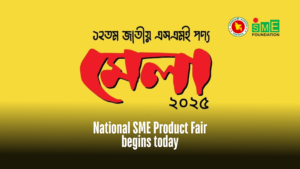
National SME Product Fair begins today
The curtain rises today on the 12th National SME Product Fair, a flagship exhibition spotlighting the rapid expansion of Bangladesh’s small and medium enterprise sector. The event, organised by the SME Foundation, has become a cornerstone of the country’s entrepreneurial calendar, offering a platform where innovation, tradition, and business ambition converge. The SME Foundation, which is steering the initiative, underscored its ambitions to widen market reach, accelerate innovation, and strengthen the country’s entrepreneurial base. Officials emphasise that the fair is not merely a showcase of products but a comprehensive programme designed to connect entrepreneurs with consumers, investors, and policymakers, thereby strengthening the ecosystem that sustains small and medium enterprises. The eight-day programme is being staged at the Bangladesh-China Friendship Conference Centre in Sher-e-Bangla Nagar, Dhaka, drawing participants from across the nation’s diverse business landscape. Organisers expect a vibrant atmosphere, with stalls and exhibitions reflecting the creativity and resilience of entrepreneurs from every corner of the country. More than 350 small and medium enterprises are set to participate in this year’s exhibition, with women-led ventures accounting for roughly 60 percent of the total. This strong representation highlights the growing role of women in Bangladesh’s SME sector, a trend that has been steadily gaining momentum over the past decade. The stalls will represent a broad spectrum of industries, ranging from garments and traditional crafts to leather goods, agro-based processing, ICT solutions, light engineering, and herbal commodities. Such diversity underscores the sector’s contribution to industrial diversification and inclusive growth. Financial inclusion is another key focus of the fair. The organisers said the event has been designed to advance access to finance, with daily sessions pairing entrepreneurs and bankers. Close to 30 banks and financial institutions will be present to advise business owners on securing SME credit facilities. In certain cases, loan applications may even be processed directly at the venue, offering entrepreneurs immediate opportunities to expand their businesses. Knowledge exchange will also be a central feature, with six specialised seminars scheduled between December 8 and 10. Discussions will address export diversification, innovation strategies, halal certification standards, intellectual property protection, blended financing models, and the development of a skilled workforce. Organisers say these sessions are intended to equip entrepreneurs with regulatory, technical, and financial insights essential for long-term growth. Officials emphasise that the initiative is designed not only to showcase domestic products but also to equip SMEs with the tools, knowledge, and financing opportunities needed to scale up in a competitive environment—both locally and internationally. “Many SME entrepreneurs face challenges in marketing their products despite high-quality production. This fair serves as a platform to bridge that gap,” said Md Musfiqur Rahman, chairperson of the SME Foundation. A key highlight of the fair will be the presentation of the National SME Entrepreneur Awards 2025, recognising six outstanding entrepreneurs in the micro, small, medium, and startup categories. These awards are intended to celebrate excellence, inspire others, and highlight the transformative potential of SMEs in Bangladesh’s economy. Since its inception in 2012, the SME Foundation has organised 11 national and 93 regional fairs, supporting over 5,000 entrepreneurs. According to the foundation, past fairs have generated Tk 57 crore in direct sales and Tk 93 crore in product orders, demonstrating the tangible economic impact of such initiatives. The event’s chief patron is The City Bank, with other sponsors including BRAC Bank, Eastern Bank, Bank Asia, IDLC Finance, LankaBangla Finance, United Finance, and IPDC Finance. Their involvement reflects the growing interest of financial institutions in supporting SMEs, which are widely recognised as engines of job creation and innovation. Only locally produced goods will be allowed for display and sale, with no foreign or imported items permitted. This policy ensures that the fair remains a platform dedicated to promoting domestic industries and encouraging consumers to support homegrown businesses. By combining exhibition, financial support, training, and policy dialogue, the fair continues to position itself as a key national initiative to elevate Bangladesh’s SME ecosystem—a sector seen as crucial for job creation, inclusive growth, and industrial diversification. The fair will remain open to visitors until December 14, from 10 am to 9 pm daily—with no entry fee. Written By Nibir Ayaan
Read More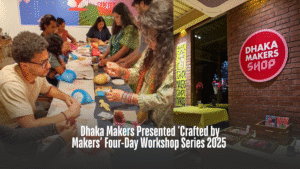
Dhaka Makers Presented ‘Crafted by Makers’ Four-Day Workshop Series 2025
Dhaka Makers presented ‘Crafted by Makers’ – a four-day workshop series held from November 13 to November 16, 2025, at Shala Neighbourhood Art Space, Aloki. A total of 14 creative workshops were hosted that celebrated art, craft, and design in all their forms. Each day of the workshop series featured engaging and distinctive session led by skilled artisans for participants. The four-day event hosted various sessions: terracotta jewelry workshop, robotics workshop, candle-making workshop, miniature model-making workshop, origami workshop, and many more. The curated sessions aimed to showcase Bangladesh’s vibrant arts and craft culture while promoting learning, play, and mindful creation for all ages, especially, children and teenagers. Every instructor paced the activities carefully so participants could follow along comfortably and absorb the making process. There were also some sessions designed for older children and adults such as the ‘Hand-Knotting Tapestry with Boho’, facilitated by Nazneen Nahar Smrity. This workshop blended craftsmanship and creativity. The workshop was perfect for anyone who loves tactile art and wants to experience the meditative rhythm of weaving, and learn the skills of a century-old tradition. Other captivating session included the ‘Putli Puraan: Doll Making Workshop’, facilitated by Mita Muni. The workshop led participants to step into the enchanting world of traditional doll making. By the end of this workshop, participants acknowledged the process, skill, and the cultural value behind this underappreciated art form in Bangladesh, discovering its deep heritage and future potential for creative revival. One other fascinating session was ‘Candēla by Newton’s Archive’ facilitated by Rahnuma Ahsan Raima and team. Candēla was a hands-on candle-making workshop that celebrated Bangladeshi culture and craftsmanship, and the art of making. Inspired by the country’s natural palette – from monsoon earth tones to the aromas of native blooms – the edition blended local motifs, materials, and scents. Dhaka Makers remains committed to fostering creative growth in children and young minds, offering workshops that encourage experimentation, and introduce a vibrant world of new ideas and possibilities. Written by Tasmia Chowdhury
Read More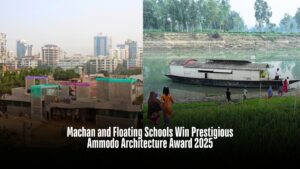
Machan and Floating Schools Win Prestigious Ammodo Architecture Award 2025
Two Projects from Bangladesh – Machan: Korail Community Platform in Dhaka by Paraa and the Floating Schools for Community Resilience by Shidhulai Swanirvar Sangstha in Pabna district, —have been named among the 26 global recipients of the 2025 Ammodo Architecture Award for their contributions to socially and ecologically responsible design. From the Ammodo, this year’s selection spans six regions: Africa, Asia, Europe, North & Central America, South America, and Southeast Asia & Oceania. The chosen projects address diverse urban and rural contexts, tackling issues such as housing, education, ecological restoration, and collective living. Awardees were selected by an international advisory committee consisting of six renowned architects and cultural professionals from around the globe: Joumana El Zein Khoury, Andrés Jaque, Anupama Kundoo, Floris Alkemade, Mariam Issoufou and Loreta Castro Reguera. Machan: Korail Community Platform, Dhaka The name – Machan, meaning ‘platform’ in Bangla, is Dhaka’s first community-driven permanent cultural and creative hub located in the Korail low-income settlement. It emerged from the “Korail: City of Culture” initiative, a sustainable urban development project led by architecture studio Paraa. Built collaboratively with Korail residents, youth groups, and community leaders, Machan transforms a former dumping ground into a vibrant cultural centre. The platform hosts a variety of social, cultural, and creative activities including: architectural design exhibitions, artwork displays, photography showcases, installation art, and performing arts. The platform collaborates with other organizations facilitating workshops on participatory planning, community mapping, and arts like indigo dyeing. The project establishes a much-needed, multifunctional open space that enables residents to gather, and participate in shared activities, effectively converting a former waste ground into a dynamic community hub. The project supports local cultural practitioners and connects their knowledge to global discussions on sustainability and the rights of marginalized communities. Floating Schools for Community Resilience by Shidhulai Swanirvar Sangstha, Pabna The “Floating Schools for Community Resilience” project by Shidhulai Swanirvar Sangstha primarily operates along the Gumani River in the Faridpur and Bhangura subdistricts of Pabna. The initiative brings schools to students in villages along the Gumani River, using a flexible fleet of boats for classrooms, health clinics, and training centers to ensure continuity of services during seasonal flooding. The floating schools lead consistent access to education. The initiative eliminates the need for students to travel to schools that may be inaccessible due to flooding, ensuring continued learning. The boats use solar energy to power onboard computers and other equipment, allowing for interactive learning. The boats can also be used as shelters during severe floods, ensuring continuous community support. Due to this initiative, over 22,500 students have graduated from the program so far, and it provides access to education for children who would otherwise have dropped out due to floods or economic hardship. The initiative ensures access to healthcare and training, even during crises, and has been replicated in other countries. The project has empowered women and girls through microloans and income-generating opportunities. The Ammodo Architecture Awards is an annual international prize presented to “advance socially and ecologically responsible architecture worldwide.” The Ammodo Architecture Awards was launched in 2024 by Stichting Ammodo, a Dutch foundation that supports art, science and architecture. The awards aim to “recognize and support architects and projects that address contemporary social and environmental challenges through innovative design and community engagement. Each recipient of Ammodo Architecture Award 2025 receives a grant to further develop their work. The complete list of 2025 awardees can be viewed on the Ammodo Architecture Award website. Written by Tasmiah Chowdhury photo courtesy: City Syntax, Shidhulai Swanirvar Sangstha
Read More
Global Recognition for Bangladeshi Architects
Bangladeshi architects have once again demonstrated their creative strength on the global stage, securing multiple honours at the prestigious VII Baku International Architecture Award. Organised by the Ministry of Culture of the Republic of Azerbaijan and the Union of Architects of Azerbaijan, with the endorsement of the International Union of Architects (UIA), the biennial competition has become a landmark event in the architectural calendar. This year’s edition attracted 270 applications from 38 countries, underscoring its reputation as a truly international platform for design excellence. The award is open to all qualified architects worldwide, offering opportunities for recognition across diverse categories. Against this competitive backdrop, five projects from Bangladesh stood out, earning accolades that highlight the country’s growing influence in contemporary architecture. BANGLADESHI WINNERS ACROSS CATEGORIES In Category B – Best Implemented Project of Residential Architecture, Architect Zishan Fuad Chowdhury won second prize for Neer – Vacation House, a project that blends modern design with contextual sensitivity. In the same category, Architect Mohammad Masud secured third prize for Meghrod – Sun and Cloud, a residential concept that celebrates light and openness. Bangladeshi architects also excelled in Category C – Best Implemented Interior. The Coca-Cola Office Interior by Architect Sharif Uddin Ahammed won second prize, recognised for its innovative approach to workplace design. Architect Shams Sanjida earned third prize in the same category for the Mak Design House, a project praised for its aesthetic coherence and functional elegance. In Category D – Best Non-Realised Project, Architect Sarawat Iqbal won second prize for Masjid Al Luqman, a design that reimagines sacred space with contemporary architectural language. These achievements reflect the breadth of Bangladeshi talent, spanning residential, interior, and conceptual design. STRUCTURE OF THE AWARDS The competition is divided into seven categories: A – Best implemented project of public architecture B – Best implemented project of residential architecture C – Best implemented interiors D – Best non-realised project E – Best implemented project in landscape architecture F – Best implemented project in rehabilitation and reconstruction of historic buildings G – Best publication in the field of architecture Each category recognises excellence in both realised and conceptual projects, ensuring that innovation at every stage of design is celebrated. PRIZES AND RECOGNITION The awards carry significant recognition and financial rewards. First prize winners receive 4,000 AZN (€2,240), a first-degree diploma, and a symbolic cup. Second prize winners are awarded 2,500 AZN (€1,400) and a second-degree diploma, while third prize winners receive 1,000 AZN (~€560) and a third-degree diploma. Beyond monetary value, the awards provide international visibility, positioning winners within a global network of architects and institutions. JURY AND CEREMONY The jury for the 2025 edition comprised distinguished architects from around the world: • Antonio Riverso (Italy), Professor, International Academy of Architecture • Michel Barmaki (Lebanon), Chairman of Barka Sarl • Nikos Fintikakis (Greece), UIA Jury Representative • Young-Keun Han (South Korea), President of the Korean Institute of Architects • Elbay Gasim-zada (Azerbaijan), Representative of the Organisers The results were announced at a ceremony on October 2 this year at the Four Seasons Hotel in Baku, Azerbaijan. The event reinforced Baku’s role as a hub for architectural dialogue, bringing together professionals from across continents. LEGACY AND GLOBAL REACH Since its inception in 2013, the Baku International Architecture Award has attracted architects from 53 countries, with more than 1,200 projects submitted between 2013 and 2023. Winners have hailed from Portugal, France, USA, Slovenia, Georgia, Japan, Russia, Morocco, Croatia, Italy, Bangladesh, Spain, Ukraine, Germany, Vietnam, Singapore, Kyrgyzstan, Greece, Malaysia, South Africa, Egypt, China, Iran, Kenya, UAE, Mexico, Romania, Poland, India, Brazil, and Azerbaijan. A unique tradition of the award is the symbolic gesture of sending a cup identical to that awarded to first-prize winners to France, where it is safeguarded at the headquarters of the International Union of Architects. This act underscores the award’s international spirit and its commitment to architectural heritage. Written by Nibir Ayaan
Read More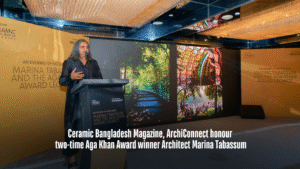
Ceramic Bangladesh Magazine, ArchiConnect honour two-time Aga Khan Award winner Architect Marina Tabassum
Ceramic Bangladesh Magazine, a publication of the Ceramic Manufacturers and Exporters Association (BCMEA), and ArchiConnect, a buildtech platform, honoured Architect Marina Tabassum on Saturday evening, November 8, 2025, Bangladesh’s only two-time winner of the Aga Khan Award for Architecture—one of the most prestigious awards in the world for architects. At the programme, held at the Renaissance Dhaka Gulshan Hotel, the globally acclaimed architect delivered a keynote speech titled “Between Erosion and Emergence”, highlighting different aspects of the projects that brought her international recognition. Before her keynote, Architect Jalal Ahmed, founder and CEO of ArchiConnect, explained why Marina Tabassum’s achievement should be celebrated and how significant it is. He said the Aga Khan Award for Architecture is considered the “Oscar for Architects,” and winning it twice is a phenomenal success for any architect in the world. Later, Marina presented details of her various projects worldwide. Bait Ur Rouf Mosque, completed in 2012 on the outskirts of Dhaka, was the project that earned her the prestigious Aga Khan Award for Architecture in 2016. “Built with locally sourced brick and devoid of traditional Islamic iconography, it offers a contemplative space where worshippers are bathed in natural light,” she said at the event. “The structure is not just a place of prayer—it’s a refuge for a dense, underserved neighbourhood.” She also shed light on one of her most celebrated recent projects, Khudi Bari, a modular, lightweight shelter designed for ultra-low-income populations. The structure, made of bamboo and corrugated metal, can be assembled quickly and relocated as needed. Earlier, Chief Adviser Professor Muhammad Yunus, in a public congratulatory message, echoed this sentiment: “We fondly recall your first Aga Khan Award in 2016 for the Bait Ur Rouf Mosque in Dhaka, a milestone that celebrated the timeless values of spirituality, community, and simplicity in architecture.” “That recognition marked the rise of a Bangladeshi voice of global significance, and your latest achievement further strengthens that legacy.” In 2025, Khudi Bari earned Tabassum her second Aga Khan Award for Architecture, making her the only Bangladeshi architect to win the honour twice. That same year, she was commissioned to design the Serpentine Pavilion in London—an international recognition of her ability to merge local wisdom with global relevance. Later, at the day, an engaging panel discussion was organised on “Marina Tabassum and the Aga Khan Award Legacy”. The session was moderated by Architect Mahmudul Anwar Riyaad, principal designer and director of DWM4 Architects. Distinguished panelists included Architect Professor Fuad Hassan Mallick, dean of the School of Architecture and Design (SoAD) at BRAC University; Architect Professor Zainab Faruqui Ali, chairperson of the Department of Architecture at BRAC University; and Architect Nahas Ahmed Khalil, principal designer at ARC Architectural Consultants. The event concluded with closing remarks by Moynul Islam, president of BCMEA. “We always look forward to creative minds like architects and the brilliance of Architect Marina Tabassum deserves to be celebrated.” Following the panel discussion, mementos were presented to the distinguished panelists and to Architect Moushumi Ahmed, the gracious host of the evening. The honorees—Architect Marina Tabassum, Architect Jalal Ahmed, and Moynul Islam, President of BCMEA—received exquisite woodprint artworks created by renowned artist Professor Anisuzzaman Anis of the Department of Printmaking, Faculty of Fine Art, University of Dhaka Written by CBM Desk
Read More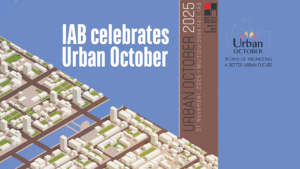
Urban October 2025: IAB Organises Daylong Event, Three-Day Exhibition
The Institute of Architects Bangladesh (IAB) on November marked Urban October 2025 with a day-long celebration at its Multipurpose Hall, bringing together students, professionals, and policymakers to reflect on the future of urban design in Bangladesh. Timed to coincide with World Architecture Day, World Habitat Day, and World Cities Day, the event began at 10:30 am with the opening of a three-day exhibition showcasing student urban design studio projects from architecture departments across IAB-accredited universities. Participating institutions include Bangladesh University of Engineering and Technology (BUET), Bangladesh University (BU), BRAC University (BRACU), Chittagong University of Engineering and Technology (CUET), North South University (NSU), American International University-Bangladesh (AIUB), Ahsanullah University of Science and Technology (AUST), Khulna University (KU), Shahjalal University of Science and Technology (SUST), Dhaka University of Engineering and Technology (DUET), Daffodil Institute of IT (DIT), Southeast University (SEU), Stamford University, State University, and the University of Asia Pacific (UAP). There was a roundtable discussion on “Shaping Cities: The Role and Future of the Urban Design Profession in Bangladesh” led by academicians. The exhibition offers a glimpse into the next generation’s vision for Bangladesh’s urban future, with models and visualisations of cityscapes, transport corridors, and public spaces. At 4:00 pm, the main programme commenced with a roundtable discussion titled “Interference to Planning: DAP”, led by Team Environment & Urbanisation from IAB’s 26th Executive Council. The session addressed concerns surrounding the Detailed Area Plan (DAP) and its implications for sustainable development, zoning, and citizen engagement. The theme for this year’s World Cities Day — “People-centred Smart Cities” —guided the evening’s discussions. A documentary presentation highlighted month-long Urban October activities, including editorial seminars and conventions. Experts and stakeholders then joined a panel discussion, followed by speeches from the chairperson, the chief guest. The event concluded with a vote of thanks. Held under the banner of Urban October, the celebration reaffirms IAB’s commitment to shaping inclusive, resilient, and well-planned cities. As Bangladesh continues to urbanise rapidly, today’s gathering serves as both a showcase and a call to action — urging architects to lead with vision, integrity, and public purpose. The World Cities Day 2025 event ended with the distribution of certificates. Programme Schedule: Location: IAB Office Date: November 1, 2025 Time: Exhibition: 10:30 am Main programme: 4:00 pm Written by Nibir Ayaan
Read More
An Artist’s Meditative Take on the Textile Crisis
On 10th October, Bengal Shilpalay’s Quamrul Hassan Hall made room for Yasmin Jahan Nupur’s solo exhibition to breathe in silence. Silence that carries the weight of unspoken resistance, forged over decades. Each corner is equipped with different kinds of soft sculptures and artworks, woven and drawn with bare hands. These sculptures will urge you to zoom in, squint, and at times, resist touching and feeling their texture. The space is surrounded by a variety of installations, including tapestry, jamdani woven in a grid-like matrix, a golden net made of zari threads, Bangla phrases stitched in muslin fabric, and hand-drawn textures and patterns. The sculptures, made from gentle materials like thread and wool, celebrate their natural malleability and softness. Her meticulously executed works on paper using only pen and watercolor draw viewers into their quiet depths. In contrast, Nupur’s brass sculptures defy expectation, transforming rigid metal into forms that appear almost supple. As one takes a closer look, they can find the artist’s sheer brilliance of witty and powerful juxtaposition of delicate threads and robust objects. One of the guests at the opening, globally famous architect Marina Tabassum, who won Aga Khan Award twice, reflected on the powerful presence of silence—describing it as an equally vital element in architecture, a space everyone strives to reach, yet few truly achieve in the process of creation. She observed that Nupur’s works embody that very quality, carrying a quiet strength despite being crafted from simple materials like strand and wool. The softness of Nupur’s sculptures and the intricacies of her work, in fact, carry a more concrete and unsettling truth—illuminating the fading textile legacy of Bengal. Behind these delicate forms lie the stories of countless artisans unable to continue their craft, disrupted not only by economic pressures but also by colonial legacies and ecological changes. A powerful installation in the exhibition was a dazzling hanging burqa. While the traditional burqa symbolizes modesty and concealment, Nupur reimagined it as a three-dimensional form embroidered with gold and silver zari threads—not as a symbol of elegance, but as a testament to distressed endurance. Nupur’s professor, Abul Monsur, recalls how her gentle demeanor during her time at the Fine Arts Institute, CU, fooled him into perceiving her as rather fragile. Her quiet resilience and unwavering devotion to her craft beneath that delicate surface only proved him wrong over time. Yasmin Jahan Nupur not only hails a heavy portfolio of glorious works but also became a household name in the international galleries. This second solo exhibition is Nupur’s careful documentation and a commitment to preserving the vanishing heritage of Bangladesh’s textiles. As visitors walk through the gallery, they are compelled to stop, gaze, and ultimately begin to unravel the silences behind each piece. “Even though the voice may be muted or just a soft whisper (mridu shor), the visitors must take the time to truly listen,” quotes curator Tanzim Wahab. “Unravelling Silence” is on view until November 22, every day from 4 to 8 PM, except Sundays, at Bengal Shilpalay. Written by- Fariha Hossain
Read More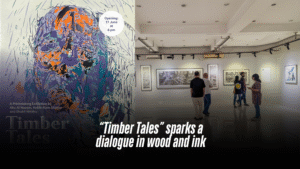
“Timber Tales” sparks a dialogue in wood and ink
The ongoing exhibition titled Timber Tales at La Galerie, Alliance Française de Dhaka, invites audiences to experience the collaborative journey of three emerging artists who explore memory, process, and material through the art of woodcut printmaking. Within the exhibition, a faint, earthy scent of wood and ink hangs in the air. Walking into the gallery, some might find themselves pausing longer than expected, tracing the grain of the wood, as if searching for their own stories between the lines. The exhibition features three artists—Rakib Alam Shanto, Shakil Mridha, and Abu Al Naeem—who express individuality through their woodcut prints. This contemplative exhibition is running from June 17 to June 25, 2025. Curated by the artists themselves, the exhibition reimagines the possibilities of woodcut as a medium. Here, the tactile intimacy of carved timber meets the visual language of reflection, nostalgia, and search. As you wander through the space, individual voices emerge. Shakil Mridha’s work, with its minimalistic yet profound geometric forms, feels like a contemporary ode to Bangladeshi folk art, skillfully abstracting familiar motifs. Rakib Alam Shanto’s large-scale black and white pieces command attention, a powerful revival of a classic tradition, showcasing his remarkable focus. And Abu Al Naeem’s pieces, often abstract, subtly reveal hidden figures, reflecting his continuous exploration of materials and techniques. Each artist, in their unique way, elevates woodcut beyond mere reproduction, transforming it into a medium of profound personal expression. And through that expression, each of their work reflects the heart of the creative process, where stories are carved into existence. At the heart of Timber Tales is a tribute to beginnings, to the mentor who shaped them, and to the space where it all began. Their acknowledgement of Professor Md. Anisuzzaman, whose generous guidance helped steer their vision, reveals the deeply collaborative ethos of the show. “This is where it all began—for the three of us,” reads a line from the exhibition note, underscoring the intimate bond between craft, community, and coming-of-age. In an era of digital immediacy, there’s something revolutionary about the deliberate slowness of woodcut. And the three artists have breathed new life into the ancient art of woodcut. More than just a technique, it’s a dialogue between human touch and natural materials. Each frame holds a deeper narrative of tireless dedication—the careful selection of wood, the precise cuts, the methodical inking, and the final, expectant press. Open to all and continuing until 25 June 2025, Timber Tales will leave visitors with more than just images on paper. In a city rushing to reinvent itself, the exhibition feels like a pause, a reminder of our roots with a sense of belonging—to the artists, to the materials, and to the timeless, meditative act of making. Written By Samira Ahsan
Read More
Royal (Vietnam) selects SACMI technology for a new slab line
The heart of the order is the new Continua+ 2180, equipped with cutting-edge digital decoration solutions Following installation of the new SACMI Continua+ 2180, Royal (Vietnam) becomes the first Asia-Pacific group to equip itself with SACMI technology for on-surface and through-body slab decoration. Moreover, the line is digitally coordinated with Deep Digital solutions, supplied here in an all-round configuration: two DHD digital wet decorators and a DDG digital grit-glue decorator. The new line will allow Royal to expand its range by creating new products with unmatched three-dimensional ‘material’ effects, all the strength and durability of ceramic, and a look that mirrors the aesthetics of natural materials. This important investment decision was not motivated by the innovative forming and decorating technology alone: equally crucial was SACMI’s ability to supply the complete plant, from body preparation (with two spray dryers and relative spray-dried powder conveying/storage systems) to firing in a high-efficiency roller kiln. Already strongly positioned on international markets, Royal has now – with SACMI – taken quality in these high-added-value segments to the next level. For example: the manufacture of ceramic countertops and furnishing accessories, with all the advantages Continua+ has to offer in terms of versatility, productivity and fully flexible control of size and thickness, in coordination with all the digital devices on the line.
Read More
Akij Tableware Art of Plating: Season 2 Crowns the “Plating Maestro”
The curtain has drawn on the remarkable journey of Akij Tableware Art of Plating: Season 2, the pioneering reality show that reimagined tableware as a medium for creative expression and showcased the artistry of modern plating. Following weeks of intense competition, visually striking presentations, and exceptional culinary performances, the grand finale—held on May 16, 2025—served as a fitting conclusion to a season defined by innovation and excellence. Md. Golam Rabby emerged victorious as the champion, taking home the Plating Maestro title along with BDT 10,00,000 along with a professional plating course, national media exposure, and an exclusive Akij Tableware dinner set. The competition was fierce, with equally impressive performances by the runners-up: Iffat Jerin Sarker, awarded Plating Icon (1st Runner-up), received BDT 5,00,000; Dr. Rawzatur Rumman, crowned Plating Maverick (2nd Runner-up), won BDT 3,00,000; Homayun Kabir and Nawsheen Mubasshira Rodela, honored as Plating Masterminds (4th and 5th place respectively), each received BDT 1,00,000. Hosted across Banglavision, RTV, Deepto TV, and streaming on Chorki, Akij Tableware Art of Plating: Season 2 captivated audiences nationwide with its unique blend of tradition and innovation. Contestants turned beloved dishes into visual and gastronomic masterpieces, judged on aesthetics, technique, and culinary understanding. Akij Tableware Art of Plating: Season 2 redefined how we experience food—elevating it from everyday necessity to a dynamic, visual art form. The show celebrated creativity, precision, and innovation, turning each plate into a canvas where flavor met form. Throughout the season, contestants pushed boundaries, transforming ingredients into stunning, story-driven presentations that delighted both the eyes and the palate. More than a competition, this season launched a new movement in culinary expression, inspiring audiences to rethink how food is seen, served, and appreciated. And the journey isn’t over—a new season is coming soon, promising fresh talent, bold ideas, and next-level plating artistry. To stay updated on what’s next, follow www.aop.com.bd and join the evolution of food into a true visual experience.
Read More
SACMI Group 2024: revenues surpass €1.7 billion
The yearly financial statement – approved yesterday, 16th May, during the Parent Company Shareholders’ Meeting – highlighted a net equity of more than one billion euros, growing margins and financial solidity. 2024 also saw the drafting of the first Group Sustainability Plan. Paolo Mongardi, President of SACMI, states: “Sustainability is the fuel of future competitiveness. We continue to invest in people and remain focused on the values that have guided SACMI’s enduring worldwide success” Imola, 17th May 2025 – SACMI closes 2024 with sales revenues of 1.728 billion euros. Despite the complex international economic and geopolitical backdrop, the company’s economic and financial fundamentals proved to be sound. For the first time, net equity exceeded one billion euros (1.055 billion, +172 million compared to 2023) while EBITDA settled at over 323 million euros and EBIT at 236 million. Net profit exceeded 200 million. These were the highlights of the Consolidated Financial Statement, presented yesterday evening, 16th May, at the Parent Company’s (SACMI Imola) Shareholders’ Meeting. “2024 was a solid year that went beyond expectations”, pointed out the President, Paolo Mongardi. “SACMI’s forward-thinking strategy rests on solid foundations and fully embraces the global drivers of digitalization and sustainability”. The year saw a continued focus on the core businesses, confirming the sterling reputation of – and customers’ confidence in – SACMI products across all sectors. In parallel with the to-be-expected slowdown in the ceramic sector – the result of international tensions and the sluggish global construction market – the Rigid Packaging, Advanced Technologies, Packaging & Chocolate sectors all performed excellently, driven by highly dynamic markets receptive to innovation. Investment remained consistently high in 2024 at 71 million euros, in line with the previous year, with a strong focus on innovation (276 new patent applications in 2024 alone, over 6,200 in the Group’s history) and training (over 94,000 hours). In parallel, SACMI confirms its role as a key player in the manufacturing industry’s ecological transition: during the year it presented innovative firing processes (e.g. electric), new process control solutions (thanks also to the acquisition of a majority share in Italvision in 2024), plus new eco-compatible standards, processes and materials in the packaging sector. “Sustainability is the key to future competitiveness”, explains President Paolo Mongardi. “We continue to invest in people by focusing on our values, which have consistently guided SACMI to worldwide success.” The green commitment is also evident at Governance level: the obligations of the new European CSRD (Corporate Sustainability Reporting Directive) were brought forward to 2024 and the first Group Sustainability Plan – an ambitious project that details actions and goals along the entire value chain, from suppliers to local communities – was drawn up. In the ESG sphere, SACMI has strengthened monitoring of indirect emissions linked to the use of its products and plants: this is part of an approach that centers on eco-design and the entire product life cycle to ensure processes are truly circular and impacts are minimized. The share of self-produced renewable energy is also growing (2.6 million kWh), the goal being to progressively decarbonize production facilities. On the employment front, the Group had a total of 4,756 employees at the end of 2024, with over 50% of new hires aged under 30. Close collaboration with universities and research facilities also continued. Ties with local communities – a part of SACMI’s DNA since its founding – became even stronger in 2024, with 90% of procurement networks consisting of local suppliers. Over the three-year period, the company also donated 2.4 million euros to healthcare, educational, safety, inclusion, sports and cultural projects. The year 2024 was a special one for SACMI, with the company reaching the milestone of its 105th anniversary. “We enter 2025 aware of not just the challenges but also the opportunities”, concludes the President, Paolo Mongardi, “with all the confidence that only a long history of innovation, solidity and responsibility can provide”.
Read More
Inauguration of “Selections” at Kishoreganj
AkijBashir Group has recently expanded its footprint with the launch of a new showroom of its brand emporium, Selections, in Kishoreganj. Guided by the motto – “Select from the Best”, Selections was first introduced in October 2022, with the vision of offering customers a one-stop destination for all products under the AkijBashir Group umbrella. Prior to this, six flagship showrooms were inaugurated in key locations across the country—Banani in Dhaka, Agrabad Access Road in Chittagong, Gazi Burhan Uddin Road and Pathantula in Sylhet, Shimultola in Savar, and Keya Hall Road in Tangail. Since its inception, Selections has steadily earned the trust and attention of a wide customer base. To carry forward this momentum, the latest showroom has been launched in Dubail More, near Gaital Bus Stand, Sadar Kishoreganj. The store showcases a wide-ranging collection of ceramic tiles, boards, doors, sanitaryware, bathware, and tableware —bringing all of AkijBashir Group’s renowned brands under one roof. The inauguration ceremony was graced by the presence of Mohammod Khourshed Alam, Chief Operating Officer of AkijBashir Group, who officially inaugurated the showroom by cutting the ribbon. Distinguished guests from the group were also in attendance, including Mohammed Ashraful Haque, General Manager of Sales at Akij Ceramics; Md. Shahriar Zaman, Head of Marketing; Bishwajit Paul, Head of Sales at Rosa; and Md. Hamidur Rahman, proprietor of HS Tiles and Sanitary Gallery. During the event, Mr. Mohammod Khourshed Alam shared, “Our vision with ‘Selections’ has always been to bring the finest AkijBashir Group products under one roof, helping customers elevate their interiors. The Kishoreganj showroom is another step in that direction, offering a wide selection of premium tiles, sanitaryware, faucets, boards, and doors—all curated for discerning buyers”
Read More
Global Spotlight: CERAMICS CHINA 2025 Debuts First 720+ Exhibitors List!
Marking its 39th edition, CERAMICS CHINA—the world’s largest annual event for ceramic equipment and materials—will grandly open in Guangzhou on June 18th-21st Hundreds of exhibitors from over 20 countries and regions will be spread across SEVEN exhibition halls in Area A of the Canton Fair Complex, strategically organized by product categories and business types. Hall 1.1 and Hall 2.1 feature decorative materials, raw and auxiliary materials, refractories, and wear-resistant materials; Hall 3.1 is a concentrated display of foreign pavilions, international enterprises, and well-known brands; Hall 4.1 and Hall 5.1 mainly focus on digital and intelligent technologies, automation equipment, abrasive, tools, and spare parts; Hall 6.1 gathers the most representative equipment enterprises for ceramic tableware and sanitaryware; Hall 8.1 will highlight tile design, innovative processes, and advanced materials. By late April, Halls 1.1-6.1 are fully sold out, and Hall 8.1 is 90% booked with limited space remaining. SECURE YOUR BOOTH NOW! CERAMICS CHINA is not only the exhibition of the largest scale of its kind in the world, but also the most comprehensive in terms of exhibit variety. It offers an all-encompassing range of equipment, materials, accessories, and services—covering the entire production process from raw material processing to finished product packaging and warehousing. One can find advanced equipment, cutting-edge technologies, and innovative solutions tailored to their production needs at CERAMICS CHINA whether it’s for building ceramics, ceramic sanitaryware, ceramic tableware, art ceramics, garden ceramics, or even electrical ceramics, high-tech ceramics, glass, or stone product. As of May 5th, the total number of registered exhibitors has exceeded 720. To facilitate visitors in accessing exhibitor information and planning itineraries in advance, the organizer has decided to release the first batch of exhibitor list to global ceramics industry professionals ahead of schedule. Click to download CERAMICS CHINA 2025 Exhibitor List CERAMICS CHINA attracts industry professionals from across China and around the world annually with its massive scale, numerous exhibitors, diverse exhibits, and exciting events. The previous edition (2024) accommodated 81,858 visits of visitors and buyers from 72 countries and regions. It is projected that this year’s exhibition will draw attendees from over 80 countries and regions, with total participation expected to reach 100,000 visits. June 18-21, Join us in Guangzhou. Don’t miss out!
Read More
RAK Ceramics Unveils Flagship Showroom in Chittagong
RAK Ceramics, the world’s number one multinational tiles brand, has inaugurated a flagship showroom in Kazir Dewri, the heart of Chittagong. With a unique combination of world-class premium tiles, sanitary ware and modern bath solutions, RAK Ceramics is ready to transform customers’ dream homes or modern workplaces. RAK Ceramics’ new showroom is designed to offer a unique experience of sustainable quality, a touch of luxury, and cutting-edge design. Location: H. Tower, 889, Noor Ahmed Road, Kazir Dewri, Chittagong.
Read More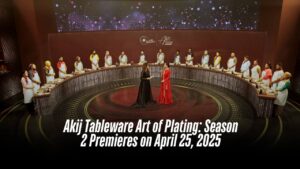
Akij Tableware Art of Plating: Season 2 Premieres on April 25, 2025
Get ready for Akij Tableware Art of Plating: Season 2, premiering April 25, 2025, and turning food into art! Airing weekends on Bangla Vision at 8:15 PM, RTV at 7:10 PM, Deepto Television at 9:30 PM, and streaming on Chorki with new episodes every Friday and Saturday, this vibrant reality show celebrates Bangladesh’s culinary soul. Rooted in Bengali traditions of family and hospitality, contestants transform dishes like fish curries and creamy dal into visual poetry, blending heritage with modern flair. Following its 2022 debut, Season 2 brings high-energy challenges and showcases local talent, from aspiring chefs to home cooks, competing for the “Plating Maestro” title. The grand prize includes BDT 10,00,000, a professional culinary course, national media exposure, and an exclusive Akij Tableware dinner set. With a BDT 20,00,000 prize pool, runners-up and top participants earn cash, certificates, and recognition. Guided by renowned chef Daniel C. Gomez, contestants craft edible masterpieces, judged on aesthetics, technique, and culinary insight after auditions at Hatirjheel Amphitheater. Tune in to Art of Plating: Season 2 to witness a movement redefining dining as a feast for the eyes and soul, where every plate tells a story!
Read More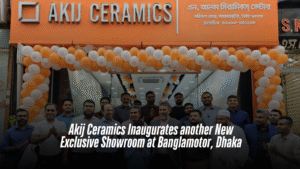
Akij Ceramics Inaugurates another New Exclusive Showroom at Banglamotor, Dhaka
Akij Ceramics, the leading brand in Bangladesh’s ceramic tile industry, has reinforced its market presence with the grand opening of another exclusive showroom at Banglamotor, Dhaka—a prime hub for the country’s tile market. A six-time consecutive winner of the Best Brand Award and Super Brand Award, Akij Ceramics continues to set industry benchmarks through innovation, superior quality, and an unwavering commitment to its “Promise of Perfection.” Staying true to its customer-centric approach, the brand has inaugurated its newest business associate showroom, “N. Alam Ceramic Centre,” located at 2/1 Poribagh Road, Banglamotor, Dhaka. The inauguration ceremony was held on April 17, 2025 (Thursday), with Mohammad Khourshed Alam, Chief Operating Officer of Akij Bashir Group, presiding as the chief guest. Distinguished attendees included Mohammed Ashraful Haque, General Manager (Sales) of Akij Ceramics; Md. Shahriar Zaman, Head of Marketing, AkijBashir Group; Bishwajit Paul, Head of Sales (ROSA); and Mohammad Noor A Alam Bhuyan, proprietor of N. Alam Ceramic Centre. Designed to offer an unparalleled customer experience, the showroom features cutting-edge product displays showcasing Akij Ceramics’ latest tile designs and size variations. Enhanced with modern furniture and innovative display tools, the spacious outlet ensures a premium in-store experience. With over 130 state-of-the-art showrooms across Bangladesh—both company-owned and business-associated—Akij Ceramics stands as the largest tile manufacturing and distribution brand in the country. The inauguration of the Banglamotor showroom marks another milestone in the brand’s journey to deliver flawless service and excellence to its valued customers.
Read More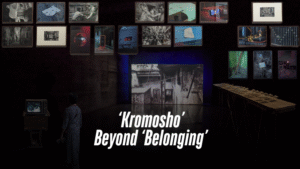
‘Kromosho’: Beyond ‘Belonging’
In the middle of the 2000s, a young Munem Wasif started sifting through Old Dhaka’s veins with his aged friend Zenit—a mechanical artifact from the Soviet era. His 2012 photography masterwork “Belonging,” which would revolutionize visual storytelling in Bangladesh’s art scene, was the culmination of a journey that began with this. Similar to the constantly flowing dark waters of Buriganga, which has seen Dhaka undergo changes, Wasif’s own artistic endeavors have veered through several stages throughout time. His work has continuously pushed audiences to look past the obvious, from “Seeds Shall Set Us Free” to “Collapse.” But despite all of these adventures, one thing stayed the same: his strong, unwavering bond with Old Dhaka. Munem Wasif is doing a solo show in Dhaka after nearly 16 years. Titled “Kromosho,” the show is currently ongoing at the capital’s Bengal Shilpalay. Tanzim Wahab served as the exhibition’s curatorial advisor, Iftekhar Hassan as a project assistant, and Dehsar Works as the architectural designer. It is open to everyone and will end on May 31, 2025. “I felt like something was lacking as soon as ‘Belonging’ was released. I felt that I just got the surface of the people and their celebrations; I couldn’t reach the core of their daily existence, the ‘life’ of Puran Dhaka. That’s when I thought of creating “Kheya”l. This exhibition is like a testament to my last two decades of transformation,” remarked Wasif when asked about “Kromosho”. The opening at Bengal Shilpalay was buzzing with energy as art lovers gathered to witness what promises to be one of the most memorable exhibitions in recent times. The exhibition unfolds like a carefully composed symphony in three movements. Starting from Wasif’s ethereal black-and-white photographs from the ‘Belonging’ era, now in dialogue with new color works from ‘Stereo.’ This juxtaposition creates a fascinating tension between past and present, memory and reality. At ‘Kheyal,’ the filmic meditation about what pulses through Old Dhaka’s veins. At ‘Shamanno’ and ‘Paper Negative,’ the installations blend documentation with imagination, challenging our perceptions of what is real and what is remembered. From a critical viewpoint, Old Dhaka represents a ticking time bomb—overcrowded and decaying, it’s an ugly relic of our greed and collective neglect. But Wasif’s work reveals depths hidden in plain sight: the “life” amongst all these. Beyond the obvious chaos lies a world of hidden poetry. This is what ‘Kromosho’ captures so brilliantly—not just images of a place, but its very essence. The exhibition becomes a mirror, asking questions about what we preserve and what we discard in our relentless march toward modernity. In an age of rapid urbanization and cultural amnesia, Wasif’s work serves as both archive and elegy, reminding us of some stories that cannot be captured through cameras or words. To experience its truest essence, you have to be there in flesh and psyche. As visitors move through the gallery, they’re invited not just to see, but perhaps to introspect. In this sense, ‘Kromosho’ transcends being merely an art exhibition; it becomes a conversation, a homecoming, and, most importantly, a call to witness.
Read More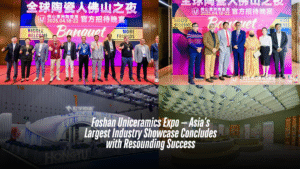
Foshan Uniceramics Expo — Asia’s Largest Industry Showcase Concludes with Resounding Success
2025 Foshan Uniceramics Expo Concludes Successfully, Global Ceramic Industry Gathers for the Event. From April 18 to 22, the 2025 Foshan Uniceramics Expo was successfully held at the Foshan Tanzhou International Convention and Exhibition Center. As the biggest ceramics expo in Asia and a benchmark for the industry, this year’s event brought together over 600 brands from the ceramic, sanitary ware, and equipment & materials sectors, covering the entire industrial chain and showcasing the world’s most cutting-edge new products, designs, technologies, equipment, and materials. For this year’s exhibition, the international participation reaches new heights. 2025 Foshan Uniceramics Expo attracted overseas brands from Italy, Turkey, Japan, Germany, Australia, and other countries, with Indonesian ceramic brands making their debut as a group. The equipment and materials section highlighted its international appeal, featuring continued participation from leading companies in Italy, Germany, Turkey, and other nations, along with new exhibitors from additional countries. Moreover, professional buyers from 85 countries and regions attended, including distributors, traders, engineering firms, and ceramic manufacturers, further solidifying the exhibition’s global influence. Foshan Uniceramics Expo remains committed to its mission of “Bridging world ceramics to China, and China’s ceramics to the world.” Moving forward, it will continue to foster deeper exchanges and cooperation in the global ceramics industry, injecting new vitality into its international development. Stay tuned for the next edition!
Read More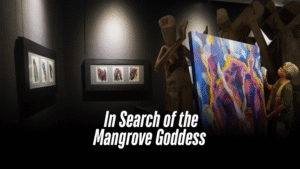
In Search of the Mangrove Goddess
Exploring the Sundarbans’ cryptic mangroves may be a weird, larger-than-life experience. When danger occurs in this wide wilderness, instinct frequently prompts one to seek spiritual protection. In such cases, the Sundarbans’ guardian spirit—Bon Bibi or Bono Bibi—is invoked. Bon Bibi is revered by the local forest dwellers as the divine guardian of the region’s treacherous environment. From April 4 to April 20, the Kalakendra gallery at the capital’s Lalmatia featured “In Quest of Bono-Bibi,” a mixed-media solo exhibition by artist Saidul Haque Juise. Juise, known for his precise craftsmanship, bright masks, and three-dimensional compositions, returned with a solo display following a long absence. Bon Bibi’s mythology is unique in that it combines both the Islamic and Hindu traditions, and it is commonly held that invoking her name in times of crisis promises divine assistance. The stories related to Bon Bibi are woven in a rich tapestry of mythology, which prodded Juise’s psyche when he was a child. Later in life, deeply touched by the Sundarbans’ environmental deterioration, he created this body of work as a lament and devotion to nature. This anthology, with its recurring themes of environmental concern and political overtones, combines lyrical extracts from folklore or shloks related to Bon Bibi with his own storytelling. The birth of these artworks dates back to the COVID pandemic. A time when despair loomed large. It was during this emotional upheaval that the artist Juise channeled his sorrow, frustration, and fear into a series of expressive sketches. Using vibrant shades of black, green, red, and blue— which are reminiscent of traditional Bangladeshi folk pottery— Juise stained his pages with raw emotion. Later, by combining various materials, such as twisted metal wires, paint, ink, handmade paper, newspaper pieces, etc., Juise enhanced the series even further. He was able to convey Bon Bibi’s holy force and the forest’s ethereal essence through these components. His line drawings smoothly blend with his pen and ink pieces to create complex collages that have a vibrant yet delicate vibe. In the meanwhile, the collection gains a tactile, even unearthly quality from his wire sculptures. The series gives viewers a deep feeling of Bon Bibi’s pervasive atmosphere. Along with his technical finesse, Juise added a unique Bengali flavor to the pieces. He skillfully combined the forms of people, animals, and insects to create flowing silhouettes that convey both motion and motionlessness. These shapes convey a duality: sadness that is subdued yet evident and fury that is controlled but strong. In doing so, Juise creates a collection of work that is both visually pleasing and profoundly significant by balancing artistic form with emotional weight. “In Quest of Bono-Bibi” stands much like an artistic diary that procures the artist’s personal reflections, cultural memory, and the urgent call for ecological reverence. It bridges folklore and modernity, spirituality and artistry—ultimately offering a visual testament of healing and harmony between humans and the natural world.
Read More
Institute of Architects Bangladesh Brings Pohela Boishakh to Life on Its Premises
The Institute of Architects Bangladesh (IAB) welcomed the Bengali New Year in vibrant style, hosting its first-ever Pohela Boishakh celebration on its premises. Titled “Esho Mati Notuner Ahobane”, the event was a colourful and cultural affair that reached beyond the architectural fraternity. Architects’ spouses, children, and extended family were warmly welcomed. The idea was simple: to celebrate the new year and the people who stand behind the scenes of every great architect. Festivities began at 3 PM, as the rhythmic beat of traditional dhol set the tone. Architect Asif M Ahsanul Haq, Convener of the Bengali New Year Celebration Committee, opened the event, inviting everyone into the heart of the celebration. With warm smiles and colorful attire, attendees embraced the spirit of community and enjoyed the laughter and tradition with their extended family. The IAB grounds were transformed into a festive fair, with interactive cultural corners drawing crowds throughout the day. Children gathered around clay artists and potters, their hands deep in clay, learning to mold traditional shapes. Nearby, shitol pati (cooling mat) weavers demonstrated their age-old techniques, encouraging young participants to try their hand at weaving. A painting zone was also set up, where children were free to create without the pressure of competition. Their artwork was later displayed, showcasing unfiltered creativity and color. Laughter echoed from the crowd gathered around the Putul Nach (puppet dance) and magic show, where entertainment delighted audiences of all ages and reminded everyone of the charm of folk performances. At the heart of the event was a bustling Meena Bazaar, alive with the flavors of tradition. Stalls served familiar favorites—muri, murki, naru, moya, samosa, beguni, lemonade, and kacha aam er shorbot—while architects and their families showcased their creative talents through stalls featuring homemade food, traditional sarees, books, paintings, and handmade crafts. It was a beautiful blend of personal passion and cultural pride. Major industry sponsors, including Berger Paints Bangladesh, Italiano Marble and Granite, Indigo Marble and Granite, Tilottoma Group, and Space Couture, added their own festive touch. Their vibrant booths offered free face art, portrait sketches, and a variety of Bengali snacks and refreshments, contributing to the lively spirit of the day. As the sun began to set, the stage came alive with folk songs and traditional dances performed by members of the architectural community. The soulful performance by Sadhu Songo, a renowned Lalon music troupe, captivated the audience with its spiritual melodies. The evening came to a heartfelt close with a collective rendition of “Esho He Boishakh,” followed by heartfelt closing remarks from Professor Dr. Abu Sayeed M Ahmed, President, and Professor Dr. Masudur Rashid, General Secretary of the Institute of Architects Bangladesh. The night concluded with a warm, memorable dinner under the open sky—an evening to remember. This landmark celebration was not just about welcoming a new year, it was about embracing shared roots, honouring cultural expression, and celebrating the bonds that make up the architectural community.
Read More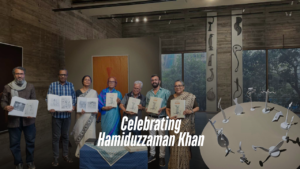
Celebrating Hamiduzzaman Khan
From 31 January to 15 March, the first-floor gallery of the capital’s Bengal Shilpalay transformed into a mesmerizing display of incredible sculptures and paintings. Titled “Hamiduzzaman Khan,” the spectacular exhibition organized by Bengal Arts Programme honored the life and works of Hamiduzzaman Khan, one of Bangladesh’s most distinguished sculptors. The inauguration took place on Jan 31, graced by the presence of artist and art writer Mustafa Zaman; the director general of Bengal Foundation, Luva Nahid Choudhury; prominent Bangladeshi-Spanish artist Monirul Islam; and architect Mustapha Khalid Palash. Neatly curated by the esteemed Mustafa Zaman, the exhibition was a visual diary of Hamiduzzaman’s lifelong dedication to modern experimental art, which provided visitors with a profound insight into his artistic journey. Some pieces were delicate and intricate, while others were monumental and commanding. His use of geometric abstraction and semi-abstract forms is a testament to his imagination and craftsmanship. The artist has spent decades exploring new artistic dimensions. His ability to transform objects into unique sculptural forms has captivated art lovers even beyond borders for decades. The exhibition at Bengal Shilpalay featured quite a big collection of his artworks, showcasing his talent across multiple mediums including metal and stone sculptures, watercolor paintings, and acrylic paintings inspired by his sculptures. It also showcased some of his sketches, exhibition catalogues, and books on his art. The curator, Mustafa Zaman, praised the artist’s innovative approach to form and structure. He remarked, “Hamiduzzaman sir has consistently delved into the essence of objects, transforming and redefining their shapes in extraordinary ways. His creations showcase decades of dedication and artistic exploration, reflecting a deep commitment to pushing boundaries and reimagining possibilities.” Zaman highlighted the artist’s ability to blend tradition with experimentation, resulting in works that are both timeless and groundbreaking. Hamiduzzaman’s art, he noted, stands as a testament to his relentless pursuit of reinterpreting the familiar into something profoundly unique and thought-provoking. Prominent architect Mustapha Khalid Palash, a guest at the inauguration, shared his admiration, saying, “His simple yet deeply impactful works remain a source of inspiration. This exhibition beautifully celebrates his artistic legacy, offering younger generations a chance to reflect on and reconnect with their cultural roots. It’s a tribute to his enduring influence and a reminder of the power of art to bridge the past and present.” Born in Kishoreganj in 1946, Hamiduzzaman Khan studied at Dhaka Art College (now the Faculty of Fine Arts, Dhaka University) and was mentored by legendary artists like Zainul Abedin, Abdur Razzaque, and Mustafa Monwar. He transitioned from painting to sculpture, pioneering sculpture parks in Bangladesh and leaving behind an impressive legacy. Some of his most popular sculptures include “Shangshaptak” at Jahangirnagar University, “Flying Bird” at the World Bank Dhaka office, “Jagrotobangla” in Brahmanbaria, “Freedom” at Krishibid Institute, and “Peace Bird” at TSC. Expressing his gratitude, Hamiduzzaman Khan spoke about his journey as an artist. “Creating modern experimental artworks in various mediums has been my passion for many years. It hasn’t always been easy, but I am grateful for the support of my peers and art lovers.” The great artistic mind further added, “I am almost 80 years old, but I want to continue making art as long as my mind and body permit!’
Read More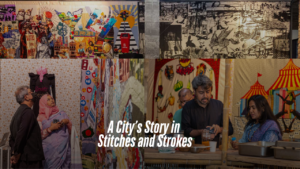
A City’s Story in Stitches and Strokes
Dhaka’s rapid urbanization is impossible to ignore. This city of relentless energy and transformation is a place where tradition and modernity collide amidst its bustling streets and ever-changing skyline. As the economic heart of Bangladesh, it draws thousands seeking better opportunities. But this comes at a cost: overcrowding, strained resources, and a growing disconnect between the old and the new. Against this backdrop, ShohorNama Dhaka Episode II sought to explore the city’s complexities through art. Launched in early 2024, the project brought together visual artists, architects, artisans, and students from the University of Dhaka’s Faculty of Fine Art to create a tapestry of urban narratives. And the exhibition of this project took place from February 15 to 25 at the level 4 under construction space of the capital’s Bengal Shilpalay. The exhibition was inaugurated by H.E. Marie Masdupuy, Ambassador of France to Bangladesh, on February 15, 2025. Titled after the project name, the multidisciplinary exhibition wove together the threads of urban life, resilience, and creativity. Presented by the Bengal Arts Programme in collaboration with the Britto Arts Trust, ShohorNama II was a visual love letter to Dhaka, its people, and their stories. From large appliqué tents to wood-cut prints, installations, and performance art, it was a celebration of Dhaka’s artistic topography. At its core, ShohorNama was about storytelling. One of the standout features is the Pakghor Project, a community kitchen born out of necessity during the devastating floods of 2024 in the Khulna region. Pakghor provided warm meals to 500 villagers for a week. But it became more than just a kitchen—it became a space for shared stories, resilience, and hope. The Dorjikhana Project takes a different approach, focusing on textiles and their cultural significance. Through appliqué and embroidery, artists explore the connection between traditional practices and the modern garment industry. The project also draws inspiration from Bangladesh’s fading circus traditions. Resulting in a stunning collection of textile art that speaks to both the past and the present. Another striking element of ShohorNama is its use of tents. Historically, tents have symbolized temporary shelter for nomadic communities, and in this exhibition, they represent the fluidity of migration—whether due to natural disasters, economic hardship, or political unrest. The Big Tent installation captured this impermanence, reflecting the challenges faced by marginalized communities. The exhibition also highlighted the collaborative spirit of the project. Workshops with the University of Dhaka’s Department of Printmaking and Department of Craft allowed students to contribute to large-scale works, such as woodcut prints and appliqué pieces. These workshops not only honed technical skills but also fostered a sense of shared purpose, blending individual creativity into a cohesive vision. The exhibition was a feast for the senses! As Dhaka continues to evolve, exhibitions like “ShohorNama Dhaka Episode II” remind us of the importance of preserving our stories and traditions. Through art, we can find common ground, build resilience, and imagine a better future.
Read More
Where Artist and Audience Intertwined
Amidst the quietness of Lalmatia’s Block F lies Shunno Art Space—like multidisciplinary artists, it’s also multidisciplinary in character. Limited in floor area but with an illimitable heart, the space adorns exhibitions, has a printing workshop set up, and has a café—intertwined. From February 15 to 22, this cozy space hosted artist Sanjid Mahmud’s solo exhibition “Tracing The Distance.” The week-long exhibition witnessed a vibrant crowd, and the inauguration was graced by eminent artistic figures Hamiduzzaman Khan and Mustafa Zaman. “Exhibition visitors observe art passively, only admiring the finished works. They only view; they don’t paint. But here, they were active participants. They picked up brushes and poured their emotions into the canvasses. Even those who don’t know how to draw found themselves painting. Their raw, unfiltered expressions became the foundation. Then, I stepped in, adding my artistic intervention, blending their spontaneity with my vision.” These words from the artist Sanjid himself perfectly procure the zeitgeist of “Tracing the Distance.” Sanjid Mahmud’s “Tracing the Distance” was an artistic co-production between the artist and the exhibition visitors that prioritized real-time cooperation and process over finality. Art, being a collaborative enterprise, carries remnants of prior forms by combining individual expression with common experiences. However, Sanjid Mahmud’s initiative changed the attention away from linguistic borrowing and toward overlapping artistic expressions in the moment, resulting in a dynamic interplay between creator and participant. Visitors at Shunno Art Space were greeted with empty canvases and encouraged to add spontaneously. The act of production was valued over passive viewing, encouraging people to leave their mark on the canvasses however they liked, be it sketchy motions or painterly strokes, regardless of their creative ability. This fun and engaging method relieved the pressure of normative practices, allowing for raw, unfiltered expression. Sanjid Mahmud then stepped in, responding to these inputs without striving for a certain style result. The end result was a body of work that defied decisive conclusion, undermining modernist conceptions of linear progression and chronological time. The title of the exhibition, “Tracing the Distance,” emphasized its purposeful break with the logic of modernity, which minimizes artists’ territorial consciousness and frequently limits them to historical circumstances. Through the process of collaborating with his audiences, Sanjid Mahmud challenged the conventional understanding of art as a “significant form” or a refined praxis. In order to reveal the fluid, communal character of creativity, he instead opened the gallery’s “white cube.” By means of this collaborative approach, the artist stimulated a reconsideration of the connections among art, artists, and the art community. Thus, Shunno Art Space transformed into a place of reflection where both appreciation and creation are rethought. By emphasizing the act of doing rather than observing, “Tracing the Distance” questioned established hierarchies and honored the beauty of group, unplanned expression while providing a novel viewpoint on the ever-changing conversation between shared and individual artistic languages. Written By Shahbaz Nahian
Read More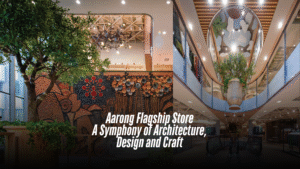
Aarong Flagship Store A Symphony of Architecture, Design and Craft
Aarong, the flagship brand of BRAC, has long been a beacon of Bangladeshi craft and heritage. Since its founding in 1978, it has evolved from a humble platform supporting rural artisans into one of the most iconic lifestyle retailers in the country. At every stage of its journey, Aarong has remained dedicated to preserving traditional crafts while embracing innovation in design and retail. This commitment culminates in its latest and most ambitious endeavor: the Aarong Flagship Store in Dhanmondi. This isn’t just a new store; it’s a monumental celebration of Bangladeshi craftsmanship, culture, and creativity. With its grand opening, the Aarong Flagship Store has become the world’s largest craft store. Yet beyond the scale, it is the thoughtfulness of the design, the intricacy of the artistry, and the profound connection to Bangladesh’s heritage that make it truly remarkable. Here, architecture becomes a canvas, interiors breathe with narrative, and every art installation stands as a tribute to the nation’s soul. Weaving a Legacy in Concrete At the heart of Dhanmondi, where tradition meets the rhythm of urban life, stands a building that does more than offer products—it tells a story. The Aarong Flagship Outlet, designed by the visionary team at Synthesis Architects, is not merely a retail space—it is a woven fabric of heritage, memory, and movement. The design draws its soul from an age-old practice: weaving. For generations, Bangladeshi artisans have mastered the loom, interlacing threads into forms that embody both beauty and utility. This fundamental craft became the architectural metaphor—fluid, connected, and timeless. A singular, sweeping ribbon—symbolic of woven fabric—emerges from the ground, bends, flows, and re-emerges, wrapping the building in a gesture that is both gentle and bold. This ribbon, meticulously cast in handcrafted concrete, intertwines tradition with contemporary expression. It shields and shelters, filters light and air, and gracefully performs the roles of both skin and soul. Designing for Aarong, a brand synonymous with preserving and promoting Bangladeshi craftsmanship, was an exercise in alignment. It was about giving architectural form to a cultural mission. The interior was choreographed as an experience. Color, texture, and flow were orchestrated to tell stories of rural hands, tribal patterns, and generational skill. The internal movement—voids, escalators, panoramic lifts—echoes the interlacing of threads on a loom. The building doesn’t simply house craft; it embodies it. There were challenges—limited plot size, urban code restrictions, and the complex layering of customer experience. But like the imperfections in a handwoven textile, these constraints added to the character. The architects embraced a rare construction process involving custom shuttering techniques that fused handcrafted care with structural innovation. It was, in many ways, architecture as craft—thoughtful, tactile, and deeply human. The Aarong Flagship Outlet is more than a commercial destination—it is a living artifact. A building where the spirit of Bangladesh rises through poured concrete, where ribbons of history and modernity interlace, and where the vision of Synthesis Architects comes alive in every curve, corner, and corridor. Narratives in Space: Designing Aarong’s Interior Stepping inside Aarong’s Dhanmondi flagship store is like entering a carefully curated journey through the textures, colors, and stories of Bangladesh. The interior design—an inspired collaboration between DWm4 Intrends Ltd, KNMR Ltd – Quirk & Associates JV, and Aarong’s in-house team—transforms the space into something far more than a retail outlet. It becomes a living, breathing storybook. From the outset, Aarong’s internal creative team played a vital role in shaping the vision. With deep roots in the brand’s philosophy and a nuanced understanding of its audience, they ensured the design remained authentically rooted in Bangladeshi heritage while pushing the boundaries of modern retail aesthetics. Guided by a philosophy rooted in transparency, movement, and nature, the space invites exploration. A rich interplay of materials, tones, and layers creates a rhythmic flow throughout the store. The tactile warmth of crafted surfaces, the strategic use of natural light, and the organic integration of greenery collectively form an ambiance that is both calming and dynamic. Each area reveals a distinct narrative, woven through thoughtful transitions that guide visitors from one crafted world to another. Every detail reflects a broader intention: to connect the threads of past and present, tradition and innovation, artisans and their audience. The space becomes part of the product’s story, amplifying its meaning and value. Executed with precision and artistry by the expert team at Charuta Limited, the interior fit-out brings this collective vision to life. At the heart of this journey was the dedicated team of architects and designers from Aarong, whose cultural insight and creative vision shaped an environment that celebrates both legacy and innovation . Art Installations: Where Stories and Spaces Intertwine Beyond architecture and interiors, the Aarong Flagship Store stands out for its large-scale art installations—transforming it from a retail space into a cultural landmark. Each piece, created by a blend of independent artists and Aarong’s in-house team, captures a different facet of Bangladeshi life and heritage. The Great Arena: A Monumental Nakshi Kantha Designed by Samiul Alam Himel in collaboration with Aarong’s in-house team, this towering four-story installation reimagines the storytelling tradition of Nakshi Kantha in architectural form. Traditionally stitched by rural women to document everyday life, these narrative quilts are here translated into flowing sculptural lines and vivid, layered colors. Titled “MohaArongo: The Great Arena,” the piece stretches 44 feet high and 10 feet wide, handcrafted over six months by 250 artisans from rural Bangladesh. The work is not only monumental in scale but also in meaning. Created from repurposed fabrics, salvaged beads, and discarded ornaments, it embodies a philosophy of renewal and resilience. The piece weaves a narrative journey through rural life, folklore, urban aspirations, and cosmic imagination—stitched in intricate Nakshi Kantha techniques drawn from Aarong’s archives and reinterpreted across various fabrics. Orange threads guide the eye through this swirling story, culminating in motifs like peacocks, trees of life, and village fairs, each carrying hidden stories within their forms. Rising through the central atrium, the installation invites viewers to look upward and
Read More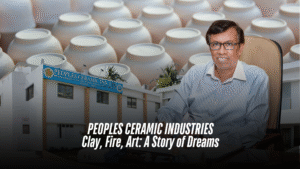
PEOPLES CERAMIC INDUSTRIES Clay, Fire, Art: A Story of Dreams
As the morning sun gently illuminates glass windows and casts playful shadows on the floor, a new day’s story unfolds. Beyond the city’s hustle and bustle, skilled hands at Peoples Ceramic Industries Limited (PCI) work tirelessly to craft each perfect piece—an extraordinary fusion of clay, fire, and creativity. Today, Bangladesh’s ceramic industry has evolved far beyond home décor into a globally recognised brand. At the forefront of this transformation is PCI. Established in 1962—originally known and registered as Pakistan Ceramic Industries Ltd.—the company has grown over 63 years into one of the nation’s oldest and most respected ceramic manufacturers. Its reputation for high-quality porcelain tableware, sustainable technology, and a robust international presence speaks for itself. In this edition of Ceramic Bangladesh, we sat down with Lutfur Rahman, the Managing Director of Peoples Ceramic Industries Ltd. A visionary in his own right, Lutfur has both preserved and expanded his father’s legacy, positioning PCI as a key player in Bangladesh’s industrial evolution. A Legacy Built on Vision and Integrity Lutfur Rahman began the interview by proudly showing a photograph of his father, Ansar Uddin Ahmed—the mastermind behind Peoples Ceramic. A civil engineer who graduated from Ahsanullah Engineering College (now BUET) in 1947, Ansar Uddin was driven by an enduring desire to serve his country—not through bureaucracy but by creating something truly meaningful. After a brief stint in the government sector, he pursued his entrepreneurial dreams. In the early 1950s, he founded United Engineers, securing a first-class license from the government. His firm was responsible for several prominent constructions that still stand today, including the Ceramic Institute in Tejgaon, Dhaka Polytechnic Institute, and Chittagong Medical College and Hospital. It was during his frequent visits to the Ceramic Institute that the idea for a ceramic factory was born. Reflecting on his father’s journey, Lutfur shared, “The relationship between children and their parents has always been special. I grew up watching my father work relentlessly, with my mother by his side supporting every step. His singular desire was to create a new industry and leave behind porcelain tableware as a legacy to improve the quality of life for our people. To realize this dream, he embarked on a long, challenging journey filled with obstacles. He always said, ‘To achieve something, one has to give up something, and there is no shortcut to building a solid foundation.’” The Birth of Peoples Ceramic In 1962, Peoples Ceramic Industries Ltd. was established with a clear and powerful vision—to provide affordable porcelain tableware for ordinary people. At a time when ceramic products were considered a luxury, Mr. Ahmed aimed to bring dignity and elegance to everyday dining. The company chose to manufacture European-style tableware, targeting both local tastes and future export opportunities. By 1982, PCI had successfully entered the international market, with its porcelain products welcomed in Holland and the United Kingdom. Located in the Tongi Industrial Area—a prominent industrial zone in Gazipur, just 20 kilometers from Dhaka—PCI started with basic housewares, tea cups, and saucers designed primarily for restaurant use. Over time, the product line expanded to include institutional ranges catering to hotels, restaurants, and the broader hospitality sector. Reflecting on the company’s humble beginnings, Lutfur recalled, “Peoples Ceramic was established in 1962, with the technical support of Sone Ceramic, Japan. At that time, Japanese engineers stayed in Dhaka to supervise the installation and production process. In the early days, our factory ran on furnace oil, and our products gained popularity right from the start.” Mr. Ansar Uddin Ahmed, who served as managing director of both Peoples Ceramic Industries and Standard Ceramic Industries Ltd., passed away on August 17, 2005. He also served as the first President of the BCMEA from 1992 to 2002, playing a vital role in revolutionising the export of local ceramics. “Tajma Ceramics, established in 1959, was the pioneer in manufacturing earthenware. However, PCI was the first to introduce porcelain production in Bangladesh,” Lutfur explained. According to him, PCI was formally inaugurated by then Industries Minister Dewan Basit and the Japanese Ambassador, with commercial production beginning on June 23, 1966. Overcoming Challenges and Embracing Innovation Marketing large-scale production in the early years posed a significant challenge. To overcome this, Mr. Ahmed ventured into the Pakistani market, successfully competing against two established factories. PCI’s hard-grade porcelain quickly won acceptance, carving out its niche within the subcontinental market. The company has consistently invested in state-of-the-art technology, global raw material sourcing, and upgraded machinery to guarantee quality and cost-effectiveness. This forward-thinking approach has enabled PCI to stay ahead of industry trends for decades. In 2009, the company introduced decal printing—initially using basic logos—and by 2012 had established a fully automated decal printing facility, expanding its design capabilities and reinforcing its brand identity. Aesthetic Diversity: Designs That Tell a Story Today, PCI offers a diverse range of tableware, neatly categorized into housewares, hotelware, and giftware. The company produces approximately 13 million pieces of porcelain tableware annually and employs nearly 712 people. These milestones stand as a tribute to its commitment to quality and innovation. The Road Ahead: Legacy and Vision Under Lutfur Rahman’s leadership, PCI continues to honor his father’s legacy with dedication and innovation. The company has adopted sustainable production practices and is actively exploring new export markets. As Lutfur puts it, “We still hold on to the principles my father set—quality, integrity, and making ceramics accessible for all. Our goal is not only to serve our customers but also to contribute to the country’s economic and industrial growth.” Looking to the future, PCI is exploring renewable energy integration, digital production processes, and expanding its footprint into emerging markets in Asia and Africa. As Bangladesh’s ceramic industry gains global prestige, Peoples Ceramic Industries Ltd. remains at its heart—a symbol of dreams forged in clay and fire, shaped by vision, and driven by a commitment to excellence. Maximizing Waste Utilization in Ceramic Production PCI is also a leader in sustainable practices. “We actively reclaim ceramic scraps at various stages of production—including the green (unfired), bisque
Read More
Celebrating 5 Years of Success of the Sponsors and Patrons Recognition
Shaping Bangladesh was one of the most prestigious events of Ceramic Bangladesh Magazine, organized by BCMEA (Bangladesh Ceramic Manufacturers and Exporters Association). The event gathered many renowned and well-known architects, engineers, industry leaders, and industry personnel from different sectors under one roof. It was a different way of introducing the new ways of rebuilding and reshaping Bangladesh with many unique and extraordinary ideas and thinking of brilliant minds and visionary individuals of the country. Without the support of the sponsors, the event would never have happened in reality. It was the encouragement, support, and dedication of the valuable sponsors who have come forward to make this event successful and create a new buzz in the town. On that note, special thanks to all the sponsors and partners of the event for making a special and notable contribution to the event and playing their part crucially. Valued Sponsors of Shaping Bangladesh Special recognition and deepest gratitude to the valued sponsors and partners for providing their invaluable support. Their generous contribution has played a significant role in making this event possible and helping BCMEA bring all the valuable communities together to promote a meaningful experience. The valued sponsors of Shaping Bangladesh were: • Platinum Sponsor: Akij Ceramics Limited • Powered by Sponsors: Meghna Ceramic Industries Limited. and X Ceramics Limited • Associated Sponsors: Sheltech Ceramics Limited, DBL Ceramics Limited, Mir Ceramic Limited Event Partners: • Gift Partner: RAK Ceramics (BD,) Ltd. • Media Partner: The Business Standard • Hospitality Partner: Dhaka Regency and Chuti Resort • Wardrobe Partner: Fiero • Other Supporting Partners: 01. BHL Ceramic Co. Ltd., 02. Mirpur Ceramic Works Ltd., 03. Ali Ceramic Ind. Ltd., 04. Adroit Swimming Ltd., 05. Nupami BD Ltd., 06. Amber Board Mills Ltd., 07. Lonon BD BCMEA and Ceramic Bangladesh Magazine are extremely grateful and honored by their presence and collaboration for the event, and they also look forward to continuing these valuable relationships in the future by working together. Top 5 Contributors in 5 years journey of Ceramic Bangladesh Magazine Shaping Bangladesh was not only an event to gather the brilliant minds, but it was also a remarkable celebration for the 5-year successful journey of Ceramic Bangladesh Magazine. BCMEA and Ceramic Bangladesh Magazine expressed their heartfelt gratitude to the constant supporters of the publication. Here are the top 5 contributors of the Ceramic Bangladesh Magazine in last 5 years who have helped to sustain the publication and allowed the magazine to grow, evolve, and continue delivering quality content to the readers, and showcase unique and extraordinary stories through the lenses of writers and photographers. Moreover, the continuous and unwavering belief in the publication was the cornerstone of this event’s success. The partnership has made the event more meaningful. BCMEA and Ceramic Bangladesh Magazine are truly honored to have all the sponsors, partners, and contributors by their side and look forward to continuing this journey together by building more impactful and significant years ahead.
Read More
Kromosho Beyond ‘Belonging’
In the mid-2000s, a young- Munem Wasif began exploring the hidden corridors of Old Dhaka alongside his trusty, timeworn companion, Zenit—a mechanical relic from the Soviet era. This journey eventually culminated in his 2012 photographic masterpiece Belonging, a work that revolutionized visual storytelling in Bangladesh’s art scene. Much like the dark, ever-flowing waters of the Buriganga that have witnessed Dhaka’s transformation, Wasif’s artistic journey has traversed many phases—each urging audiences to look beyond the surface. From `Seeds Shall Set Us Free’ to `Collapse’, his work continuously invites deeper reflection, all while retaining an unbreakable bond with Old Dhaka. After nearly 16 years, Munem Wasif returns to Dhaka with a solo exhibition titled `Kromosho’, now on display at Bengal Shilpalay in the capital. The show, which runs until May 31, 2025, features contributions from curatorial advisor Tanzim Wahab, project assistant Iftekhar Hassan, and architectural designer Dehsar Works, and is open to everyone. Reflecting on his previous work, Wasif explained, “I felt something was lacking when Belonging was released. It merely touched upon the surface of the people and their celebrations—I couldn’t capture the core of their daily lives, the very ‘life’ of Puran Dhaka. That realization gave birth to Kheya’l. This exhibition is a testament to my transformation over the past two decades.” The opening at Bengal Shilpalay buzzed with energy as art enthusiasts gathered to witness what promises to be one of the most memorable exhibitions in recent memory. Kromosho unfolds in three movements: it begins with Wasif’s ethereal black-and-white photographs from the Belonging era, which converse with his fresh, vibrant color works from Stereo. This juxtaposition creates a dynamic tension between past and present, memory and reality. In Kheyal, a cinematic meditation captures the pulsing rhythm of Old Dhaka, while the installations Shamanno and Paper Negative blend documentation with imagination, challenging our perceptions of what is real versus what is remembered. Critically, Old Dhaka may seem like a ticking time bomb—overcrowded, decaying, and a bitter relic of collective neglect. Yet, Wasif’s work reveals the hidden vitality amid this chaos, unearthing a poetry rarely seen by the casual observer. Kromosho does more than display images of a place; it captures its very essence. The exhibition serves as a mirror, prompting us to consider what we preserve and what we forsake in our relentless march toward modernity. In an age of rapid urbanization and cultural amnesia, Wasif’s work stands as both an archive and an elegy—an enduring reminder that some stories transcend what can be captured by cameras or words. To fully appreciate its depth, one must experience it both in person and with an open, reflective heart. As visitors wander through the gallery, they are invited not only to observe but also to introspect. In this way, Kromosho transcends the role of a mere art exhibition—it becomes a conversation, a homecoming, and ultimately, a call to bear witness. Written by Shahbaz Nahian
Read More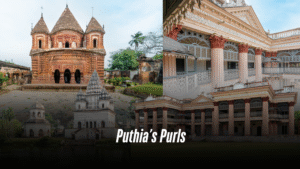
Puthia’s Purls
Nestled in northern Bangladesh in the heart of Rajshahi, the Puthia Rajbari (Palace) Complex stands as a vivid reminder of the region’s storied past. This captivating ensemble of temples and palaces—set against a backdrop of tranquil water bodies and lush greenery—offers visitors a rare glimpse into the majesty of Bengal’s bygone eras Puthia’s rise to prominence dates back to the late 16th century, evolving by the 18th century into a bastion of wealth and influence. Originally part of the Laskarpur Pargana and named after Laskar Khan Nilamber—the brother of the first zamindar, who earned the title of Raja from Mughal Emperor Jahangir—the estate underwent a significant division in 1744. This partition split the zamindari into four co-shares, with the Panch Ani (five annas) and Char Ani (four annas) shares emerging as particularly influential. The Panch Ani estate, skillfully managed by Maharani Sarat Sundari and Maharani Hemanta Kumari, became celebrated for its efficient administration and enthusiastic patronage of the arts. In 1895, Maharani Hemanta Kumari Devi commissioned the construction of the two-storied Puthia Rajbari—an architectural marvel dedicated to her mother-in-law, Maharani Sarat Sundari Devi. A fine example of Indo-Saracenic Revival architecture, the palace harmoniously blends European neoclassical ideals with indigenous Bengali design. Strategically located along the Rajshahi–Natore highway (approximately 30 km east of Rajshahi town and 1 km to its south), the palace is surrounded by protective ditches and sprawls over 4.31 acres. It is organized into four distinct courts: the Kachhari (office) courtyard, the Mandir Angan or Gobindabari (temple court), the Andar Mahal (private quarters), and the residence of Maharani Hemanta Kumari Devi. Today, the palace also functions as a museum, offering insights into the rich tapestry of Puthia’s history. Under British colonial rule, the Puthia family continued to play a pivotal role in Bengal’s governance. Eager to integrate local elites into their administrative framework, the colonial authorities relied on influential zamindars such as the Puthia royals. This collaboration enhanced their economic wealth and social standing while cementing Puthia’s reputation as an architectural and cultural beacon during the 19th century—a remarkable melding of Mughal elegance with European influences that produced a unique heritage. The palace rooms are arranged around several courts, all of which are single-storeyed except for the Kachari Angan. This section features Palladian porticos with four semi-Corinthian columns on both the western and eastern ends—one leading to the Kachari Angan and the other to the Temple (Gobindabari) courts. The porticos and central section include arcaded loggias on the first floor, while a wooden staircase on the east side ascends to three varied rooms (two of which once served as treasuries) on one side and four rooms with verandahs on the other. The northern block is double-storeyed, with a wide hall measuring 21.95 m x 7.16 m, a verandah with side balconies, and six additional rooms upstairs. In the Andar Mahal, the western section comprises two rooms and several bathrooms, while the eastern section houses a one-storeyed residence of Rani Hemanta Kumari. This residence includes a porch, a central reception hall with nine rooms, extended arch-adorned verandahs, and a roof supported by iron and wooden beams. Overall, the palace primarily served as the administrative and residential hub of the Puthia estate. The complex is also home to several iconic temples that epitomize its architectural grandeur: Bhubaneshwar Shiva Temple (1823): Constructed by Rani Bhubonmoyee Devi, this temple is the largest Shiva temple in Bangladesh. Built in the Pancha Ratna (five-spired) style, it enchants visitors with intricate stone carvings and houses a massive black basalt Shiva Linga—the largest of its kind in the country. Govinda Temple: Erected in the mid-19th century by the queen of Puthia and dedicated to Lord Krishna, this temple is famed for its exquisite terracotta ornamentation. Its five imposing spires, detailed with depictions of divine figures, epic battles, and mythological narratives, showcase the fervor and artistic talent of the region. Jagannath Temple: In a striking departure from conventional designs, this two-storied octagonal temple—dedicated to Lord Jagannath—features four pillars crowned with domes. Its unconventional shape highlights the infusion of European neoclassical elements into traditional local design. Chauchala Chhota Govinda Mandir: Dating to the late 18th or early 19th century, this temple adheres to the Char Chala style, characterized by its distinct four-cornered roof. Its terracotta façade vividly narrates rich tales from Hindu mythology, including cosmic battles between gods and demons. Bara Anhik Mandir: Representing an intriguing fusion of styles, this temple combines a central two-chala structure with two flanking four-chala wings—a rare architectural combination scarcely seen elsewhere in Bangladesh. Choto Shiv Mandir: Tucked behind the Rajbari, this humble yet finely crafted temple exemplifies the refined skills of Bengal’s artisans and provides a serene retreat for those seeking a private space for reflection. As Bengal’s social and political landscapes evolved under British influence, complexes like Puthia became more than centers of worship—they grew into symbols of local identity. The sacred grounds of the Puthia Temple Complex evoke an era when devotion, artistic brilliance, and effective governance merged to create a legacy that continues to inspire awe. Even amid challenges such as the Bangladesh Liberation War and other periods of political upheaval, dedicated preservation efforts by local authorities and heritage organizations have maintained the complex’s original splendor. In safeguarding its stone and clay, they preserve not merely a collection of monuments but a living cultural heritage that speaks volumes about the spirit of Bengal. Exploring Puthia’s legacy invites further discovery—from delving into the nuanced artistic details of terracotta carvings to understanding how colonial and indigenous influences converged to shape regional identity. This complex remains a beacon for anyone passionate about history, art, and the enduring human endeavor to immortalize culture through architecture. Written by Shahbaz Nahian
Read More
Indian Ceramics Asia
Announces New Dates for 2026 Edition: To Be Held from January 28–30, 2026 in Gandhinagar, Gujarat, India Indian Ceramics Asia, India’s only B2B trade fair for the ceramics and brick industry, has announced the dates for its landmark 20th edition. The upcoming show will take place from January 28–30, 2026, in Gandhinagar, Gujarat. Organised by Messe Muenchen India and Unifair Exhibition Services, the 2026 edition is strategically scheduled earlier in the year to better align with the industry’s annual planning and investment cycles. The new dates are expected to deliver enhanced value for exhibitors and visitors alike—unlocking fresh business opportunities, accelerating decision-making, and setting the tone for innovation-led growth across the industry. The announcement follows the successful completion of the 19th edition, held from March 5–7, 2025, at the same venue. This edition attracted over 250 brands and more than 8,000 trade professionals from 32 countries, marking a vibrant convergence of ideas, technology, and global best practices. The 2025 edition stood out for its focus on energy innovation, logistics optimization, and global competitiveness. Exhibitors like SACMI, KEDA, Sibelco, Systems Ceramics, and Modena showcased advanced machinery and raw materials aimed at making ceramic manufacturing more cost-effective and sustainable. The Live Demo Zone and Ceramics Career Connect initiatives offered real-time learning and talent engagement, further enriching the visitor experience. International pavilions from Italy and Germany brought in automation-centric solutions and sustainable practices, strengthening cross-border collaboration. As the industry continues to navigate challenges around energy, supply chains, and global demand, Indian Ceramics Asia remains the sector’s most trusted platform for innovation, networking, and growth. Join us from January 28–30, 2026, in Gandhinagar—and be part of the ceramics industry’s defining event in South Asia. For more details, visit www.indian-ceramics.com
Read More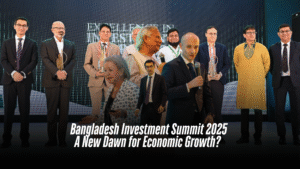
Bangladesh Investment Summit 2025 A New Dawn for Economic Growth?
Bangladesh now stands at a critical crossroads. As the country prepares to transition from a least-developed nation (LDC) to a middle-income economy in 2026, it grapples with significant hurdles. Despite years of economic resilience, enduring issues—such as import dependency, skill shortages, stagnant private investment, and declining foreign direct investment (FDI)—continue to slow progress. In this challenging environment, the Bangladesh Investment Summit 2025 emerged as a pivotal event, unveiling initial investment proposals worth Tk 31 billion (3100 crore) and igniting cautious optimism among policymakers and investors. Convergence of Promise and Challenges Organized by the Bangladesh Investment Development Authority (BIDA), the four-day Dhaka summit, held from April 7 to April 10, 2025, brought together over 550 investors and business representatives from more than 50 countries. Inaugurated by Chief Advisor Dr. Muhammad Yunus, the summit sought to reimagine Bangladesh’s global investment identity even as it faced structural challenges. Ultimately, the success of these initiatives will hinge on whether early commitments evolve into sustained and tangible investments. For years, Bangladesh’s investment landscape has remained largely stagnant. Overall investments have hovered between 24–28 percent of GDP, with private investment stuck at 22–24 percent and FDI persistently below 1.0 percent. Recent declines in private investment in FY2023 and FY2024, along with a continuous drop in FDI since FY2018, have been attributed to bureaucratic hurdles, policy unpredictability, and macroeconomic instability—particularly in managing exchange rates. Yet, amid these challenges, the summit has sparked a renewed sense of hope. Global Multinationals Betting on Bangladesh Three major international companies announced expansion plans during the summit: Inditex (Spain): The retail giant behind Zara reaffirmed Bangladesh’s role as a key sourcing hub and hinted at increased procurement. Lafarge Holcim: The cement leader discussed plans to broaden operations and explore carbon capture initiatives. Handa Industries (China): The company committed $150 million to develop textile, dyeing, and garment units in designated economic zones. In addition, Dubai-based DP World expressed interest in investing in Chattogram’s new Mooring Container Terminal. Celebrating Local Champions Local enterprises also received significant recognition at the event. Four Bangladeshi firms were honored for their contributions: bKash (Excellence in Investment): The trailb lazing mobile financial services provider backed by IFC, Ant Group, and SoftBank. Fabric Lagbe (Innovation Award): A digital marketplace that empowers traditional weavers. Walton (ESG Award): A leading local electronics manufacturer exporting to over 40 countries. Square Pharmaceuticals (Investment Excellence): A company that has grown from modest beginnings in Pabna to a globally recognized pharmaceutical powerhouse. These success stories underscore that, despite systemic challenges, Bangladeshi enterprises can thrive on the international stage. Global Investors Show Confidence There is growing international faith in Bangladesh’s revised approach to investment. Foreign investors have commended the interim government for taking proactive measures to attract FDI—a marked departure from previous administrations. A delegation of 60 investors from the U.S., South Korea, China, Japan, India, Australia, and the Netherlands toured key hubs such as the Korean Export Processing Zone (KEPZ) in Chattogram and the Japani Export Processing Zone (JEPZ) in Narayanganj, exploring opportunities in textiles, IT, and manufacturing. KEPZ: A Model Investment Hub Operated by South Korea’s Youngone Corporation, KEPZ has become a shining example of Bangladesh’s readiness for FDI. Investors were impressed by its well-established infrastructure, efficient licensing procedures, and worker-friendly amenities—including a hospital, a textile institute, a 40MW solar project, and an effluent treatment plant. With $700 million already invested, KEPZ now hosts 48 factories and employs 30,000 workers, 75 percent of whom are women. Forging Sustainable Partnerships The summit also facilitated key agreements. Notably, BIDA, the Commerce Ministry, ILO, and UNDP issued a joint declaration to promote sustainable and inclusive growth through targeted trade reforms. Additionally, UK Trade Envoy Baroness Rosie Winterton highlighted long-term opportunities in healthcare and education, paving the way for enduring global partnerships. Navigating the Road Ahead: Can Bangladesh Overcome Its Investment Slump? Despite the summit’s positive momentum, Bangladesh’s investment climate continues to face obstacles: High bank interest rates that deter private borrowing. Policy inconsistencies under the interim government create uncertainty. Weak FDI performance compared to regional competitors like Vietnam and India. Analysts stress that without significant structural reforms—streamlining bureaucracy, ensuring policy stability, and stabilizing the macroeconomy—Bangladesh may struggle to sustain the anticipated investment surge. Execution is Key The Bangladesh Investment Summit 2025 has successfully rebranded the country as an emerging investment destination. With multinationals such as Inditex, Lafarge Holcim, and Handa Industries pledging expansion and local leaders like bKash and Walton proving their global competitiveness, there is considerable cause for optimism. However, the real challenge now lies in execution. Only if Bangladesh addresses its business environment hurdles, refines regulatory frameworks, and maintains macroeconomic stability can this new momentum herald a transformative economic chapter. For now, the world watches closely—will Bangladesh seize this moment, or will these early promises fade away? Only time will tell. Written by Sajibur Rahman
Read More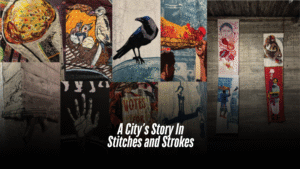
A City’s Story In Stitches and Strokes
Dhaka’s rapid urbanization is impossible to ignore. This city of relentless energy and transformation is a place where tradition and modernity collide amidst its bustling streets and ever-changing skyline. As the economic heart of Bangladesh, it draws thousands seeking better opportunities. But this comes at a cost: overcrowding, strained resources, and a growing disconnect between the old and the new. Against this backdrop, ShohorNama Dhaka Episode II sought to explore the city’s complexities through art. Launched in early 2024, the project brought together visual artists, architects, artisans, and students from the University of Dhaka’s Faculty of Fine Art to create a tapestry of urban narratives. And the exhibition of this project took place from February 15 to 25 at the level 4 under construction space of the capital’s Bengal Shilpalay. The exhibition was inaugurated by H.E. Marie Masdupuy, Ambassador of France to Bangladesh, on February 15, 2025. Titled after the project name, the multidisciplinary exhibition wove together the threads of urban life, resilience, and creativity. Presented by the Bengal Arts Programme in collaboration with the Britto Arts Trust, ShohorNama II was a visual love letter to Dhaka, its people, and their stories. From large appliqué tents to wood-cut prints, installations, and performance art, it was a celebration of Dhaka’s artistic topography. At its core, ShohorNama was about storytelling. One of the standout features is the Pakghor Project, a community kitchen born out of necessity during the devastating floods of 2024 in the Khulna region. Pakghor provided warm meals to 500 villagers for a week. But it became more than just a kitchen—it became a space for shared stories, resilience, and hope. The Dorjikhana Project takes a different approach, focusing on textiles and their cultural significance. Through appliqué and embroidery, artists explore the connection between traditional practices and the modern garment industry. The project also draws inspiration from Bangladesh’s fading circus traditions. Resulting in a stunning collection of textile art that speaks to both the past and the present. Another striking element of ShohorNama is its use of tents. Historically, tents have symbolized temporary shelter for nomadic communities, and in this exhibition, they represent the fluidity of migration—whether due to natural disasters, economic hardship, or political unrest. The Big Tent installation captured this impermanence, reflecting the challenges faced by marginalized communities. The exhibition also highlighted the collaborative spirit of the project. Workshops with the University of Dhaka’s Department of Printmaking and Department of Craft allowed students to contribute to large-scale works, such as woodcut prints and appliqué pieces. These workshops not only honed technical skills but also fostered a sense of shared purpose, blending individual creativity into a cohesive vision. The exhibition was a feast for the senses! As Dhaka continues to evolve, exhibitions like “ShohorNama Dhaka Episode II” remind us of the importance of preserving our stories and traditions. Through art, we can find common ground, build resilience, and imagine a better future. Written by: Shahbaz Nahian Photo: Bengal Art Foundation | Courtesy
Read More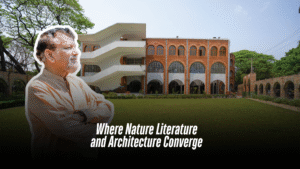
Where Nature Literature and Architecture Converge
Every person envisions a path uniquely their own. For Mesbah-ul-Kabir, the visionary force behind Kabir and Associates, that path was rooted in literature—especially Bangla literature, which continues to capture his heart. Picture a building as if it were a poem: its floors serve as verses, its design the underlying rhythm, and within the interplay of these elements unfolds the poetic vision of its creator. Though destiny steered him away from writing verses, it set him on the course of designing ones conceived in concrete, glass, and steel. When asked about his design philosophy, Mesbah replied, “I don’t follow a singular style. Instead, I draw inspiration from nature—the master designer. Nature effortlessly embraces the path of least resistance, creating a harmonious, albeit imperfect, balance. Unlike manmade objects that often adhere to strict forms, every new project demands its own innovative treatment. I learn and evolve with each undertaking.” This commitment to constant reinvention has defined his career and led him to craft iconic structures like the Sena Kalyan Bhaban—which redefined Dhaka’s skyline—and Mirpur’s National Stadium, among many others. In Bangladesh, Mesbah-ul-Kabir’s name is synonymous with architectural excellence. Yet, he always reminds fellow architects that the learning process never truly ends. He laments that only a handful of his peers still embrace the hands-on method of constructing scale models with simple, analog tools—a practice increasingly eclipsed by computerization. “I purposely avoid relying on computer software,” he explains firmly. “By drawing perspective sketches and building scale models by hand, I retain total control over my creative process.” He recalls how, during his studies at BUET, a chance encounter with the legendary Dr. Fazlur Rahman Khan left a lasting impression: “When I envision a building, I feel its weight as if it were part of me.” Such experiences underscore the importance of imagination—a quality he fears is slowly being overshadowed by digital methods. Reflecting on his earlier days, Mesbah recounts a time when understanding a client’s desires led to rough sketches, known as ‘functions,’ followed by detailed perspective drawings imbued with vanishing points, horizons, and everyday elements like trees or vehicles. These handcrafted visualizations offered a glimpse of a project’s future long before modern tools like AutoCAD existed. Even the laborious process of constructing scale models gave him a satisfaction akin to a poet reveling in a freshly composed verse. Today, a visit to the Kabir & Associates office in Dhanmondi reveals a gallery of these cherished drawings and models—a living history of a lifetime dedicated to craftsmanship. Despite the encroachment of digital design, Mesbah holds a hopeful vision that emerging architects will rediscover the profound joy of traditional creation. For him, architecture is boundless. “Some choose this profession out of necessity; I embraced it with passion,” he reflects. His academic journey spanned literature, history, physics, mathematics, philosophy, and even music during his time at BUET’s Department of Architecture. Even within the scientific rigors of his field, literature remained a wellspring of inspiration—a force that uplifted him from isolation and exposed him to a vast ocean of creativity. While celebrated for his monumental public works and commercial edifices, some of Mesbah-ul-Kabir’s most treasured designs are the modest homes of the 1970s and 1980s in neighborhoods like Gulshan, Banani, and Baridhara. These projects, though simple, exuded warmth and personality—whether through rooftop gardens, multi-story green spaces, or even rooftop swimming pools—offering a style of luxury living that contrasts sharply with today’s prevalent, box-like apartment blocks. He fondly recalls a whimsical project for the former vice president of Summit Group—a full-glass house in Savar Cantonment. Enchanted by a monsoon season enlivened with blooming red lotuses, the client once declared, “I want to present this glass house to my wife.” When pressed about privacy, particularly in intimate areas and restrooms, he quipped about using curtains, noting humorously that the secluded setting made privacy a minor concern. Notably, Mesbah introduced the curtain wall system on the Sena Kalyan Bhaban for the first time in Bangladesh—a testament to his innovative spirit, which is also reflected in designs for national stadiums and even the previous Gulshan Club. Mosques occupy an especially sacred space in Mesbah’s repertoire. Having designed and refined over a hundred mosques, he approaches these projects not as commercial ventures but as acts of ‘khidmah’ (service)—an opportunity to contribute selflessly to the community. “Designing mosques is both a duty and a passion, a way to express gratitude for the gifts of life and our own abilities,” he explains. His first mosque, the Azad Mosque—more widely known as Gulshan Central Mosque—was a landmark project that spanned nearly 18 bigha and featured striking geometric designs with circles and triangles. Drawing on decades of experience, Mesbah elaborates on the cultural significance of religious structures. While domes, arches, and minarets have transcended their practical origins—minarets, once essential for calling worshippers to prayer, now serve largely symbolic roles—they remain vital in linking a building’s design to its cultural and spiritual roots. Architecture, in his view, acts as the binding force that enshrines ideological meanings across diverse cultures, even as building materials and techniques evolve. The evolution of mosque design is an ever-unfolding process. Take the Baitul Aman Mosque on Dhanmondi Road 7, which began as a humble prayer space enclosed by bamboo fencing. Over time, enhancements like the addition of balconies, multiple floors, and modernized interiors—with steel window frames, marble finishes, and wooden elements—have transformed it into a communal haven that harmonizes with its upscale neighborhood and the nearby natural charm of Dhanmondi lake. For Mesbah, each mosque should feel inseparable from its surroundings, a tribute to both its community and its environment. Today, Bangladesh’s architectural scene is thriving—high-rise, elegant, and meticulously streamlined structures now dot the landscape. Young architects enjoy the profession far more than in earlier times, even as government projects, though commendable, sometimes lack the incentives necessary to retain top talent. Yet, despite these challenges, he remains confident that given the right opportunities and motivations, these architects will
Read More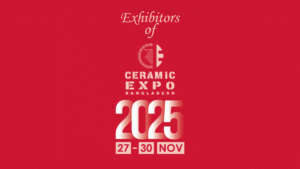
Exhibitors of Ceramic Expo Bangladesh 2025
The 4th edition of Ceramic Expo 2025 is going to be held from November 27 to November 30, 2025, at the International Convention City Bashundhara (ICCB) in Dhaka. The event is one of the most prestigious and premier B2B events focused on the ceramic finished products of the local manufacturers and foreign companies with new machinery, raw materials and innovation. There will be 40+ local manufacturers of ceramic products, such as tiles, tableware, sanitaryware, ceramic bricks, pottery etc. and 75+ foreign exhibitors from more than 25+ countries along with 300+ brands and 500+ delegates. The local and foreign exhibitors both will enhance the quality and standard of the Ceramic Expo 2025 by showcasing their latest products and innovation. The expo is not only promoting the growth and development of the business but also expanding the opportunities to going global for the business expansion. Written by Preety Dey
Read More
FOSHAN DONGHAI TECHNOLOGY CO. LTD. Ceramic Body Decoration Technology | Digital Powder-Jet System
Digital Powder-Jet System | Precise Alignment, Full-Body Texture Donghai Technology’s Digital Powder-Jet System is an advanced feeding technology that utilizes intelligent control systems and multi-channel coordination to impart vibrant patterns and textures. Each channel carries different colored powder, precisely applying the desired designs through digital nozzles. This advanced technology not only enhances production efficiency but also customizes to meet the diverse clients’ need, showcasing a full-body effect from the surface to the bottom. Digital Powder-Jet System’s Advantages: (1) Superior compatibility, seamless Integration with all types of press, (2) Feeding Channel from 6-12 (optional). (3) High-speed feeding, up to 10m/min, achieving both production and efficiency. (4) High precision and accuracy, with positioning accuracy controlled within 2-3mm. Ceramic Surface Decoration Technics | Dry Applicator Dry Applicator | Digital Grit, Premium Finish Donghai Technology’s Dry Applicator is a specialized equipment used for the surface decoration of ceramic tiles. It mainly through the technology of glue and dry grit. By evenly spreading various dry granular materials on the surface of the tiles, it significantly enhances the decorative effect of the tiles. Its advanced technics technology, bringing brand-new possibilities to the surface decoration of ceramic tiles. Dry Applicator’s Advantages: (1) Perfect combination with ink-jet technology, tile surface with rich effect of concave & convex. (2) Italian imported belt, precise control of grit, feeding uniformity. (3) With heating device, remove the humidity of grit during recycling. (4) With automatic recycling system, grit can be reused. (5) Provide professional process technical support, design effect can be realizable.
Read More
The Story Behind Decathlon Dhaka’s Stunning New Office
In the center of Dhaka’s relentless urban sprawl, Decathlon’s new liaison office has carved out an unexpected oasis. Designed by Studio one zero, the two-floor, 20,000-square-foot workspace is a lively yet calming blend of nature, sport, and smart design — a triumph achieved under the intense pressure of a compressed timeline. One floor of the office is devoted to a sprawling seminar and multi-purpose event space, while the other flourishes as a vibrant open-plan workspace. Together, they embody Decathlon’s global brand ethos: movement, accessibility, and connection to the environment. From the first step inside, the design immediately surprises. Natural light pours in from every angle, with open workstations, informal seating zones, and collaborative spaces stretching toward the glass walls. But what truly distinguishes the space is its deliberate, sensitive incorporation of natural elements into an otherwise urban setting — a concept that chief architect Jafor Hoq and Partner Architect Humaira Binte Hannan at Studio One Zero were determined to bring alive. Challenge Against Time “The biggest challenge for us,” says Jafor Hoq, “was the design decision against time. From the initial concept to execution, we had a very short period. And it wasn’t just about filling a space — Decathlon wanted something meaningful, experiential, and true to their brand spirit.” Working under intense deadlines and changes meant that decisions on materials, layouts, and designs had to be made rapidly but thoughtfully. “We had no time for second-guessing. Every material, every design move had to be purposeful and achievable within the timeframe,” Hoq recalls. Instead of battling the constraint, Studio one zero leaned into it, focusing on a few strong ideas and executing them meticulously. Bringing Nature Indoors — A Different Way While biophilic design is no longer a novelty, Studio one zero’s approach for Decathlon’s office is refreshingly nuanced. Instead of merely placing potted plants in corners, nature was embedded into the structure itself. The most striking feature — the tree-inspired columns — originated from a need to solve a technical problem with artistic flair. Existing structural columns, often seen as obstacles in open-plan offices, were transformed into vertical wooden sculptures. “These columns are not just cladded structures,” Hoq explains. “We intentionally gave them the form of large tree trunks, expanding outward at the top, creating a canopy-like feeling. Under these ‘trees,’ we placed high seating zones, making them natural gathering points where people can sit, stand, and connect. It’s about reinterpreting indoor nature — not just bringing in greenery but evoking the experience of being under a tree.” Materiality: Warmth in an Industrial Frame The material palette reflects a thoughtful balance between modernity and warmth. Light oak wood cladding runs through the flooring of common pathways and wraps around key architectural elements, providing a sense of warmth and continuity. “The idea was to humanize the space,” says Hoq. “We were working with an exposed ceiling — which gives that industrial look — but we didn’t want it to feel cold or impersonal. Using wood, texture and incorporating green , was the answer.” Meanwhile, the furniture choices favored light-colored wood and clean lines to complement the architecture without overwhelming it. Lush green walls filled with planters further softened the industrial base, offering breathing spaces that look and feel alive. Even the lighting played into the natural narrative. Angular, dynamic geometric light fixtures, seemingly random yet deliberate, mimic dappled sunlight filtering through tree canopies, casting a playful rhythm of light and shadow across the workspace. Functionality at the Core Of course, Decathlon’s office needed to be more than beautiful; it needed to work. Beyond the seminar space and open workstations, Studio One Zero integrated a variety of amenities including a gym, prayer rooms, a sick room, and a restaurant-style café. The café, with its relaxed seating and natural materials, encourages casual interaction — a deliberate attempt to break down formalities and foster an easy, collaborative culture. Flooring materials shift subtly from wood to textured carpet tiles to indicate different zones without physical barriers, preserving the openness. Every design choice speaks to movement, flexibility, openness and wellness — values at the heart of both Decathlon and Studio one zero’s architectural philosophy. A Space That Moves People In the end, Decathlon’s Dhaka office is more than a workplace. It’s a living, breathing environment, where the boundaries between indoor and outdoor, formal and informal, structured and free-flowing, are beautifully blurred. Studio One Zero’s bold vision — executed under a limited timeframe — has resulted in a space that isn’t just seen; it’s felt. A place where employees can experience the spirit of sport, the calm of nature, and the excitement of innovation, every single day. “We didn’t just design an office,” Jafor Hoq smiles. “We designed an experience.” Written By Fatima Nujhat Quaderi Photo: Truphoto Studio
Read More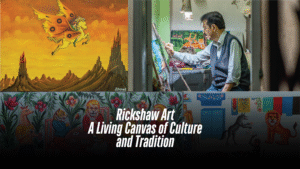
Rickshaw Art A Living Canvas of Culture and Tradition
Dhaka’s wheel The rickshaw is the quintessential three-wheeler of Dhaka. If one were to encapsulate the spirit of the city with a single vehicle, it would undoubtedly be the rickshaw. Even in an era dominated by modern transport and ride-hailing services, the rickshaw remains a beloved tradition. Riding in a rickshaw, one can experience a serene immersion in nature—a reflective calm—despite the bustling chaos of Dhaka outside. More than a means of transport, rickshaws are mobile masterpieces. Handcrafted by skilled artisans, they feature oil paintings adorned with vibrant floral patterns, birds, animals, movie stars, and scenes from folk tales, effectively transforming the streets into a roving gallery. On December 6, 2023, UNESCO recognized Bangladesh’s rickshaw art as part of the Intangible Cultural Heritage of Humanity—a distinction that has gripped global attention and sparked renewed domestic interest. Galleries across the country are now hosting exhibitions to celebrate this unique cultural tradition. History throughout The three-wheeled rickshaw has been a part of Bangladeshi life since the 1940s. By the late ‘40s, decorative elements such as movie star portraits and intricate floral designs began to appear, heralding the birth of what is now known as rickshaw art. Originating in Rajshahi and Dhaka, this art form evolved with each district contributing its own unique stylistic influences. Artist Syed Ahmad Hossain has been a devoted practitioner of rickshaw art since 1969. A self-taught talent, his works have not only graced exhibitions around the world but also served as a visual chronicle of his era. During the Liberation War, for instance, he vividly captured scenes of conflict on rickshaws, transforming them into moving narratives of historical events. In 1975, political unrest led to fears of a ban on rickshaw painting, prompting many artists—including Syed—to shift their focus to signboard painting. Concurrently, rising religious sensitivities rendered the portrayal of human faces and film scenes controversial, ushering in a new era where artists gravitated toward universally acceptable subjects such as trees, animals, and nature. Gradually, human faces were replaced with symbolic imagery that communicated profound stories without uttering a single word. Syed recalls a time when cheap, mass-produced prints of rickshaw art flooded the market, selling for merely 60–70 taka. Although these replicas lacked the detail and artistry of the originals, their affordability made them popular. This oversaturation, however, contributed to a devaluation of authentic rickshaw art. During Pohela Boishakh, rickshaw art transforms from vehicle decoration into a marketable commodity. Artisans create posters, canvas prints, postcards, and figurines that feature iconic rickshaw designs; these items are cherished as souvenirs, home décor, or thoughtful gifts. Such initiatives underscore the collective effort required to preserve and celebrate this cultural tradition. Wheels got heavier! Today, the art of hand-painted rickshaws teeters on the brink of extinction. The rise of motorized rickshaws—lacking the space for detailed artwork—and the advent of digital printing have contributed to its decline. With only a few traditional rickshaw artists remaining, there is growing concern that this vibrant form of pop art may be lost. Innovative artists are finding new expressions for rickshaw art beyond the vehicles themselves. Syed, for example, has successfully translated this living art onto handcrafted items like hurricane lamps, trunks, and portraits. Meanwhile, contemporary artists like Hanif Pappu express worry over the waning interest among the younger generation, who are often discouraged from pursuing this craft due to its limited financial rewards. Photo: UNESCO, DBF, Courtesy Written by Fariha Hossain
Read More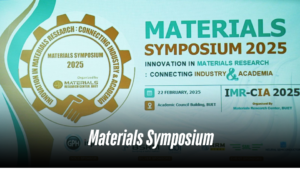
Materials Symposium: Pioneering the Future of Materials Science Through Innovation and Collaboration
With the aim of connecting academia and industry, the Bangladesh University of Engineering and Technology (BUET) hosted the Innovation in Materials Research – Connecting Industry and Academia (IMR-CIA 2025) symposium on February 22, 2025. The one-day event, held at BUET’s Academic Council Auditorium, brought together leading scientists, engineers, and industry pioneers to explore advancements in materials science and their real-world applications. Chaired by Dr. Fahmida Gulshan, Professor, Department of Materials and Metallurgical Engineering, BUET and co-chaired by Dr. Muhammad Hasanuzzaman, Associate Professor, Department of Nanomaterials and Ceramic Engineering, BUET, the symposium was organized by a distinguished committee of Materials Research Centre, BUET, composed of experts in the field of materials science. The chief patron of the organization is Prof. Dr. A.B.M. Badruzzaman, Vice-Chancellor, BUET. The symposium was presided over by Dr. Fahmida Gulshan. It commenced with a welcome speech by Dr. Muhammad Hasanuzzaman. Prof. Dr. A.B.M. Badruzzaman, gave his speech as the chief guest. A plenary speech was then delivered by Prof. Dr. A.S.M.A. Haseeb, Head, NCE, BUET, Bangladesh. The event featured experts from both academia and industry, who shared insights on the latest breakthroughs in materials science, manufacturing innovations, and strategies to foster collaboration between research institutions and corporate enterprises. The symposium focused on four major themes, each representing a crucial area in modern materials research: Steel: With sustainability in focus, discussions delved into emerging high-strength steels for automotive and construction applications, innovations in steel recycling and green steel production, and advanced corrosion-resistant coatings. Ceramics, Glass, and Cement: Industry leaders highlighted advancements in energy-efficient manufacturing, AI-automated process optimizations, product diversification and waste utilization strategies for economic and environmental benefits. Semiconductors: With the global chip shortage still a concern, speakers discussed the challenges in semiconductor scaling, the role of advanced materials in next-generation electronics, and sustainable manufacturing practices. Additive Manufacturing: Experts showcased breakthroughs in 3D printing for industrial applications, material characterization, and AI-enhanced manufacturing processes, emphasizing its potential to revolutionize supply chains. Renowned experts from leading organizations and academic institutions delivered keynote speeches on groundbreaking advancements in materials science and manufacturing. They were – from Intel Corporation. USA – Dr. Zakir Ahmed, Research Scientist, Intel Labs; Dr. Md Waliullah Khan Nomani, PTD Module and Integration Yield Engineer, PTD; Dr. Shaestagir Chowdhury, Principal Engineer; Dr. Syed Samsul Amin, Principal Engineer & Packaging Architect. Other honorable speakers included Dr. Kafil M. Razeeb, Principal Scientist and Team Leader, Tyndall National Institute – Cork University, Ireland; Prof. Dr. Syed Ansar Md. Tofail, Head, Physics, University of Limerick, Ireland; Mr. Mohammad Zahirul Hoque, Director, Q.C. Metallurgical Laboratory, Inc, IOWA, USA; Dr. Ehtsham-Ul Haque, Assistant Professor, Dept. of Physics, University of Limerick, Ireland; Dr. Nazmul Alam, Principal Research Scientist (Retd.), CSIRO, Adjunct Professor, RMIT University, Australia; Dr. Md Zakaria Quadir, Associate Professor, School of Civil and Mechanical Engineering (CME), Curtin University, Australia; Dr. Qumrul Ahsan, Vice-Chancellor, University of Asia Pacific, Bangladesh; Dr. Sheikh Manjura Hoque, Head, Materials Science Division, Atomic Energy Commission, Bangladesh. The symposium also hosted specialized panel discussions featuring leading academics and industry professionals in the steel, ceramics, semiconductor, additive manufacturing fields. Steel Industry Panelists included Dr. Sazzad Ahmed, Associate Professor, MME, CUET, Bangladesh and Mr. Md. Saiful Islam, Deputy General Manager, Research and Development, GPH Ispat Limited, Bangladesh. From Semiconductor Industry Panel, Dr. Mainul Hossian, Associate Professor, EEE, DU, Bangladesh and Dr. Kafil M. Razeeb, Principal Scientist and Team Leader, Tyndall National Institute-Cork University, Ireland gave their speech. Additive Manufacturing Panelists included Dr. M. Tarik Arafat, Head, BME, BUET, Bangladesh, Dr. Md. Jalal Uddin, P. Eng., Director, BITAC, Bangladesh, Dr. Md Zakaria Quadir, Associate Professor, School of Civil and Mechanical Engineering (CME), Curtin University, Australia. The Ceramics Industry Panelist was senior journalist Mr. Anwar Haq, Head of Brand, Communication & Corporate, Pa-Wang Ceramic Industry Ltd., Bangladesh. And, the Entrepreneurship Panel was comprised of Engr. Md. Fahim Rahman, Head of Operations, METTALLIED, Bangladesh. The symposium also served as a platform for young researchers, with a competitive poster competition drawing entries from students across multiple disciplines. The top ten posters received recognition awards, while the top three submissions were awarded BDT 25,000, BDT 15,000, and BDT 10,000, respectively. This initiative provided an incredible opportunity for young researchers to showcase their work and gain insights from seasoned professionals into the evolving landscape of materials science. A recurring theme of the symposium was the urgent need to strengthen partnerships between industry and academia. Speakers emphasized that collaborative research, workforce development, and industry-driven projects are crucial to accelerate technological progress. Case studies from companies like Intel Corporation and GPH Ispat Ltd. demonstrated how industry collaborations have turned theoretical research into practical applications. With its blend of insightful discussions, expert panels, and student engagement, IMR-CIA 2025 successfully established a precedent for future collaborations between academia and industry. At its core, this was more than just a symposium—it was a call to action for the next generation of innovators. Speakers emphasized the need for young minds to embrace cutting-edge technology, think beyond conventional boundaries, and actively contribute to scientific advancements. By fostering collaboration between industry and academia, the event aimed to create an ecosystem where students, researchers, and professionals can work together to drive transformative change in materials science and engineering. As Bangladesh moves toward an innovation-driven economy, the knowledge shared at this symposium is expected to play a crucial role in achieving sustainable advancements in materials science and manufacturing. Written By Anonno Aziz Nibir
Read More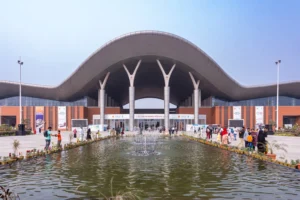
The state-of-the-art pavilions draw huge crowds at DITF-2025
With a view to attracting local and foreign visitors, the exhibitors of the month-long 29th Dhaka International Trade Fair (DITF)-2025 brought innovative architectural view at their pavilions and stalls made of various materials such as steel, board, wood, bamboo, electric cables, lights, colour and ceramic items. Chief Adviser to the Interim Government Prof Dr Muhammad Yunus inaugurated the fair at the Bangladesh-China Friendship Exhibition Centre in Purbachal, Narayanganj on 1 January, 2025. Commerce Adviser Sk Bashir Uddin and Export Promotion Bureau (EPB) Vice-Chairman Md Anwar Hossain also attended the opening ceremony. This year, 343 domestic and foreign companies took part in the fair, including 11 companies from India, Pakistan, Turkey, Singapore, Indonesia, Hong Kong and Malaysia in addition to Bangladesh. Last year, 304 companies participated in the fair, including 9 foreign companies from 5 countries. The companies set up premium pavilions, mini pavilions, and reserved pavilions at the fair venue to display various products including textiles, furniture, electrical and electronics, jute and jute products, leather products, machineries, cosmetics, home furnishings, toys, stationery, crockery, plastics, melamine, herbal and toiletries, imitation jewellery, processed food, fast food, and handicrafts. Of them, many exhibitors also offered discounts ranging from 5 to 50 per cent as well there to attract more buyers. The Ministry of Commerce and EPB have organised DITF since 1995 to promote export growth and market diversification. This is the third edition at its new venue in Purbachal, following the relocation from Sher-e-Bangla Nagar in 2022. Pavilions and stalls were awarded due to innovative architectural view The best pavilions, stalls and organizations participating in various categories were recognized by presenting crests at the closing ceremony of the fair. The first prize was awarded to 22 best companies in different categories (Kiam Metal Industries Limited, Akij Plastics Limited, RFL Plastics Limited, Prisons Department, Pran Agro Limited, M/s. Helal & Brothers, Sena Kalyan Sangstha, JDPC, BGMEA, BKMEA, Hatil Complex Ltd., Jamuna Electronics & Automobiles Ltd., Navana Furniture Limited, Vision Electronics, SME Foundation, BSCIC, Orijinal Istanbul Kristal, Turkey, Pentel (Singapore) PTE Ltd., Singapore, Kewpie Malaysia SDN, BHD, Malaysia, Sonali Bank PLC, Islami Bank Bangladesh PLC and People’s Leather Industries. The second prize was awarded to 16 companies in different categories (Savoy Ice Cream Factory Ltd., Square Food & Beverage Ltd., KY Two Tone Ltd., Alloy Aluminum Furniture Limited, Exclusive Home Tex Industries Limited, Bangladesh Machine Tools Factory Limited, Bangladesh Tea Board, Nadia Furniture Limited, Minister Hi-Tech Park Limited, Brothers Furniture, Hatim Steel Structure Limited, JMG International, Hadeks Hali DeriTekstil Dis Tic A.S., Turkey, PT Nissin Foods, Indonesia, Rabab Trading International, Hong Kong and Dutch Bangla Bank PLC. The third prize was awarded to 13 companies in different categories (Delhi Aluminium Factory, Abul Khair Milk Products Limited, SKB Stainless Steel Mills Limited, Abdul Monem Limited, BRB Cable Industries Limited, Leathergoods and Footwear Manufacturers and Exporters Association of Bangladesh, Rangpur Metal Industries-Regal Furniture, Walton Hi-Tech Industries PLC, Joyita Foundation, Messrs. Nurul Textile, M/S Tarique Carpet Industries, Indian Carpet Industries, and Indian Oriental Carpet, India). Touhiduzzaman, Deputy General Manager [Public Relations] PRAN-RFL Group said, “We have a lot of products like food stuffs, plastics items, furniture, and electronics. We display the products for customers at the exhibition every year. We receive the best pavilion awarded each year due to innovative architectural view.’ He pointed out that they always try to build their pavilion at the fair venue with excellent architectural views in new shapes to draw large crowds. “As there is a limited space and it is a temporary place, so we build our stalls considering it. After getting tender from the EPB, we talk to different firms of interior designers and architects. Basically they set up the pavilion as per our direction,” he added. Touhiduzzaman stated that the stalls are set up by different construction materials like wood board, steels, tiles, bricks and others. He remarked that their main goal is to attract more customers. We decorate our stalls focusing our products. We will try to make the best pavilions in coming days as well,” he also commented. Mahin Sarker, Pavilion In-Charge of Square Food & Beverage, noted that their stall has been a hotspot for visitors due to excellent architectural views. Our pavilion got the second best pavilion award this year. “We offered up to a 50% discount on our food and beverage items, so a lot of people purchased our products. Additionally, as our company set up an attractive pavilion so visitors drew largely here,” he added. Another a-three day fair only for exportable items in October/ November Talking to the Ceramic Bangladesh, CEO and Vice-Chairman of the EPB Md. Anwar Hossain said they tried to bring excellent architectural view in the DITF-2025. At the first time, we introduced innovative features and enhance the fair’s experience for visitors, particularly after the historic student-led revolution on 5 August, 2024. “We introduced new attractions like the 36-July Chattar and Mugdha-Sayyed Corner to showcase the revolution’s impact. Additionally, visitors enter the fair with e-tickets, eliminating the hassle of manual ticket collection.” Hossain emphasised the fair’s role in supporting local businesses and diversifying products to boost foreign currency earnings. “We invited many ceramic companies but they did not give positive response in the fair. We hope that in the next year fair, we can attract many ceramic companies in the expo as it is the potential and exportable products. “We try to organize another a-three day expo at the first time at Purbachal venue in October or November where only exportable products will be displayed. It will help to attract more foreigners. We have no actual data on foreign visitors that how many foreign visitors visited the DITF-2025 and export orders too but many foreign visitors came here,” he highlighted.
Read More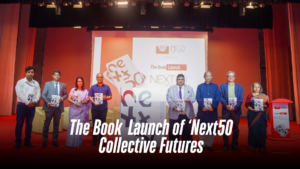
The Book Launch of ‘Next50: Collective Futures
A significant milestone in shaping Bangladesh’s future was marked today with the official launch of Next50: Collective Futures at BRAC University’s Multipurpose Hall. This landmark publication—the largest edited volume on Bangladesh’s built environment—brings together 81 authors, including many from the Bangladeshi diaspora, to explore the nation’s next five decades of progress, innovation, and connectivity. Spanning 49 chapters across nine major themes, the book examines urban and rural transformation, infrastructure, climate resilience, housing, governance, and technological innovation. Written in accessible language for policymakers, practitioners, and the general public, it bridges cutting-edge research with real-world impact, making complex ideas actionable for those shaping the nation’s future. The event was attended by some of Bangladesh’s most prominent architects, planners, and urbanists from both academia and professional practice. Distinguished guests included Dr. Syed Ferhat Anwar, Vice-Chancellor of BRAC University, and Mohammad Azaz, Administrator of Dhaka North City Corporation, who underscored the urgency of visionary thinking in driving sustainable and inclusive development. The program featured a compelling book introduction by Professor Fuad H. Mallick, Editor-in-Chief of Next50 and Dean of the School of Architecture and Design at BRAC University, followed by an insightful review from Dr. Mohammed Zakiul Islam, Professor at BUET, who highlighted the book’s interdisciplinary approach and its relevance to Bangladesh’s rapidly evolving urban landscape. Adding to the discussions, key stakeholders, including representatives from Shah Cement, reflected on the private sector’s role in shaping the built environment. The event concluded with remarks from the book’s executive editors, Dr. Tanzil Shafique and Dr. Saimum Kabir, who emphasized the collaborative effort behind the publication and its potential to influence future policies and practices. Shah Cement also expressed interest in future collaborations. Beyond the discussions, the launch served as a key networking platform for scholars, policymakers, and industry leaders, fostering dialogue and collaboration on the country’s long-term development. Attendees engaged in meaningful conversations over Iftar and dinner, reinforcing the event’s role in strengthening professional and intellectual ties. Organized by Open Studio and Context BD, with support from Shah Cement, the event also reached a wider audience through a live stream, ensuring broader engagement with the book’s mission.
Read More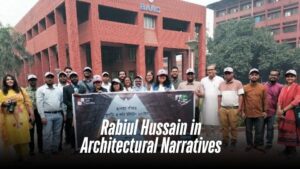
Rabiul Hussain in Architectural Narratives
On February 28, 2025 Bangladesh Institute of Architects (IAB) and the Bangladesh Liberation War Museum organized a day-long program to tribute architect Rabiul Hussain through visiting 3 of his projects- Bangladesh Agricultural Research Council (BARC), Jalladkhana Killing Ground and Jahangirnagar University. and taking a vow to protect the diversified works of the architect. Architect Rabiul Hussain (January 31, 1943 – November 26, 2019) was a prominent Bangladeshi architect, poet, art critic, short story writer, essayist, and cultural activist. A person of multifaceted talent, honored by the Government of Bangladesh with the Ekushey Padak for his contributions to language and literature in 2018, received the Bangla Academy Literary Award for his contributions to poetry in 2009, and the Bangladesh Institute of Architects (IAB) awarded him the Gold Medal for his outstanding contribution to architecture in 2016. He served four times as the President of the Bangladesh Institute of Architects, Vice-Chairman of the Architects Regional Council of Asia (ARCASIA), Vice-President of the Commonwealth Association of Architects, and President of the South Asian Association for Regional Cooperation of Architects. In addition, he was a trustee of the Liberation War Museum, an executive member of the 1971 Ghatok Dalal Nirmul Committee (Committee for Elimination of Martyrs’ Assassination), and made significant contributions to the preservation of the memories of the Independent War of Bangladesh. Although he was born in the village of Ratidanga in Shailkupa Upazila, Jhenaidah District, he completed his secondary and higher secondary education in Kushtia District. Later, in 1968, he earned his Bachelor degree in architecture from the then East Pakistan University of Engineering (now Bangladesh University of Engineering and Technology). After obtaining the graduation, he began his professional career as an architect working with architect Mazharul Islam and later joined Shahidullah Associates. Alongside his architectural practice, he also maintained a strong passion for writing. Throughout his career, he served as a life member of the Bangla Academy, and was involved in various organizations, including the Central Kachi-Kachhar Mela (a children’s and youth organization), the National Poetry Council, the Bangabandhu Sheikh Mujibur Rahman Memorial Museum, the International Film Critic Association of Bangladesh, and the Bangladesh Institute of Architects. Notable buildings designed by him include the Jalladkhana(Execution House), the Bangladesh Agricultural Research Council building, the entrance gate of Dhaka University, the Liberation and Independence Arch, the Jahangirnagar University gate, the Bhashani Hall, the Bangabandhu Hall, the Sheikh Hasina Hall, the Khaleda Zia Hall, the Wazed Mia Science Complex, the auditorium and academic building complex of Chittagong University, and alongside architect Mazharul Islam, the Bangladesh Agricultural Research Institute in Gazipur, Haji Mohammad Danesh Science and Technology University in Dinajpur, and polytechnic institutes in Chittagong and Khulna, among others. Bangladesh Agricultural Research Council (BARC) The Bangladesh Agricultural Research Council (BARC) was established in 1973 with the aim of conducting agricultural research and coordinating various related institutions in Bangladesh. Almost a decade after its founding, in 1982, architect Rabiul Hussain designed its current building. The design process, which began in 1978, spanned nearly four years. In a remarkable way, he crafted a unique architectural design using red brick masonry that harmonized with Bangladesh’s climate, nature, and way of life. This building is a symbol of post-independence architecture, reflecting a search for an architectural style; that is free from the burden of colonization in a newly liberated land. Each detail of the building echoes the same vision. The regional architectural influence of Maestro Mazharul Islam, the pioneer of Bangladesh’s regional architecture, is evident in the design, which he was fortunate to experience starting from his third year of architectural education. The building, located on a site shaped like the letter ‘L’ in the English alphabet, is easily noticeable among surrounding roads and structures. It stands at the junction of Airport Road and Khamar Bari Road, near Farmgate and Bijoy Sarani. The design symbolizes various aspects of aesthetic gravity, marking an early effort in the evolution of post-independence Bangladeshi architecture and the search for a Bengali “identity” in the country’s-built environment. The location of the building, near the capital’s main international airport at Tejgaon, limited the building’s height to four floors. The rectangular building, measuring 223 feet in length and 63 feet in width, has a total built-up area of 32,700 square feet. It is aligned along the east-west axis and is equipped with optimal provisions for cross-ventilation and prevailing south winds. The three-story building is vertically divided into three functional zones. The first floor is allocated for administrative offices; the second floor houses the executive branch. The third floor features a 7,500-square-foot conference room with seating for 280 people at its center, along with a 1,350-square-foot library and a meeting room. The first and second floors are organized along a double-loaded corridor, with two staircases at the eastern and western ends of the building. In harmony with local traditions, the roof was projected to protect the building from torrential rain and scorching sun. The BARC building essentially consists of two parts: one is the brick-clad inner shell that spans the main area, while the additional levels moderate the harsh tropical sun and protect the building during the monsoon season. Architect Mazharul Islam’s office- Vastukalabid was a key influence in experimenting with such a critical combination of climate consideration and modernist aesthetics along with that of brick mason for architect Rabiul Hussain and many young architects in the early 1970s. To give an example, his designs, including the National Institute of Public Administration (1964), encouraged a generation of architects to explore “critical regionalism” through a lens that considered climatic aspects in the visual language of architecture. Since stone is rare and fired bricks can be produced in abundance from local clay, architects saw bricks as an unprecedented symbolic representation of the delta and its culture. Representing the soil of the riverine country, bricks were the purest or most organic building material believed by the Bangladeshi architects. The “poetry” of bricks is hard to miss in the concept and construction of the BARC headquarters building. Also, the influence of
Read More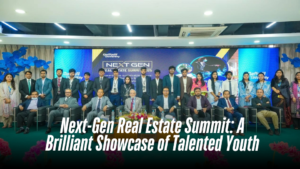
Next-Gen Real Estate Summit: A Brilliant Showcase of Talented Youth
To discuss the development and future prospects of the real estate sector, the Department of Real Estate, Daffodil International University organized the “Next Gen Real Estate Summit 2025”. This grand summit took place on February 23 and 24 at the Ashulia campus of Daffodil International University, where key figures from various government and private organizations were present. Representatives from BUET, RAJUK, House Building Finance Corporation, REHAB, the National Housing Authority (NHA), and various other industrial institutions participated in the event. The two-day summit featured formal sessions, cultural programs, and a Mezban feast. The formal session was held at the International Conference Hall of Daffodil International University, where expert speakers discussed the future development of the real estate industry and the importance of sustainable housing. The panel discussion was attended by Professor S. M. Mahbub Ul Haq Majumder, Pro Vice-Chancellor, Daffodil International University; Professor Mustafa Kamal, Dean of Academic Affairs; Professor Mohammad Masum Iqbal, Dean of the Faculty of Business & Entrepreneurship; M. Mahbubur Rahman, CEO of Rupayan City Uttara; Md. Mobarak Hossain, Director, REHAB; Kamrul Hasan, Deputy Town Planner, RAJUK; and Md. Golam Mostafa, Deputy General Manager and Chief Engineer, House Building Finance Corporation. The welcome speech at the conference was delivered by Dr. Amir Ahmed, Head of the Real Estate Department at Daffodil International University. A lively cultural event took place at the Student Lounge and the Independence Conference Center, while the Mezban feast was held at Golap Gram. One of the main attractions of the summit was the Poster Presentation Competition. The theme of the competition focused on innovative ideas in the real estate and housing sector, which are expected to play a crucial role in improving future living standards. A total of 10 teams from Dhaka University, CUET, Khulna University, Jahangirnagar University, KUET, and Daffodil International University participated in this competitive event. Each team consisted of two members from the Urban Planning, Architecture, Civil Engineering, and Real Estate departments of their respective universities. Participants presented their research-based ideas, designs, and plans for the future development of the real estate sector. At the end of the competition, the judges selected the top three teams as winners. The judging panel consisted of Nizam Ahmed, Major General (Retd.), Engineer Mujahid Monir, Major (Retd.), and Anwar Haque, Senior Journalist and Brand Communication & Corporate Head of Pa-Wang Ceramics. The first-place winners were jointly Mirajul Islam Alif and Tasnuha Pasha Tonu from Daffodil International University, and Abrar Muhtasim Pathan and Souda Samiha from Khulna University. The second-place winners were Fauzan Anowar and Fathan Anowar from Daffodil International University. The third-place winners were Minhazur Rahman Shafin and Hamim Mubtasim from Dhaka University. At the award ceremony, the distinguished guests highly praised the participants’ innovative ideas and creativity, wishing them success in their future research and development efforts in the housing sector. Dr. Amir Ahmed, Head of the Real Estate Department at Daffodil International University, stated that competitions like this inspire students to engage in new ideas and research. He added that the application of technology and innovative concepts in the real estate industry will play a vital role in the future development of housing systems. The “Next Gen Real Estate Summit 2025” was not just a conference; it served as an open platform for discussions on the role of technology in future urban planning and the real estate sector. Experts believe that student participation, research, and innovative presentations will open new horizons for the development of the real estate industry. Written by Anonno Aziz Nibir
Read More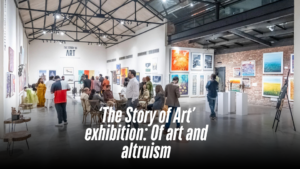
‘The Story of Art’ exhibition: Of art and altruism
Organized by Dhaka Storytellers from February 8 to February 13, the lush gallery space Aloki Greenhouse in the capital’s Gulshan hosted an exhibition titled The Story of Art. The exhibition boasted a stunning collection of 80 to 90 artworks, captivating audiences for a week. Curated by Syeda Adiba Hussain, co-founder of Dhaka Storytellers, The Story of Art was more than just a display of artistic excellence. This was Dhaka Storytellers’ second art event, following the charity exhibition Art for Charity in August 2024. In the same vein, The Story of Art supported a larger cause, with a portion of the proceeds donated to five schools and one college in Sylhet, demonstrating the power of art to create tangible change beyond gallery walls. Beyond the beauty of its displays, the exhibition underscored the immense power of art to inspire and drive change. By merging artistic excellence with humanitarian efforts, it aimed to uplift communities, empower individuals, and support crucial social causes. Having been in the making for almost a year, the exhibition was carefully planned to bring together some of Bangladesh’s most celebrated artists. The lineup included some of the country’s most notable names, such as Rafiqun Nabi, Monirul Islam, Hamiduzzaman Khan, and Kanak Chanpa Chakma. Furthermore, the exhibition commendably featured artworks by several emerging artists, creating a dynamic collection that bridged generations of artistic expression. From simply beautiful paintings to thought-provoking sculptures, The Story of Art was also an opportunity for both seasoned and budding collectors to acquire unique pieces while contributing to a noble cause. The grand opening on Friday, February 7, set the tone for the week-long exhibition. The launch was attended by an invitation-only audience, including the participating artists, their families, media professionals, and notable guests. As the exhibition drew to a close, it left behind more than just a collection of breathtaking visuals; it also left an indelible impression on those who visited. The fusion of artistic expression with social commitment deeply moved attendees, inspiring them to consider the vast potential of art beyond aesthetics. The exhibition carried a narrative that extended far beyond the gallery walls, reinforcing the idea that art is not merely to be observed but to be experienced, felt, and acted upon. The event was about more than just admiring artworks—it was about creating a shared vision where artists, curators, and spectators all committed to a cause bigger than themselves. It demonstrated that art has the ability to transcend traditional boundaries, reaching into the hearts of individuals and communities, sparking conversations, and inspiring action. Ultimately, The Story of Art was a celebration of creativity’s ability to inspire, connect, and transform lives. The week-long show was a powerful testament to the transformative synergy between art and altruism. It showcased how art exhibitions, when intertwined with a greater purpose, can spark meaningful change. Written By Shahbaz Nahian
Read More
Akij Tableware Announces Bangladesh’s First Food Plating Reality Show, “Art of Plating: Season 2” Offering 20,00,000 BDT in Prizes
Following the overwhelming success and audience acclaim of its first season, Akij Tableware is proud to announce the return of Bangladesh’s first-ever food plating reality show, “Akij Tableware Art of Plating,” with the launch of its second season. The show aims to discover the nation’s most talented food plating artist, with the winner taking home a grand prize of 10,00,000 BDT. In addition to the grand prize, the competition offers substantial rewards for the runners-up. The first runner-up will receive 5,00,000 BDT, while the second runner-up will be awarded 3,00,000 BDT. Furthermore, the top 30 contestants will be honored with a variety of prizes, including crests, certificates, culinary courses, and exclusive dinner sets from Akij Tableware, culminating in a total prize pool of 20,00,000 BDT. Commenting on the initiative, Chief Operating Officer of AkijBashir Group Md. Khorshed Alam shared, “After receiving an enthusiastic response in season one, we have expanded this season to encompass a broader audience, uniting plating artists from all corners of Bangladesh. Our goal is to present the unique culture and storytelling embedded in food plating art to the world and enrich this creative field.” The highly anticipated reality show will be broadcast on NTV, Channel i, and Deepto Television, with availability on popular OTT platform Chorki. Participants are required to submit photos of their best food plating through the official website. From there, experienced and renowned chefs will select the top 30 contestants based on their creativity and skills, providing them with the opportunity to showcase their talents on national television. At a press conference held on Tuesday, February 4, 2025 at a renowned hotel in the country, the chief judge of the show Chef Daniel C. Gomez, Head of Marketing of AkijBashir Group Md. Shahriar Zaman, and Chief Operating Officer of the company Md. Khorshed Alam, and officials of Akij Tableware were present. They shared insights into the upcoming season, underscoring its mission to celebrate food plating as an art form and provide a platform for local talent to shine on a national stage.
Read More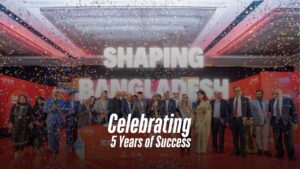
Celebrating 5 Years of Success
The soft glow of chandeliers illuminated the polished ceramic tiles as industry leaders, architects, and innovators gathered at the Sheraton Hotel in Dhaka. The air was filled with excitement as enthusiasts and professionals came together to celebrate the 5th anniversary of Ceramic Bangladesh Magazine. The event, styled “Shaping Bangladesh: Designing Tomorrow, Building Today,” was more than just a conference — it was a call to action for Bangladesh’s construction, real estate, and ceramic industries to embrace sustainability, innovation, and resilience. This milestone event marked a significant achievement for the publication, which has become a cornerstone of the ceramic industry in Bangladesh. Held on 30 January 2025, the event brought together experts to discuss the evolving landscape of architecture, engineering, and sustainable building materials. From leading ceramic manufacturers to top architects, the gathering aimed to chart a vision for a greener, more efficient Bangladesh. Preparing for the Future and Post-LDC Impact One of the central themes was Bangladesh’s upcoming graduation from its least-developed country (LDC) status in 2026. Chief guest SK Bashiruddin, Commerce Adviser to the interim government, emphasised the need for businesses to prepare for the challenges ahead. “In the coming years, Bangladesh will face numerous challenges following the LDC graduation. Innovation is crucial for progress. Corruption and bureaucratic complexities have hindered business growth over the past 15 years, but our focus should be on sustainability to foster industrial growth,” he said. He called for collaboration among stakeholders to lower operational costs, innovate, and create a more business-friendly environment. He acknowledged the ceramic industry’s contributions, commending entrepreneurs for their innovative products that enhance both aesthetics and functionality in modern infrastructure. Special guest, RAJUK Chairman Major General (retd) Mohammad Siddiqur Rahman Sarker, stated that even 100-storey buildings would be permitted if built in an environmentally friendly manner. Hence, the DAP (Detailed Area Plan) is being amended. The seminar commenced with a grand welcome address by Mr. Irfan Uddin, the Editor-in-Chief of Ceramic Bangladesh Magazine, who reflected on its journey over the past five years. He expressed gratitude to the readers, contributors, and industry partners who have supported the magazine’s mission to promote and celebrate the country’s ceramic industry. Innovation & Sustainability in Construction The event featured two thought-provoking panel discussions. The first session, “Innovation for a Sustainable Future: Exploring Material Innovations & Sustainability,” moderated by Dr. Amir Ahmed, Associate Professor and Head of the Department of Real Estate at Daffodil International University, focused on cutting-edge sustainable materials and circular economy principles in the real estate and construction sector. The second session, “Building a Greener Future: The Role of Sustainability in Architecture,” led by Architect Zannat Jui, explored green building certifications, passive design strategies, and the role of technology in climate-resilient infrastructure. Several notable speakers included esteemed professors and architects, such as former BUET Prof. Dr. M Shamim Z Bosunia, Architect Prof. Abu Sayeed M Ahmed, Ar. Prof. Rafiq Azam, Ar. Jalal Ahmed, Ar. Nazli Hussain, Ar. Bayejid Mahbub Khondker, Ar. Didarul Islam Bhuiyan Dipu, Ar. Khondoker Asifuzzaman Rajan, RAJUK Chief Engineer Mohammad Nurul Islam, Engr. Shamsul Alam, Executive Director (Design) of Concord Real Estate Limited Ar. Faisal Ahmed, Managing Director of BTI Engr. Faizur Rahman Khan, Chief Operating Officer of AkijBashir Group Mohammad Khourshed Alam, Chief Operating Officer of Meghna Ceramics Industries AKM Ziaul Islam, Director of GPH Ispat Salehin Musfique Sadaf, Chief Business Officer of Metrocem Cement Ltd. Asadul Haque Sufyani, Consultant of Khadim Ceramics Babor Hossain, and Senior Vice President of BCMEA Mohammad Mamunur Rashid emphasized on the vital role Ceramic Bangladesh Magazine has played in showcasing architectural innovations. Ar. Professor Rafiq Azam, the Principal Architect of SHATOTTO Architecture for Green Living, and Ar. Professor Dr. Abu Sayeed M. Ahmed, the President of the Institute of Architects Bangladesh (IAB), delivered two distinct keynote speeches titled “The Art of Social Changes” and “Reviving the Roots: Conservation and Restoration Progress in Bangladesh,” respectively. Chief Operating Officer (COO) of AkijBashir Group Mohammad Khourshed Alam said the crisis of gas and electricity is the biggest challenge for industries in the country right now. Gas is crucial for the ceramic industry’s development. “However, we have to focus on solar energy to continue industries. Technology adaptation should be focused as well,” he added. AKM Ziaul Islam, Chief Operating Officer (COO) of Meghna Ceramic Ind. Ltd, said the ceramic industry has huge opportunities. There is a need to increase the interaction between industries and academia. Salehin Musfique Sadaf, Director of Strategy & Transformation at GPH Ispat, emphasized that Bangladesh lacks sufficient raw materials to meet its demands. He pointed out that energy sources such as gas or coal are also considered raw materials. Therefore, the country must focus on adequate coal as a locally cheaper energy source and adopting recycling methods to increase the use of recycled construction materials. He stressed the importance of research and development (R&D) in achieving these goals. Role of the Ceramic Industry BCMEA President Moynul Islam reiterated the ceramic industry’s commitment to sustainability, highlighting the need for government support and private sector collaboration to foster long-term growth and global competitiveness. Industry leaders stressed the need for increased research and development (R&D) in using recycled construction materials and ensuring sustainable building practices. As Bangladesh moves toward rapid urbanisation and economic transformation, “Shaping Bangladesh: Designing Tomorrow, Building Today” underscored the need for innovation, sustainability, and resilience. The discussions at the event served as blueprints for a more sustainable Bangladesh. Moynul Islam also said, “Bangladesh’s upcoming LDC graduation in 2026 presents many challenges for the local ceramic industry. With the loss of preferential market access, export tariffs are likely to increase, making our products less competitive in global markets. In addition, imports will also increase due to trade liberalization and FTAs in the post-LDC period. To maintain our position, we must focus on innovation, quality enhancement, and cost efficiency. Strengthening partnerships, investing in modern technologies, and adopting sustainable practices will be key to navigating this transition and positioning Bangladesh as a trusted ceramic exporter in the region.” Sustainability Efforts Mohammad Mamunur Rashid, Senior
Read More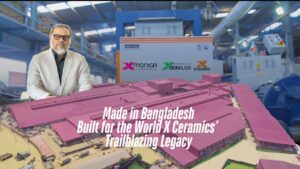
Made in Bangladesh Built for the World X Ceramics’ Trailblazing Legacy
For over a thousand years, ceramics have shaped civilizations—gracing grand palaces, elegant table settings, and timeless architectural masterpieces. Once a symbol of affluence, these exquisite creations gradually became integral to daily life. Like the rest of the world, Bangladesh embraced ceramics. For years, the country relied on imports to meet its growing demand. But that era is now history. Today, Bangladesh’s ceramic industry stands strong, catering to domestic needs and expanding its footprint in international markets. A Market Leader in Innovation The ceramic sector thrives on three key pillars—ceramic tableware, tiles, and sanitaryware. Among the pioneers driving this evolution is X Ceramics Limited, a company synonymous with innovation and excellence. A subsidiary of Index Group, X Ceramics has played a vital role in positioning Bangladesh as a key player in the global ceramics market. Founded in 2009 by visionary entrepreneur Mahin Mazher. X Ceramics began commercial operations in February 2010 as a Bangladesh-Italy joint venture. From crafting exquisite designs to setting industry benchmarks, X Ceramics continues to push the boundaries of craftsmanship, resilience, and vision. Game-Changing Innovations X Ceramics has been a trailblazer, introducing groundbreaking innovations: Homogeneous 60×60 cm Tiles: Before this, the domestic market mainly featured 30×30 cm and 40×40 cm tiles. X Ceramics pioneered the production of larger homogeneous tiles. Polished Glazed Vitrified Tiles (PGVT): The first company in Bangladesh to introduce PGVT, raising the bar for durability and aesthetics. In 20x30cm tiles x ceramics bring the concept of light, deep and hi liter tiles. Before x ceramics there are concepts of decor & border concept. In 30x45cm tiles x ceramic first introduce digital print tiles. X ceramics is the first company who introduce soluble salt tiles in Bangladesh market. Specialty Tile Ranges: Exclusive collections such as Royal Wall Series, Anti-Slip 30×30 cm, Rock-X Series, Stone Shield, Temp Control Tiles and X Germy Proof—all designed for both functional and decorative excellence. With state-of-the-art manufacturing facilities and a commitment to R&D, X Ceramics has diversified design possibilities and aligned with global architectural trends. Expanding Horizons: Entering the Sanitaryware Market With a stronghold in tiles, X Ceramics is now entering the sanitaryware segment, with commercial production expected to begin in March or April 2025. A Leader in Bangladesh’s Porcelain & Ceramic Tiles Industry X Ceramics is one of the largest porcelain and ceramic tile manufacturers in Bangladesh, focusing on eco-friendly production and customer satisfaction. With cutting-edge technology, it has redefined industry standards, setting a new benchmark for excellence. X Ceramics proudly presents Bangladesh’s first Germi-Proof Jaynamaz tiles, offering 99% protection against harmful germs with advanced antimicrobial technology. Versatility in Design & Durability: Quality That Lasts X Ceramics offers a diverse range of tiles suitable for both residential and commercial spaces. Key features include: Easy to clean Superior durability (lasting over 20 years) Toxin-free composition Weather-resistant, adaptable to extreme conditions Water, moisture, and UV-resistant Sustainability at Its Core Committed to environmentally responsible manufacturing, X Ceramics operates in an industrial zone in Gazipur’s Sreepur Upazila, located nearly 35 kilometers north of Dhaka, the capital of Bangladesh. The company strictly adheres to green practices, including: Rainwater & groundwater conservation Recycling facilities CFC-free cooling systems LED lighting & energy-efficient systems Solar power utilization Workplace Safety & Employee Well-being X Ceramics prioritizes occupational health and safety, ensuring fair wages, timely payments, and employee benefits. The company fosters a responsible work environment with transparency in production. “We are operating a round-the-clock Effluent Treatment Plant (ETP) to minimize the environmental impact and ensure the sustainability of our ceramic production process. By effectively treating wastewater, we aim to protect the local environment while upholding the highest standards of eco-friendly manufacturing,” said Mr Shahturur Rahman, Senior Vice President. “We are also planning to implement recycling initiatives for waste materials. Additionally, heat management is a key concern, and we are exploring solutions to reduce heat emissions in our operations,” he said. The Italian Touch: A Brand Synonymous with Quality X Ceramics is widely recognized as the brand ambassador of Italian ceramic tiles in Bangladesh. After just two years, the company began importing tiles from Italy’s renowned Monika brand, solidifying its position as a premium tile provider in the market. Shaping the Domestic and Export Markets According to Shahturur Rahman, the company prioritizes: Design innovation Quality enhancement Expanded production capacity Research and development Rahman noted that imports are declining due to the current political situation, making locally produced ceramics an increasingly attractive option. “We must break free from the fantasy of using foreign products. Our industry is fully capable of producing ceramics on par with international brands,” he said. The demand for premium-quality tiles has been growing by around 10 percent annually over the past decade, driven by affluent customers. With rising global demand, export opportunities for high-end tiles are expanding. Beyond Business: A Passion for Sports X Ceramics has also made a mark in the sports industry as the proud owner of Sylhet Strikers in the Bangladesh Premier League (BPL), the country’s premier T20 cricket tournament. With an unwavering commitment to excellence, X Ceramics is not just shaping the future of Bangladesh’s ceramic industry but also redefining global standards—one tile at a time. Ceramic Industry Struggles: Urgent Call for Gas and SD Relief Mr Shahturur urged the interim government to ensure a continuous gas supply and to remove the supplementary duty (SD) on local ceramic products to protect the industry. He highlighted that overall production, including that of his company, has sharply declined in recent months due to the ongoing gas crisis. “Challenges such as the gas shortage, price increases, SD, and rising operational costs have severely impacted the ceramic sector, turning it into a struggling industry,” Rahman added. Written By Sajibur Rahman
Read More
Sarah Resort The Evolving Elegance of Journey Beyond a Masterplan
While most architectural marvels begin with a scrupulously crafted masterplan, Sarah Resort took a different path, one of organic evolution. Instead of a rigid blueprint, it grew gracefully, expanding phase by phase through strategic land acquisitions. Nestled in the historic Bhawal Rajabari, Gazipur, just one and half hour drive from Dhaka, the resort is a masterpiece shaped by the creative vision of architect Naim Ahmed Kibria and architect Asia Karim Deepa from the renowned firm Indigenous. The inception of Sarah Resort wasn’t born out of commercial ambitions but rather from a personal desire – to create a retreat for friends and family. Md. Shahadat Hossan, the founder of Sarah Resort, originally owned 1.65 acres of wilderness in Gazipur (where the resort is located now). At the time, the land held nothing but an incomplete structure – mere pillars standing in solitude amidst nature. In late 2015, Md. Shahadat Hossan envisioned transforming this barren space into a gathering haven and set an ambitious goal: to host an event on 16 December, inviting loved ones to celebrate in a newly built retreat. To bring this vision to life, he turned to architect Naim Ahmed Kibria. To meet holiday desires, this initiative from Fortis Group is indeed in a class of its own. “Time was our biggest challenge,” recalls Mr Naim. “We had an incredibly tight deadline, and constructing a structure from scratch was nearly impossible. Instead, we decided to make use of the existing columns and beams.” What followed was a remarkable feat of architecture and determination. Within just one month, the team transformed the skeletal remains into a charming cottage, integrating brick gratings in the roof. The event was a success and everyone loved the cottage which merged effortlessly with the picturesque ambience. The appreciation evoked the desire in Mr Shahadat, to build a resort in the premise so that mass people can enjoy the beauty of the landscape. Md. Shahadat Hossan soon started acquiring neighbouring land, ensuring that every addition felt like a natural extension of the original landscape. The final phase of construction was completed in 2019, expanding the resort from 1.65 acres to an impressive 70 acres, with a built area of 3.21 acres. “It was an extensive project,” says Mr Naim. “We visited the site over 100 times to understand its natural flow, ensuring each expansion felt connected, organic, and immersive.” This fluid, intuitive approach resulted in a resort experience that feels more dynamic than a rigid masterplan could have allowed. We asked the architect what his favourite part from the resort was and he did not take a second to answer: it is the red cottages, arranged along a spiral pathway, forming a shape reminiscent of flower petals when viewed from above. Interestingly, the particular piece of land (where the cottages are located now) once housed an administrative estate of the Bhawal kings, surrounded by a protective moat which was dried up then. Instead of erasing history, the architects revived the moat and built the cottages around it, preserving its essence. Beyond the secluded cottages, Sarah Resort also has a 10-story tower for accommodation, offering a breathtaking panoramic view of the surrounding greenery. “Guests often tell us that waking up in the upper-floor rooms feels like floating in the clouds,” Mr Naim says. One of the most captivating aspects of Sarah Resort is its expansiveness – with nearly 95 per cent of its total area preserved as open space. Rather than altering the landscape drastically, the architects embraced the natural terrain, ensuring that every structure harmonises with its surroundings. Prioritising sustainability and authenticity, they relied predominantly on local materials, reinforcing the resort’s deep-rooted connection to its environment. The architectural philosophy of Sarah Resort bears a striking resemblance to the “Never demolish, always add, from inside out” approach pioneered by Lacaton & Vassal, the renowned French architectural duo. Anne Lacaton and Jean-Philippe Vassal won the 2021 Pritzker Architecture Prize, the most prestigious award in the field of architecture. Other than the aforementioned historic moat, another evidence to this approach is the restoration of the original clay houses found on the property. Instead of replacing them, architect Naim preserved and upgraded these traditional dwellings, equipping them with modern facilities while maintaining their rustic charm. At its core, Sarah Resort embodies an effortless fusion of nature and modern luxury. With an eco-conscious design that meets state-of-the-art facilities, it stands as a family-friendly haven, catering to visitors of all ages. From quaint cottages and restored clay houses to contemporary tower rooms and lodge accommodations, the resort offers a diverse range of stays, welcoming guests from all walks of life to experience its unique blend of heritage, innovation, and tranquility. For those in search of adventure, the resort houses an array of exhilarating activities, including zip-lining over scenic landscapes, boating across natural and artificial lakes, and exploring lush outdoor spaces. Guests looking to unwind can lounge by the swimming pool or take in the serene surroundings from various tranquil garden retreats. “The founder is a passionate sports enthusiast,” adds Mr Naim. “That’s why a significant portion of the resort’s land has been dedicated to outdoor recreation, ensuring guests can engage in a variety of activities while staying connected to nature.” Kaniz F Supriya
Read More
GPH Ispat Revolutionizing Steel Production with Green Practices
GPH Ispat Ltd takes pride in meeting all steel-related needs of its esteemed clients, combining top-notch quality products with unparalleled customer service. As articulated by GPH’s Director (Strategy & Transformation), Salehin Musfique Sadaf, in an exclusive interview to Ceramic Bangladesh, “GPH aims to fulfill all steel-related requirements of its extraordinary clients by offering best-quality products paired with exceptional service.” GPH Ispat Ltd, founded in 2006 and commenced commercial operations in 2008, embodying its guiding principles: God-fearing, Plain living, and High thinking. Conceived by visionary leaders and experienced traders, GPH was established to provide premium-quality steel products to the Bangladeshi market. Since its inception, GPH has relentlessly strived to deliver maximum value to its customers by consistently offering the best steel products available. The company made history in 2020 by introducing the Quantum Electric Arc Furnace—the world’s most advanced process for producing construction-grade steel—marking its debut in Asia. The extraordinary foresight of the founder, Mohammed Jahangir Alam, in establishing this state-of-the-art manufacturing unit, has garnered international acclaim. Industry experts from the USA, Saudi Arabia, and India have visited the facility to replicate its success in their respective countries. GPH has set an exemplary standard in prioritizing people and planet over profit by producing green steel products with minimal greenhouse gas (GHG) emissions. This trailblazing approach to sustainability has established GPH as a benchmark in the steel industry. “I was destined to return to my beloved Bangladesh—settling abroad was never part of the plan. Elevating Bangladesh on global platforms has always been my dream. Of all the sectors in our family business, I chose steel because of its transformative potential. Steel is not only versatile but also has the power to build nations and even reach into space,” shared Salehin Musfique Sadaf. Reflecting on a pivotal moment in 2017, Salehin described a conversation with his father while traveling from Dortmund to Bremen, Germany: “We discussed how developed nations have nurtured industries across generations to sustain their economies. These core industries, alongside their complementary sectors, have matured to surpass even their foundations in profitability. It became clear to me that investing in metals and materials is vital for Bangladesh’s self-reliance and economic resilience. Developing upstream and downstream industries could reduce trade deficits and save significant foreign currency.” At GPH, we produce Steel billets as semi-finished products and 3 different grades of construction grade steel rebar as finished product. Out of 420, 500 and 600 grade rebar, GPH is only able to produce 600 grade rebars in Bangladesh because of its distinct technical capability allowing stakeholders to be able to reduce their consumption while increasing performance. Due to maintaining the highest of the standards GPH was able to export around 125,000 metric tons of steel billet to China which is a net steel exporter country. Along with prime products since last 1 year we have partnered with Leviat Sdn Bhd, a global leader in construction technologies to promote optimized construction techniques and supporting products in Bangladesh. ‘Leviat’ is a part of fortune 500(S&P) company. We also sell medical and industrial grade oxygen and nitrogen to our valuable clients. The people who think about quality will always choose GPH because of its Moral integrity, its capability in utilizing valuable resources more efficiently and obviously visionary leadership behind it. The GPH products not only ensure the best physical property but also ensure the best chemical composition among any other brands. Sulphur and phosphorus being the most challenging elements in any mild steel products, with the help of best technology in steel making only GPH can maintain a proper ratio of these two elements consistently. These are not any claims, this can be easily proven by the test report gained from reputed facilities. When other brands are only being able to match the specification, GPH is passing tests with extraordinary differences compared to others which show our commitment to offer the best products in the market. With the only accredited lab facility in the steel industry, GPH supports stakeholders in realizing their aspirations with pride. The company’s devotion to economic, environmental, and social sustainability is reflected in its operations. For instance, GPH uses 115 kg of steel scrap to produce 100 kg of pure steel, ensuring unmatched quality. In comparison, other brands use only 112 kg of scrap for the same output—a testament to GPH’s pursuit of added purity and customer satisfaction. GPH is capable to produce 1.0 million tonnes of billet and different parts of prefabricated building materials each year. GPH Ispat Limited remains committed to going above and beyond, reshaping the steel industry while upholding its promise of excellence and sustainability.
Read More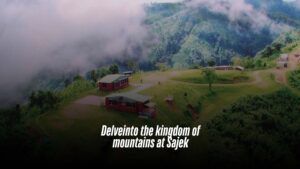
Delveinto the kingdom of mountains at Sajek
It’s unlikely not to hear of the name Sajek Valley whenever some tourist spot suggestions pop up these days among Hodophiles. Which makes it one of the most popular tourist spots located in the verdant hills of the Kasalong range of mountains amidst the serene and exotic beauty of nature. Sajek Valley is often referred to as the “Queen of Hills” and the “Roof of Rangamati,” and it has all the right reasons to be titled so. The valley is characterized by lofty mountains, thick forests, expansive grasslands, and miles of winding roads. The Mayni River and Mayni Range must be crossed in order to reach the Sajek Valley. Located in the Baghaichori Upazila of the Rangamati Hill District, the Sajek River, also called the Kasalong River, is the largest union in Bangladesh and divides Bangladesh from India. Sajek Valley, which was previously the scene of insurgencies and is now surrounded by the hills of Mizoram to the east and Tripura to the north, represents Bangladesh’s cultural diversity and encourages people of all ethnic backgrounds to develop tourism there for socio economic advancement. The tribes of the Lusai, Pangkhoa, and Tripura live in Sajek. Here the locals are mostly from Tripura and lusai tribes. The village of Kalank Para, on the last frontier of the Sajak Valley, is inhabited by the Lusai people. Few Chakma also lives nearby. The simple and basic indigenous lifestyle of local people is just fabulous for visitors to spend a good time here. Sajek is now also willing to assist individuals in their pursuit of benefits, whether it be by assisting them in their tourist endeavors or by involving them in them. This is definitely unusual when considering Bangladesh. Unmissable One of the main draws for visitors to Sajek is Konglak Hill. The Lusai community lives in Konglak, the last village in Sajek Valley. From the Konglak Hills, one can witness the origins of the Karnafuli River, the Lusai Hills of India. There is a two-hour journey through Ruilui Para that leads to the Kamalak fountain. This beautiful fountain is also known to many people as Padaam Toisha Jharna or Sikam Toisha Jharna. Whether it’s day or night, Sajek always appears more like a magnificent piece of art made by an artist. One of the wonderful aspects of Sajek is how nature unfolds here in its best forms. A sleek rainbow can often be noticed coming through the piles of clouds right after a good rain. Tourists especially suggested to not miss the dawn. The white clouds and the sunrise/sunset light create an astounding environment to please both the eyes and soul. To see the sunrise, visiting the Hollypad early in the morning is highly recommended. The afternoon’s colour of the setting sun from a high point is guaranteed to entice you. Post evening, the sky is mostly covered with a blanket of stars. Upon your return from Sajek Valley, you can also take in the sights of Dighinala Banbihar, Hazachara Jhorna, and the Dighinala hanging bridge. There are some local 4 wheels drive cars that are used for transportation called Moon Car or Chander Gari. Usually, the moon car has the capacity to carry 10 to 15 passengers. It is claimed that one must try these cars when they visit here. While traveling through the curving hill route to Sajek, a car is suggested be reserved for a hassle-free journey. This place is also considered ideal for trekking. To have a pleasing time here, staying in resorts is highly recommended, as Sajek offers a variety of high-end resorts that are totally worth a visit. They are designed in such a way that they will ensure an unforgettable trip throughout, along with enjoying the natural essence of the place. And to conclude, the most unmissable thing here is the variety of authentic tribal food, which is impossible to find elsewhere. Most of the cuisines are prepared with rare ethnic ingredients by traditional chefs. When and how to get there Sajek is beautiful in all seasons. With the changing of the seasons, it takes on a stunning new hue. So regardless of the season, one can get a new taste of Sajek. But in the rainy season, autumn, and late autumn, you will feel the white clouds more closely. However, the best part of Sajek is the surprise of the weather it has to offer every day. Hence, it’s never a dull moment here. Although Sajek is located in Rangamati district, the communication system is good through Khagrachari. There is no direct connection from Dhaka to Sajek Valley. However, you can take the train to Feni then take the taxi to Sajek Valley or by bus to Khagrachari from Dhaka and then to Sajek. Other transportation options including bus is also available for a comfortable journey overall. Alternatively, you can take the bus to Chittagong then take the taxi to Sajek Valley. It takes two to three hours to travel from Khagrachhari to Sajek Valley across the road’s high peaks and falls. Hence it can be said without a doubt to experience the place’s actual beauty firsthand rather than merely reading and viewing enough evaluations about it.
Read More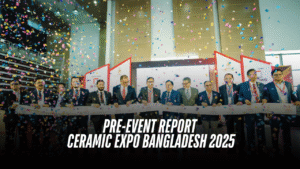
PRE-EVENT REPORT CERAMIC EXPO BANGLADESH 2025
The most awaited Ceramic Expo Bangladesh 2025, 4th edition is going to take place from 27th November to 30th November 2025 at International Convention City Bashundhara (ICCB), at the Expo Zone (Tent Hall), Kuril, Dhaka, Bangladesh. It is going to be one of the grandest celebrations in the world of ceramics unlike the previous 3 successful events on 2017, 2019, 2022 consecutively organized by Bangladesh Ceramic Manufacturers and Exporters Association (BCMEA) and supported by Export Promotion Bureau (EPB) of Bangladesh Government. The arrangements of the exhibition and seminars represent the most aspiring & the biggest events in the ceramics community platform to showcase the local manufacturers and exporters world class products globally and also helps to create long term positive impact on the expansion & growth of the ceramic industry in Bangladesh. Bangladesh is considered as the potential booming market for the ceramic industry in South Asia which makes the Ceramic Expo Bangladesh 2025 exceptionally lucrative opportunity and a leading example for the expansion of the industry. The arrangement of Ceramic Expo Bangladesh 2025 is going to be a 4-day long event with many exciting opportunities to interact with the global community & portraying local offerings in the global platform. The exhibition will enhance the chance to exhibit all the sub sectors of ceramic products such as tableware, tiles, sanitary ware, and ceramic bricks. There will also be some representation of ceramic production machinery, advanced ceramics, raw materials & latest innovation of technologies to upgrade the ceramics world. As the Associate Partner Bangladesh Ceramic Society, Real Estate and Housing Association of Bangladesh (REHAB); International Event Partner Unifair Exhibition Services, ACIMAC, Messe Munchen; Support Partner Tecna, Asean Ceramics, Keramika Indonesia, Ceramics China; Knowledge Partner Nanomaterials and Ceramic Engineering, BUET, Ceramic ISC; Strategic Partner Ant Network, Uniceramics; Official Magazine Partner Ceramic Bangladesh Magazine, Asian Ceramics and Media Partner Ceramic Focus and Ceramic India will be there. It is expected that there will be more than 120+ exhibitors, 25000+ visitors, 500+ delegates, 300+ brands will be participating in the exhibition. The event is going to be one of the largest gatherings for the ceramic professionals, architects, engineers and related industry individuals in South Asia biannually. The expo will cover a 17,000 sqm expo area with enthusiastic participation from 25+ countries such as China, Vietnam, India, Malaysia, Italy, Germany, Thailand etc. along with the local manufacturers of Bangladesh. The valued Principal Sponsor of the Ceramics Expo Bangladesh 2025 is going to be Sheltech Ceramics Ltd., Platinum Sponsor are DBL Ceramics Ltd. Akij Ceramics Ltd. and Meghna Ceramic Ind. Ltd. and the Gold Sponsors are Mir Ceramic Ltd., Abul Khair Ceramic Ind. Ltd., HLT & DLT Technology and Sacmi Imola SPA respectively. There will be arrangements of buyer-supplier meet and scope of one to one business networking. The event will be full of new surprises and exciting activities for all the participants and visitors. There will be arrangement of- Day-long meet-up with the Architects Day-long engagements opportunity with the Dealers, Interior Designers & Fitters Seminar of Five Innovative Topics related to ceramic industry One Exclusive Seminar with prominent Architects Raffle draw each day of the event Job Fair Award and recognition for the sponsors and participants Exclusive Gala Dinner Ceramic Expo Bangladesh 2025 is going to the most promising and progressive event of the ceramics world internationally. It will bring a diverse array of exhibitors, suppliers of the raw materials and machineries, related industries, ceramic industry experts, high officials, government entities to enhance the drive of innovation, collaboration and advancement together under a single platform at a time. The event will also enable the opportunities to explore insightful seminars and conferences to share industry related topics, advancement of the ceramic world and future of ceramics from the industry leaders, resource persons and industry experts. There will be multiple b2b meetings, b2c meetings and business networking opportunities to create more long term business relations through expansion of business collaboration. There will be a job fair, award giving ceremony, exciting gifts for the visitors & exhibitors & so on.
Read More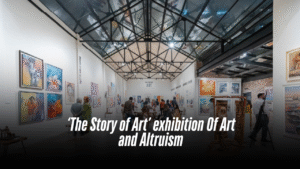
‘The Story of Art’ exhibition Of Art and Altruism
Organized by Dhaka Storytellers from February 8 to February 13, the lush gallery space Aloki Greenhouse in the capital’s Gulshan hosted an exhibition titled The Story of Art. The exhibition boasted a stunning collection of 80 to 90 artworks, captivating audiences for a week. Curated by Syeda Adiba Hussain, co-founder of Dhaka Storytellers, The Story of Art was more than just a display of artistic excellence. This was Dhaka Storytellers’ second art event, following the charity exhibition Art for Charity in August 2024. In the same vein, The Story of Art supported a larger cause, with a portion of the proceeds donated to five schools and one college in Sylhet, demonstrating the power of art to create tangible change beyond gallery walls. Beyond the beauty of its displays, the exhibition underscored the immense power of art to inspire and drive change. By merging artistic excellence with humanitarian efforts, it aimed to uplift communities, empower individuals, and support crucial social causes. Having been in the making for almost a year, the exhibition was carefully planned to bring together some of Bangladesh’s most celebrated artists. The lineup included some of the country’s most notable names, such as Rafiqun Nabi, Monirul Islam, Hamiduzzaman Khan, and Kanak Chanpa Chakma. Furthermore, the exhibition commendably featured artworks by several emerging artists, creating a dynamic collection that bridged generations of artistic expression. From simply beautiful paintings to thought-provoking sculptures, The Story of Art was also an opportunity for both seasoned and budding collectors to acquire unique pieces while contributing to a noble cause. The grand opening on Friday, February 7, set the tone for the week-long exhibition. The launch was attended by an invitation-only audience, including the participating artists, their families, media professionals, and notable guests. As the exhibition drew to a close, it left behind more than just a collection of breathtaking visuals; it also left an indelible impression on those who visited. The fusion of artistic expression with social commitment deeply moved attendees, inspiring them to consider the vast potential of art beyond aesthetics. The exhibition carried a narrative that extended far beyond the gallery walls, reinforcing the idea that art is not merely to be observed but to be experienced, felt, and acted upon. The event was about more than just admiring artworks—it was about creating a shared vision where artists, curators, and spectators all committed to a cause bigger than themselves. It demonstrated that art has the ability to transcend traditional boundaries, reaching into the hearts of individuals and communities, sparking conversations, and inspiring action. Ultimately, The Story of Art was a celebration of creativity’s ability to inspire, connect, and transform lives. The week-long show was a powerful testament to the transformative synergy between art and altruism. It showcased how art exhibitions, when intertwined with a greater purpose, can spark meaningful change. Written by Shahbaz Nahian
Read More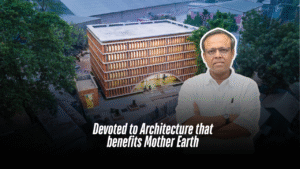
Devoted to Architecture that benefits Mother Earth
Architecture is one of the most profound forms of art that turns into reality, where humans and the environment interact. From the outset of Architect Bayejid Mahbub Khondker’s celebrated career, his design inspiration has consistently driven him to create impactful designs that seamlessly integrate with their surroundings, enhancing natural beauty without causing disruption. Bayejid graduated from the Department of Architecture at the Bangladesh University of Engineering and Technology in 1996. Following his graduation, he spent two years contributing to the private sector before transitioning to the government sector in 2000. Up until 2010, he served as assistant chief architect at the Department of Architecture under the Ministry of Housing and Public Works in Bangladesh. “Like any other art form, architecture thrives on creative freedom. The constraints of a government position limited my ability to fully nurture this creativity. Thus, I chose to take early retirement and established my own firm, Nakshabid,” he explained. In the 14 years since the inception of Nakshabid, Architect Bayejid’s career has taken interesting turns. His portfolio now comprises a diverse range of projects, from residential buildings to factories, hospitals to museums, ports to cities, and even cemeteries to mosques. He has truly designed it all. “In developed countries, architecture is practiced in a quite specialized manner. For example, there are distinct architects for aviation facilities or medical centers. Bangladesh, being a very small country, has a more generalized approach to architecture. As a result, as an architect, we get to design a wide variety of structures. This can be seen as both a blessing and a challenge,” he added. As an architect, Bayejid highly prioritizes sustainable and eco-friendly structures for both urban cities and remote areas. The architect emphasizes that global warming has heightened the importance of environmental sustainability, compelling architects to play a crucial role in reducing global carbon emissions and transforming current design paradigms. “I take pleasure in incorporating local and sustainable materials into my designs. For instance, using glass in the exterior of a building is not always essential. I prefer to avoid it unless necessary, opting instead for locally available materials that can significantly enhance the aesthetics. This approach not only supports sustainability but also values local resources. However, I am not opposed to using imported materials; I incorporate them when the situation demands,” he opined. Believing in the aforementioned notion, Bayejid approached the interior design of Hotel Nandini with a focus on minimalist elegance, utilizing locally seasoned materials like Koroi wood, Gaab, sea grass, and bamboo. A touch of imported steel, weathered locally, adds structural integrity. The exterior design effortlessly blends glass with artisanal wooden craftsmanship, giving the boutique hotel a distinctive and visually captivating appeal. A standout establishment in the surroundings. When asked about his favorite projects to date, Bayejid found it challenging to single out any, as each one holds a special place in his heart and has a unique story to tell. Nonetheless, the architect took a moment to highlight a few of his fondest projects, including the Nurpur Graveyard in Rangpur, Karupanya Factory in Rangpur, Aman Mosque in Narayanganj, and Hotel Nandini. “Nurpur Graveyard transcends the conventional boundaries of typical graveyards in our context. This Muslim cemetery includes a compound that houses a primary healthcare facility and a madrasa. The entire premise is funded by nearby local communities,” he added. The graveyard is designed to create spaces for leisure, an uncommon feature in our region. The overarching design philosophy was to create an open, inviting space that encourages local community members to visit and find solace where their loved ones rest in peace. The key concept of the project is to establish a synergy between the graveyard and community amenities. On the other hand, his iconic design, the Karupanya Factory in Rangpur, has set a new benchmark of sustainable architecture. From a distance, with the lush greenery covering all over the front of the factory, it appears like a forest. The factory is designed as an energy-efficient and climate-responsive structure that can save up to 40% on energy consumption. Energy efficiency, water efficiency, optimal use of daylight, plantation, and ecosystem preservation are its sustainable design elements. “Traditionally, industrial spaces are viewed as environments dedicated solely to relentless work. However, this factory was conceived with a different vision. The entire compound, including the workplace, is thoughtfully designed to evoke a sense of homeliness for the workers,” said Bayejid. The Karupannya factory project earned acclaim in the open category of the ‘UIA 2030 Award’ by the International Union of Architects (UIA) and UN-HABITAT. Architect Bayejid Mahbub Khondker received two gold medals in the Industrial Building category and a special award for Socially Responsible Architecture and Sustainability at the ARCASIA Awards for Architecture-2023 for the same project. We asked Architect Bayejid if he has any particular style in his work, just like many profound architects have a signature style that speaks for itself. The architect did not take seconds to answer in the negative and explained his stance. “I do not adhere to any signature style, nor do I aspire to have one in the future. Firstly, I believe that adopting a particular style limits our creativity. Secondly, the previous generation of architects had the luxury of focusing primarily on aesthetics and signature style. However, times have changed, and our natural environment is now in crisis. Our duty is to preach architecture that does not disrupt nature but rather fits in,” he concluded.
Read More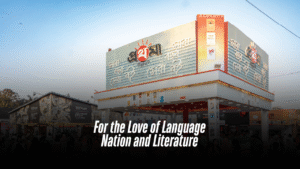
For the Love of Language Nation and Literature
With a new sun, new authorities emerge, revitalising familiar spaces. The 40th Ekushey Book Fair 2025, themed “July Mass Uprising: Building a New Bangladesh (New Bangladesh Deconstruction),” featured over 700 publishing houses at the premises of Bangla Academy and Suhrawardy Udyan. The month-long fair was inaugurated by Dr. Muhammad Yunus, the Chief Adviser of the interim government on 01 February. The Amar Ekushey Book Fair, a fundamental element of Bangladesh’s literary heritage, returned this year with a striking and visually captivating transformation. Uniquely crafted stalls add an architectural charm that sets this year’s fair apart from the previous editions. Visitors are greeted with the richness of literature and an impressive array of architecturally designed stalls, each presenting a unique identity. The influence of the new government is evident in the fair’s structured setup, where each stall showcases unique aesthetics through bold shapes, intricate exteriors, and thematic designs. When visiting this year’s Ekushey Book Fair, the crowd was astounding. People of all ages turned the fair into a true celebration. The entrance was bustling with various food vans, and women and children were all dressed up. The Book Fair has never been this festive and crowded in recent years, even on working days. Whether for recreation or out of love for books, the fair should continue in this spirit for eternity, celebrating Bangla language and literature. Readers and visitors took a moment to admire the aesthetics embraced by publishers who dedicated extra time and thought to beautifully decorate their pavilions. One of the highlights of this year’s book fair is the pavilion by Iti Prokashon, titled ‘Ziar Bari’ (Zia’s House), named after Ziaur Rahman, a prominent army chief, freedom fighter and politician who served as the sixth President of Bangladesh from 1977 to 1981. A key figure in the country’s War of Independence, Zia’s name has often been sidelined in public discourse and textbooks due to the agendas of the previous autocratic regime. In contrast, Onnodhara Prokashon transformed its pavilion into a representation of the Bangladesh Parliament House. The sight of these two distinct symbols coexisting on the same ground truly captivated visitors. Afsar Brothers gave their pavilion a harmonious blend of heritage and functionality, making it an inviting space for book lovers while paying homage to Bengal’s rich architectural traditions. The structure follows a half-timbered design with exposed wooden beams and white infill panels, resembling classic Bengali rural or zamindari house styles. Other notable mentions include Bishwa Shahitto Kendro, which transformed its pavilion into a two-story BRTC bus structure, paying homage to its Moving Library. Bhashachitro Publications adopted a minimal, monochrome palette, giving the pavilion a simple yet elegant look. Bengal Books chose a wooden pavilion, creating a soothing atmosphere for buyers with its well-decorated books and thoughtful lighting. The Puthiniloy stall featured a book-structured roof, while Gronthik designed its stall to resemble a mud house with bamboo. Shaishab Prakash’s stall is shaped like a whimsical castle, inviting readers into a world of children’s literature. These creative designs add a unique visual and conceptual dimension to the fair, making it not just a place for purchasing books but also for cultural and artistic appreciation. The best pavilion design goes to Batighar, designed by artist Shahinur Rahman. The triangular front featured a stained-glass-like panel with motifs from Nakshi Kantha and Patachitra, reflecting Bengali folk art. Inside, a red dome element, inspired by a Chhoto Sona Mosque, highlighted local heritage. The steeply pitched roof with exposed red clay tiles resembled traditional Bangladeshi huts. For its artistic excellence, Batighar won the Kayum Chowdhury Memorial Award for best pavilion in this year. Sadly, the kids’ section lacked vibrancy, with limited space for children to explore and freely roam around. However, a few stalls, including Shoishob Prokash, Mayurpankhi, and EKRI MIKRI, did a decent job of capturing the attention of young visitors. Shoishob Prokash transformed its stall into a castle-like structure, Mayurpankhi adhered to its palette with subtle adjustments, and EKRI MIKRI added a creative touch by placing a horse for children to play on, making the stall an engaging and fun experience for the little ones. This year, the fair included 66 more stalls than the previous year. 99 publishers were located at the Bangla Academy premises and 609 at the Suhrawardy Udyan area. There were 37 pavilions in total, with one at the Bangla Academy premises and 36 at Suhrawardy Udyan. The Little Magazine Corner had been set up in Suhrawardy Udyan, with 130 stalls. In the children’s corner, 74 institutions had been allocated. The fair also featured daily seminars and cultural programmes in the evening, and a special “Children’s Hour” held every Friday and Saturday from 11am to 1pm. As part of the Amar Ekushey celebrations, various children’s competitions, including art, recitation, and music, were organised. The fair had four entrance points: TSC, Doyel Chattar, MRT station, and Engineering Institute. Director General of Bangla Academy Mohammad Azam and Member Secretary of the Fair Management Committee Sarkar Amin said to Ceramic Bangladesh that the fair was entirely polythene and smoking-free, with security provided by the Police, RAB, Ansar, and various intelligence personnel. All participating institutions sold books on a 25% commission basis. The academy published 43 new books and reprinted 41 books for this fair. A total of 3,300 new titles were published in this Book Fair 2025 and Bangla Academy stall alone sold books worth Tk 61 lakh. Several awards were presented at the fair, including the Chittaranjan Saha Memorial Award for the best publisher, the Munir Chowdhury Memorial Award for artistic excellence, and the Rokanuzzaman Khan Dadabhai Memorial Award for children’s literature. These awards recognise the contributions of publishers and authors to the literary and cultural landscape of Bangladesh. Written By Fariha Hossain
Read More
A Fresh Look of WE SPACE with Inclusivity at its Core
In the bustling Gulshan North Avenue of Dhaka, a unique office concept in Bangladesh replaces traditional departmental segregation and hierarchy with freedom of workspace and teamwork. Located in a prime location of Dhaka’s business hub, WE SPACE is Woolworth’s Group’s Bangladesh office, co mprising an area of 6,300 square feet. The entire project was completed in 90 days, which was a challenge in itself. The spaces in this project have been designed with Woolworth’s inclusive concept of “WE” and togetherness in mind. This concept is reflected in the layout, flexible workspaces for users, and an interesting colour palette that complements the brand identity. As per the question, Sudeshna Shireen Chowdhury, the founder and principal architect of Studio.O, explained, “All functions are arranged together in a loop. If you enter the office from one side, you can come back and end up in the same space.” Inspired by the concept of “We Space,” the layout has been developed with a central collaborative social hub and town hall space as the heart of the office. Upon entering, a clean, central circulation spine welcomes the user into the space. This loop leads them towards designated zones, which are specifically marked to enable easy navigation. The design ensures universal access for both circulation and entry into all spaces, promoting proper orientation and mobility. Overall, the office space has been designed to be exceptionally user-friendly, showcasing unique details and features while upholding the brand identity of Woolworth’s Group. Architect Sudeshna explains that there are no designated seats or fixed workstations. The concept is for all functions to be connected in a loop, allowing users to enter from one side and return to the same space upon exiting the loop. The design team did not introduce a traditional reception area, as the other Woolworth’s offices do not have one either. The zoning prioritises common areas, meeting rooms, and a multifunctional room near the entrance for guests. The kitchen, designed more like a coffee pantry, is also placed near the entrance for easy access by guests. Public spaces are readily accessible upon entering the office. “As you move further inside, you’ll find the workspaces located near the terrace space,” as explained by Architect Sudeshna. All the furniture for this project has been locally sourced and designed, making it exclusive to the users and the office. Hatil provides modern, space-saving compactor storage that allows for a significant amount of storage within smaller areas. Height-adjustable tables and workstations were made locally using handmade techniques. The vibrant colour palette within the workstations incorporates orange and green shades. A unique feature is the collaborative table they designed. It can function as a whole table for four people or unfold into individual workspaces. One of the most striking features of the space is the ceiling. The Woolworth’s logo is cleverly incorporated as a ceiling light fixture, adding a unique and memorable touch to the ambiance. The clients loved this detail and are considering replicating it in our other branches to create a consistent and memorable brand experience. Vinyl flooring is used throughout the space, with a colour scheme that complements the blue ceiling light to further highlight the blue colour in the ceiling and the brand association as well. No partitions were used in open spaces; the variation in the texture of the floor materials separates the zones. Biophilic principles were considered throughout the design process. Planters were strategically placed to integrate nature into the workspace. The architect adds, “We always consider biophilic principles. So, we planned where the planters would go and designed accordingly.” The meeting room features a TV panel that doubles as a whiteboard, demonstrating a smart design element. Acoustics were also a priority. To minimise echo, a false ceiling with sound-absorbing panels was installed. Carpets were also used for the same purpose. In the main workspaces with exposed ceilings where talks and town hall meetings are held, sound-absorbing carpet flooring was used. Another unique addition to the project was the soundproof office pods for four people. “These pods are fully furnished, offer 85% sound absorption, and have their own ventilation systems,” explains Architect Sudeshna. She further adds, “Every space has its own identity. There is a focus zone, a collaborative zone, and a social zone, all with different kinds of identities and characters.” Completed in January 2023, WE SPACE is a collaborative project by the eminent architecture firms Studio.O and Binyash, located in Dhaka. The team of architects brainstormed together to come up with a concept that ensures efficiency, comfort, and a positive ambiance for office users. Architect Sudeshna Shireen Chowdhury concludes, “Working with the Woolworths team was an exceptional experience. We appreciate the unparalleled support from our partners.”
Read More
Real Estate Enthusiasts, Innovators Show Grand Confidence At REHAB Fair, Businesses Eye Mammoth Growth in the Ceramic Industry
The Real Estate and Housing Association of Bangladesh (REHAB) organised a five-day REHAB Fair-2024 at Bangabandhu International Conference Centre (BICC) in Dhaka, to bring together all stakeholders related to the real estate sector, including land developers, house builders, buyers, financial institutions, building materials companies, and ceramic companies. The fair concluded on December 27 with an overwhelming response from visitors and prospective buyers. It witnessed significant engagement with real estate enthusiasts and industry stakeholders. RAJUK Chairman Siddiqur Rahman Sarker inaugurated the fair on December 23. The event attracted about 18,000 visitors and buyers, showcasing its popularity among Dhaka residents and highlighting the strong interest in the real estate sector. REHAB leaders expressed satisfaction, stating that the event successfully met its objectives of promoting the housing sector and engaging the public. According to REHAB data, the fair saw flats, plots, and commercial spaces worth Tk 403 crore being sold and booked. Of the total amount, flats accounted for Tk 230 crore, plots Tk 96 crore, and commercial spaces Tk 77 crore. Additionally, bank loan commitments worth approximately Tk 1,090 crore were received for new projects. Sheltech’s Deputy General Manager (Sales) AKM Rafiul Islam highlighted the importance of the fair in showcasing their 50 new projects to customers. He emphasised that such fairs provide an opportunity to communicate with both new and existing clients. “Many clients come here and purchase their desired products after comparing with other companies. We received good customers at the fair,” he observed. Similarly, Mir Real Estate Ltd’s Head of Marketing and Sales, Md Abu Zahid, noted that the fair allowed them to introduce seven new projects to customers. He pointed out the challenges faced by the real estate sector due to the increased cost of doing business and the rising prices of construction materials. Mr Zahid called for government policy support to help the sector thrive. Ceramics : A New Phenomena in Real Estate The ceramic sector is a new phenomenon in real estate. The fair highlighted the growing importance of ceramics in the real estate sector. REHAB President Md Wahiduzzaman stated that the organisation has been arranging the fair for the past 26 years with the goal of bringing all stakeholders, including realtors, developers, buyers, financial institutions, building materials companies, and ceramic companies, under one platform for the industry’s development. He explained that ceramics play a crucial role in the finishing segment of construction, accounting for 60 per cent of a building’s finishing part. Because a building has two segments: 40 per cent construction and 60 per cent finishing. Ceramic is part of the finishing segment. Thus, the prices of apartments depend on the finishing aspect. The fair provided an excellent opportunity for ceramic companies to showcase their products and for buyers to choose their desired items. “I use ceramic tiles in my projects, and thanks to the tile companies, we can finish building works smoothly,” Mr Wahiduzzaman mentioned. In response to a query, he mentioned that realtors seek quality products with good finishing and well-burnt tiles. “I prefer homogeneous tiles, but I have to change them due to client demands,” he said. Buyers looking to purchase plots and apartments can choose their desired properties by visiting different companies’ stalls at the fair. They can also examine products’ quality and legal issues. REHAB assists buyers, as only REHAB members can participate in the fair. Mr Wahiduzzaman also addressed the challenges faced by the real estate sector, including high registration costs, VAT, and taxes, as well as reduced ADP project implementation in the real estate sector due to the economic slowdown. He expressed optimism about the industry’s recovery by 2025 with proper government policy support. “We are working to fulfill the dreams of the citizens,” he stated. However, in the post-Covid-19 period, the business has faced a sluggish situation. Such fairs help grow business and trade. The demand for both tiles and sanitaryware is increasing significantly in the country. “But gas is crucial to ensure quality ceramic products. I planned to manufacture ceramic items but reconsidered due to the gas supply crisis,” he explained Hints at Ceramic Industry’s Growth The Chairman of the REHAB Fair-2024 Committee, Mohammad Akter Biswas said that more than 200 related industries, including rod, cement, tiles, and electrical equipment, and approximately three crore people are directly and indirectly linked to the sector, which accounts for 12%-15% of the GDP. “Various construction materials such as tiles and financial institutions participated in the expo. Buyers have the opportunity to choose their apartments after discussing with many companies at the fair,” he added. The growth of the ceramic industry was also highlighted, as several tiles and sanitary companies have started manufacturing high-quality ceramic products that meet international standards and are exported to different countries. Earlier, imported products were commonly used, but now the ceramic industry has become significant in Bangladesh. He underscored the importance of the REHAB Fair in bringing all buyers and sellers under one umbrella, allowing them to explore various construction materials and financial solutions. The REHAB Fair-2024 was a resounding success, bringing together a diverse range of stakeholders and facilitating significant transactions and commitments. The event highlighted the growing importance of innovation and sustainability in the real estate sector, with a particular focus on the role of ceramics. As the industry continues to evolve, the REHAB Fair remains a crucial platform for promoting growth, fostering collaboration, and addressing the challenges and opportunities faced by the sector. Written by Rafikul Islam
Read More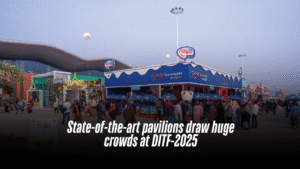
State-of-the-art pavilions draw huge crowds at DITF-2025
With a view to attracting local and foreign visitors, the exhibitors of the month-long 29th Dhaka International Trade Fair (DITF)-2025 brought innovative architectural view at their pavilions and stalls made of various materials such as steel, board, wood, bamboo, electric cables, lights, colour and ceramic items. Chief Adviser to the Interim Government Prof Dr Muhammad Yunus inaugurated the fair at the Bangladesh-China Friendship Exhibition Centre in Purbachal, Narayanganj on 1 January, 2025. Commerce Adviser Sk Bashir Uddin and Export Promotion Bureau (EPB) Vice-Chairman Md Anwar Hossain also attended the opening ceremony. This year, 343 domestic and foreign companies took part in the fair, including 11 companies from India, Pakistan, Turkey, Singapore, Indonesia, Hong Kong and Malaysia in addition to Bangladesh. Last year, 304 companies participated in the fair, including 9 foreign companies from 5 countries. The companies set up premium pavilions, mini pavilions, and reserved pavilions at the fair venue to display various products including textiles, furniture, electrical and electronics, jute and jute products, leather products, machineries, cosmetics, home furnishings, toys, stationery, crockery, plastics, melamine, herbal and toiletries, imitation jewellery, processed food, fast food, and handicrafts. Of them, many exhibitors also offered discounts ranging from 5 to 50 per cent as well there to attract more buyers. The Ministry of Commerce and EPB have organised DITF since 1995 to promote export growth and market diversification. This is the third edition at its new venue in Purbachal, following the relocation from Sher-e-Bangla Nagar in 2022. Pavilions and stalls were awarded due to innovative architectural view The best pavilions, stalls and organizations participating in various categories were recognized by presenting crests at the closing ceremony of the fair. The first prize was awarded to 22 best companies in different categories (Kiam Metal Industries Limited, Akij Plastics Limited, RFL Plastics Limited, Prisons Department, Pran Agro Limited, M/s. Helal & Brothers, Sena Kalyan Sangstha, JDPC, BGMEA, BKMEA, Hatil Complex Ltd., Jamuna Electronics & Automobiles Ltd., Navana Furniture Limited, Vision Electronics, SME Foundation, BSCIC, Orijinal Istanbul Kristal, Turkey, Pentel (Singapore) PTE Ltd., Singapore, Kewpie Malaysia SDN, BHD, Malaysia, Sonali Bank PLC, Islami Bank Bangladesh PLC and People’s Leather Industries. The second prize was awarded to 16 companies in different categories (Savoy Ice Cream Factory Ltd., Square Food & Beverage Ltd., KY Two Tone Ltd., Alloy Aluminum Furniture Limited, Exclusive Home Tex Industries Limited, Bangladesh Machine Tools Factory Limited, Bangladesh Tea Board, Nadia Furniture Limited, Minister Hi-Tech Park Limited, Brothers Furniture, Hatim Steel Structure Limited, JMG International, Hadeks Hali DeriTekstil Dis Tic A.S., Turkey, PT Nissin Foods, Indonesia, Rabab Trading International, Hong Kong and Dutch Bangla Bank PLC. The third prize was awarded to 13 companies in different categories (Delhi Aluminium Factory, Abul Khair Milk Products Limited, SKB Stainless Steel Mills Limited, Abdul Monem Limited, BRB Cable Industries Limited, Leathergoods and Footwear Manufacturers and Exporters Association of Bangladesh, Rangpur Metal Industries-Regal Furniture, Walton Hi-Tech Industries PLC, Joyita Foundation, Messrs. Nurul Textile, M/S Tarique Carpet Industries, Indian Carpet Industries, and Indian Oriental Carpet, India). Touhiduzzaman, Deputy General Manager [Public Relations] PRAN-RFL Group said, “We have a lot of products like food stuffs, plastics items, furniture, and electronics. We display the products for customers at the exhibition every year. We receive the best pavilion awarded each year due to innovative architectural view.’ He pointed out that they always try to build their pavilion at the fair venue with excellent architectural views in new shapes to draw large crowds. “As there is a limited space and it is a temporary place, so we build our stalls considering it. After getting tender from the EPB, we talk to different firms of interior designers and architects. Basically they set up the pavilion as per our direction,” he added. Touhiduzzaman stated that the stalls are set up by different construction materials like wood board, steels, tiles, bricks and others. He remarked that their main goal is to attract more customers. We decorate our stalls focusing our products. We will try to make the best pavilions in coming days as well,” he also commented. Mahin Sarker, Pavilion In-Charge of Square Food & Beverage, noted that their stall has been a hotspot for visitors due to excellent architectural views. Our pavilion got the second best pavilion award this year. “We offered up to a 50% discount on our food and beverage items, so a lot of people purchased our products. Additionally, as our company set up an attractive pavilion so visitors drew largely here,” he added. Another a-three day fair only for exportable items in October/November Talking to the Ceramic Bangladesh, CEO and Vice-Chairman of the EPB Md. Anwar Hossain said they tried to bring excellent architectural view in the DITF-2025. At the first time, we introduced innovative features and enhance the fair’s experience for visitors, particularly after the historic student-led revolution on 5 August, 2024. “We introduced new attractions like the 36-July Chattar and Mugdha-Sayyed Corner to showcase the revolution’s impact. Additionally, visitors enter the fair with e-tickets, eliminating the hassle of manual ticket collection.” Hossain emphasised the fair’s role in supporting local businesses and diversifying products to boost foreign currency earnings. “We invited many ceramic companies but they did not give positive response in the fair. We hope that in the next year fair, we can attract many ceramic companies in the expo as it is the potential and exportable products. “We try to organize another a-three day expo at the first time at Purbachal venue in October or November where only exportable products will be displayed. It will help to attract more foreigners. We have no actual data on foreign visitors that how many foreign visitors visited the DITF-2025 and export orders too but many foreign visitors came here,” he highlighted.
Read More
AkijBashir Group hosts ROSA Bathware’s Business conference of 2025
AkijBashir Group recently concluded a grand day long ROSA bathware’s business conference of 2025, Evolve Beyond, at the CCULB Resort, Purbachal. The event brought together over 300+ business associates from the Group’s premium bathware brand Rosa. The conference served as a platform to align strategies and set ambitious goals for the upcoming year, while also celebrating the company’s remarkable achievements. Managing Director of AkijBashir Group Mr. Taslim Md. Khan, Chief Operating Officer Mr. Mohammod Khourshed Alam with all sales and marketing officials participated in the event. The conference featured strategic discussions, an award ceremony, and a vibrant cultural gala night, fostering collaboration and inspiration among all attendees. This remarkable event reflects AkijBashir Group's commitment to innovation, growth, and excellence in business.
Read More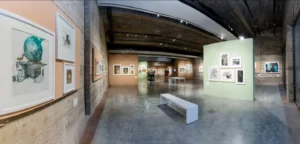
Brishtite Roder Kona’ reminisces Kazi Abdul Baset
The ongoing exhibition titled ‘Brishtite Roder Kona’ at Bengal Shilpalay lets new audiences be introduced to the works of one of the finest artists from Bangladesh, Kazi Abdul Baset. In an age when electricity has reached even the most remote corners of Bangladesh and air conditioning is ubiquitous, the image of a woman cooling herself with a traditional handheld fan may appear to be a relic of the past. However, this simple act of seeking relief from the heat was immortalised in the works of Baset. While his works are rarely exhibited these days, the exhibition at Bengal Gallery in Dhanmondi has provided a unique opportunity to view a comprehensive collection of his work. The exhibition features 72 pieces in a variety of mediums, including acrylic, pastel, charcoal, watercolour, and ink drawings. The artworks are all from private collections and have been generously shared to introduce Baset’s genius to a new generation. Kazi Abdul Baset’s legacy is enormous but unappreciated. Baset, a humble and introverted guy, was recognised for his plain pyjama and grey panjabi outfit, as well as his rigorous guidance of his students. He received a Fulbright scholarship and studied in Chicago from 1963 to 1964. Baset’s work has a unique blend of figurative and abstract styles. Despite his modernist approach, Baset’s themes frequently revolved around the simplicity and beauty of rural life, capturing its essence with profound depth. His depictions of rural women and domestic life added a new dimension to modern Bangladeshi art, specially his paintings of woman with a fan becoming almost a trademark of his artistic identity. Baset had a close relationship with fellow artist Mohammad Kibria, another shining light in Bangladesh’s art history, and analogies between their works were frequently made. Their mutual influence and inspiration resulted in considerable artistic synergy, which shaped Bangladesh’s art scene in the 1960’s. Baset began his career as an art teacher at Nawabpur High School, where other notable figures such as Mohammad Kibria and Murtaza Bashir taught. Baset’s artistic development—from his early realistic images of rural life to his later experimentation with abstraction and return to realism—reflects a dynamic and diversified artistic journey. This show at Bengal Gallery is a fitting tribute to the brilliance of Kazi Abdul Baset, providing spectators with a unique opportunity to immerse themselves in the works of a master who caught the soul of Bangladesh with unsurpassed sensitivity. Presented by Bengal Arts Programme, the exhibition walls adorns the works of Baset which he produced between the 1960’s and 1990’s. All the works being showcased are collected from the personal collections of Abul Khair, Abul Hasnat-Nasimun Ara Haque, Matiur Rahman and Luva Nahid Choudhury. Open for all, the exhibition commenced on 8 November 2024 and will run till 11 January 2025. Written by Shahbaz Nahian
Read More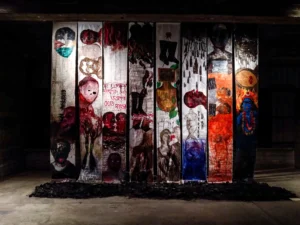
Body and the Map: Of wounds and Hope
Beautifully curated by Sharmillie Rahman, the exhibition “Body and the Map” took place on Bengal Shilpalay between 15 and 28 December, 2024. By engaging viewers to contemplate the interaction of power, identity, and transition, “Body and the Map” was more than just another decent exhibition that had the July-August uprising as its subject matter; the exhibition not only acted as a stark reminder about what must not be forgotten but also intrigued the audiences to introspect. Consisting of the artworks of ten multidisciplinary artists, many of whom were active participants in the mass uprising that overthrew a long-standing regime, “Body and the Map” was a riveting look at societal upheaval in the aftermath of that student-led mass rebellion. The show, based on the collective memory of Bangladesh’s last July-August, is both a reflection and a debate about the force of resistance, the weight of trauma, and the possibility of change. Their work delves into the complicated reality of a country dealing with its old and fresh scars and the tiers of collective psychological state of the mass after the newfound independence. The participating artists were A. Asan, Afsana Sharmin, Ashang Mong, Farzana Ahmed, Mong Mong Shay, Niazuddin Ahmmed, Palash Bhattacharjee, Rasel Rana, Razib Datta, and Ripon Saha. The July-August uprising was characterised by an unprecedented feeling of urgency, as residents defied persecution to demand justice, equality, and dignity. However, the road to liberation came at a high cost, with bodies mutilated, lives lost, and a collective psyche permanently transformed. The show explores this dichotomy, emphasising the body as both a personal and societal vessel for history, pain, and resilience. The artworks that were adorned by the gallery space delve deeply into the concept of the body as a source of memory and resistance. Whether through physical depictions or abstract interpretations, the ten artists highlighted how the human body bears the weight of institutional injustice and governmental violence. The visual narratives starkly remind us about biopolitical disposability, demonstrating how individuals became victims of normalised violence during the authoritarian system. The relationship between body and land appears as a repeating pattern, emphasising identities defined by culture, religion, race, and gender, all of which intersect within a nation’s sovereign borders. However, these links are loaded with tension, since the scars of authoritarian authority and systematic impunity are etched on both the body and map. In the aftermath of this historic movement, “Body and the Map” illustrated the dialectics of trauma and renewal, hopelessness and optimism. The exhibition stressed the importance of open discourse and the reframing of identity and government as centralised power disintegrates and something new emerges. Despite recollections of terror, violence, and loss, the artworks elicit a cautious hope. The collective body politic, though scarred, remains resilient, signalling a determination to redefine itself and the map it inhabits. Written by Shahbaz Nahian
Read More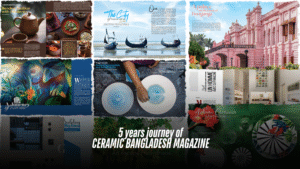
5 years journey of CERAMIC BANGLADESH MAGAZINE
Walking through the memory lane, the 5-year journey of Ceramic Bangladesh Magazine seems like a dream of yesterday. During the planning of the Ceramic Expo Bangladesh 2019, the magazine began its journey by providing complimentary copies to exhibitors to educate them about the ceramic industry in Bangladesh. Along with the success of the Ceramic Expo Bangladesh 2019, everyone particularly praised the magazine, which encouraged us to come up with the next issue in 2021. Chief Editor Mr. Irfan Uddin was recollecting the memories in this way while sharing his experience of working closely with the magazine. Initially, the magazine focused on Bangladesh’s ceramic industry, its overall future, prospects, growth, etc., to bring limelight to the overall sector. Due to Covid-19, it was impossible to continue the publication in 2020. But after that, Ceramic Bangladesh was publishing full-fledged from 2021 at the end of the year. Since then, the magazine has completed its 13th issue and plans to publish bimonthly from 2025. The journey was a rollercoaster for all the team members, along with the editor, sub-editor, coordinator, designer, photographer, and writers. Everyone took a leap of faith to explore a new publication arena with their enthusiasm, interest, and love for taking challenges. The editor of the magazine, Salahuddin A. Talukder, expressed his immense affection for Ceramic Bangladesh Magazine. It was a challenge to sustain the magazine and keep up the top-notch quality so that it would be liked and praised by all. The projects we have focused on were unique and interesting, and each one has a new way of unfolding the journey of development and growth in Bangladesh. While interviewing the subeditor, Rehnuma Tasnim Sheefa, it was really interesting to know how they came up with the names of the segments and selected projects to feature initially. Reminiscing on the initial projects and works, she mentioned that at the beginning, most of the write-ups were done by the editor, Salahuddin Ahmaad Talukder, and himself, along with 2 to 3 writers. Photographer Junaid Hasan Pranto and designer Ali Haider created magic with their photography and layout to make those features alive by narrating a story visually for the readers. The 1st issue of the magazine was prepared by Ant Network, which encouraged BCMEA board members to approve the work of the publication and enable BCMEA to work on the magazine internally. With the publication of the 2nd issue, considering the contribution of the architects and their close involvement with the ceramic industry in their projects, the magazine started to focus on architects and their significant works, various mega projects, interior and exterior insights, industry-related content, and some exclusive and unique projects related to the use of tableware, tiles, ceramic bricks, sanitaryware, etc. Through the magazine, readers learned that Bangladesh is the only country where the maximum number of national establishments are made with red ceramic bricks, a matter of pride for the ceramic industry. There were also some interesting coverages of the projects from a wide range of collections under different segments. For example, for the segment Architectural Regime, Alenbari Mosque of PWD was featured, which is a geometric-shaped prayer space with a dramatic skylight that represents the combination of art and architecture in every part of the project. The feature on Monno Ceramic for Ceramic Central reminds the reader about the legacy of ceramic tableware in Bangladesh, which has created a corner in every showcase of each household and the heart of Bengali mothers. Under Suasive senses, unique ideas like Ajo Idea Space use their own crockery sets to serve their food sustainably and reduce the wastage of food. Some of the exclusive features of the brilliant minds of the country were presented through the magazine. Architect Rafiq Azam recalled his childhood memories and newfound inspiration for sustainable architecture practices from his surroundings, exploring new arenas of work that are inspirations to many young architects. The creator of the new city skyline Architect Mustapha Khalid Palash unfolds the dream of making the city more sustainable and living worthy for the city dwellers. The Mason Master Architect Mohammad Foyez Ullah’s projects represent the combination of modern architecture by designing sleek concrete buildings and making them stand out to praise the beauty of the creation. Apart from them, Architect Mamnoon Murshed Chowdhury, Architect Mahmudul Anwar Riyaad, Architect Tanya Karim, Architect Nurur Rahman Khan, Architect Masudur Rahman Khan, and Architect Salauddin Ahmed’s contributions and journeys of their personal and professional lives are worthy to explore through the magazine. They have shared their life journey, learning, and their experiences under the architectural regime segment. It was a documentation of the living legends and the inspiration behind their creations through the magazine for future generations, added by Sheefa. In the segment Interior Insight, we featured different well-designed restaurants and offices. Some features were also on entrepreneurial stories to encourage new people to start their journeys in similar industries. Exclusive mega projects like MetroRail, Padma Bridge, Kamlapur Railway Station, etc. were also highlighted in the cover stories of our magazine. In the Heritage segment, sites like Lalbagh Kella, Tara Mosque, Shat Gambuj Mosque, Terracotta Temple, etc. were also covered. In parallel, we also focused on scenic sights, covering touristy destinations. From financial institutes to real estate, we have tried our best to cover the wide band. Ceramic Bangladesh Magazine has grown with some excellent team members. Without their dedication and utmost effort, it would not be possible to come such a long way. The former core team members of BCMEA, Mahfuza Tasnim Noshin, Kazi Sumaiya Ahmed, and Anamika Rahman, shared their journey with the magazine as they have closely worked with the CBM since its initiation. They shared their utmost affection and recalled their journey while working on such an interesting project from scratch. To sum up the journey of Ceramic Bangladesh Magazine, the dedication, effort, and consistency of all the team members is remarkable. Without their continuous
Read More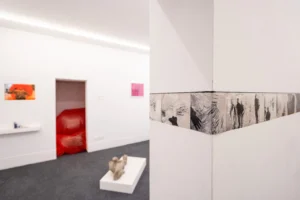
Liminal Horizon: Body, existence & Introspection
“Liminal Horizon,” the solo exhibition of artist Sanad Biswas that took place between 14 and 7 January at the capital’s Kala Kendra, is one of the most fascinating sculpture exhibitions in recent memory of post-pandemic Dhaka’s vibrantly growing exhibition scene. From quirky humanoid figures and brightly coloured and inflated ballooning bodies to disembodied internal organs, Sanad’s sculptures have an aura of eerie sensuality mixed with humour. They appear visually strange to our eyes, but the feelings we perceive are bizarrely familiar to our soul, and they intrigue questions about our fragility and existence as human beings, living and surviving amongst the complexities of the modern world. Although primarily a sculpture exhibition, it consisted of relevant paintings, drawings, installations, and photographs of performance art by the artist as well. This exhibition is also like a diary of Sanad’s almost two decades of art practice. “The world that we live in right now has its tiers of complications. And as human beings, our immediate surroundings and even global circumstances in this era of a world connected through the devices in our hands always have an effect on us, both mentally and physically. The artworks that are shown in this exhibition are artistic manifestations of my psychological journey, how I reacted to certain contexts. For example, the characters in my works are sometimes satirical, sometimes dramatic and colourful, and sometimes they suffer from existential crises!” said artist Sanad Biswas. Another highlight of this exhibition is the beautifully done curation. Curating a show inside a space like Kala Kendra is always challenging, as it is basically a ground-floor part of a residence and not originally designed to be a gallery. But artist Sanjid Mahmud gracefully accomplished the difficult task of dealing with such a space and devised a neatly designed exhibition. “This exhibition was not pre-planned. Sanad had been devotedly working for a long time now; hence, naturally, he has an assemblage of amazing artworks that has a certain coherence that subtly reverberates that they are Sanad’s works. Later, we decided to organise this exhibition. And as a curator, designing a sculpture show inside a space like Kala Kendra was also a challenging task,” said artist Sanjid Mahmud, who is the curator of the exhibition. “Compared to the existing types of sculpting practice that we see in our local art scene, Sanad’s works are starkly different. His works are compelling even in the standard of global contemporary art,” Sanjid further added. With their few other artist friends, Sanad Biswas and Sanjid Mahmud runs their art collective Daagi Art Garage. Although not a familiar name outside our local art scene, this Dhaka-based young art collective, is one of the finest in their genre in Bangladesh. Daagi’s own space, Studio Bhashkarmi, is in the capital’s Hazaribagh area. Written by Shahbaz Nahian
Read More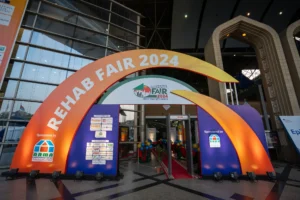
REHAB Fair 2024 Concludes with Overwhelming Turnout and Promising Prospects
The five-day REHAB Fair 2024, organized by the Real Estate & Housing Association of Bangladesh (REHAB), concluded on December 27 at the Bangabandhu International Conference Centre (BICC) with remarkable success. Drawing 17,729 visitors, the event showcased the growing potential of the real estate sector, featuring stakeholders such as land developers, builders, financial institutions, and ceramic companies. RAJUK Chairman Siddiqur Rahman Sarkar inaugurated the fair on December 23. REHAB reported sales and bookings worth Tk 403.13 crore, comprising flats (Tk 230 crore), plots (Tk 96 crore), and commercial spaces (Tk 77.12 crore). Additionally, banks committed approximately Tk 1,090 crore in loans. Prominent real estate companies like Sheltech and Mir Real Estate used the platform to showcase new projects and connect with clients. “The fair helps us engage with old and new customers while facilitating direct comparisons across companies,” noted Sheltech’s Deputy GM, AKM Rafiul Islam. The fair also highlighted the ceramic industry’s growing influence in real estate. REHAB President Md. Wahiduzzaman emphasized that ceramics now constitute a significant part of a building’s finishing phase, accounting for 60% of total construction. Ceramic companies had a strong presence, showcasing high-quality tiles and tableware, which are increasingly in demand. The fair committee chairman, Mohammed Akter Biswas, underscored the industry’s impact, with 12-15% of the GDP linked to real estate and related industries like rod, cement, and tiles. He praised the fair’s role in uniting buyers and sellers, offering customers the chance to explore a wide range of products and services under one roof. REHAB leaders expressed optimism about the sector’s recovery by 2025, contingent on supportive government policies addressing challenges like high registration costs, VAT, and the economic slowdown. The event’s success reinforces its importance in fostering growth and innovation in Bangladesh’s real estate industry.
Read More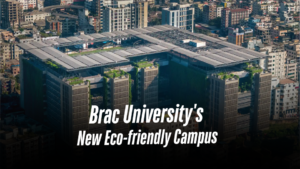
Brac University’s New Eco-friendly Campus: A Blend of Nature and Innovation
As you travel from Rampura to Badda in Dhaka, the imposing concrete structure in Merul Badda is hard to miss. Initially, it might seem like an industrial or commercial complex due to its sheer size on just 7 acres of densely populated land. However, its true purpose as a university is revealed once you step inside. The ‘triple height space’ design allows for free access to light and air, featuring long escalators connecting various parts, amphitheater-like stairs, and several ‘urban windows’ at the top. The building eschews unnecessary glitter, embracing the raw form of brick and concrete both inside and out. The carefully arranged garden adds a touch of greenery, making it an inviting space for students without any sense of grandeur. Inspired by the Sundarbans ecosystem, Brac University’s new campus seamlessly blends nature with architecture. Designed and constructed by experts from Singapore, China, and Germany, this campus in Merul Badda, Dhaka, stands as Bangladesh’s first eco-friendly and sustainable inner-city campus. Last February, Brac University’s new campus was inaugurated with the theme “In the call of green, the call of the future.” Tamara Hasan Abed, Chairperson of the Board of Trustees of Brac University, highlighted the university’s commitments to academic excellence, cultural prosperity, and environmental conservation. She also spoke about the university’s goals and plans to promote a holistic educational experience through environmentally friendly activities, local performances, and discussions. Founded by Sir Fazle Hasan Abed, Brac has always distinguished itself through various creative and innovative initiatives. Over the past two decades, Brac University has achieved significant milestones in higher education, research, and international competitions. Despite this, the lack of a permanent campus was a major limitation. Although there was a residential campus in Savar, it was only available to students for one semester. All other educational activities were conducted in multiple multi-storied buildings in the Mohakhali area. The new Merul Badda campus now provides a permanent, eco-friendly, and sustainable space for all students. Designed by the r e n o w n e d S i n g a p o r e – b a s e d architectural firm WOHA Designs Pte Ltd., Brac University’s new campus is a marvel of modern architecture. Key figures involved in the project include Professor Fuad Hasan Mallick, Dean of Brac University’s School of Architecture and Design; Zainab Farooqui Ali, Chairperson of the Department of Architecture; and Project Architect Shafiqul Islam Suman. This 13-story building with three basements is designed to accommodate around 15,000 students, reflecting a commitment to environmental consciousness. The design allows natural light and air to flow freely, featuring state-of-the-art facilities. Cutting-edge technologies such as cross ventilation, a hybrid thermal management system, and aerodynamic fins ensure optimal airflow. The greenery covering the building enhances the oxygen supply, while the hybrid cooling system maintains clean air in classrooms, helping students stay focused for longer periods. Impressively, the building saves 40% of its energy by reducing reliance on air conditioning. The campus sits on a transparent reservoir, with rain chains installed to collect and store rainwater, which is used to irrigate the building’s plants, and any excess fills the reservoir. Additionally, the campus boasts an advanced sewage treatment plant for waste management. This energy-efficient design uses a total of 5.5 megawatts of electricity, with 25% sourced from solar panels on the roof. For a facility of this size, this is considerably efficient compared to the usual 8 to 10 megawatts typically required. The interior of this aesthetically pleasing building is mostly open space, encouraging student interaction, extracurricular activities, and co-curricular engagements. Design considerations also include universal accessibility standards, ensuring ease of movement for people with special needs or disabilities. The new campus is not only a hub of academic excellence but also a beacon of sustainability and innovation, paving the way for future educational institutions in Bangladesh. Tamara Hasan Abed, Chairperson of the Board of Trustees of Brac University, emphasized the inspiration behind the eco-friendly campus and the educational philosophy of Brac University’s founder, Sir Fazle Hasan Abed. She explained that Sir Abed envisioned a university where education and free intellect would harmonize with nature. This new campus, a blend of nature and modern architecture, aims to teach future generations to think differently about life. She also highlighted the importance of innovation and creativity in urban development to protect nature. This campus will set a benchmark for students, planners, and stakeholders in urban planning and e n v i r o n m e n t a l conservation. Acting Vice-Chancellor Professor Syed Mahfuzul Aziz expressed his determination to develop Brac University’s new campus as a laboratory of knowledge and science. He stated, “We aim to develop this new campus of Brac University as a laboratory of knowledge and science. We expect that we will develop this university as a flagship university of Bangladesh by providing quality research and high-quality education. We are working towards that goal.” Professor Dr. Fuad Hasan Mallick, Dean of the School of Architecture and Design at Brac University, mentioned that discussions about building a permanent campus began after the establishment of Brac University in 2001. Several discussions with Sir Fazle Hasan Abed led to the selection of Merul Badda as the site for the new campus. One challenge was finding such a large land area in Dhaka, and Sir Abed wanted the campus to be located in Dhaka itself. In 2009, Sir Abed started planning the campus’s construction and selecting who would build it. He aimed for a world-class and exemplary campus that students could be proud of. The responsibility of designing the building was given to Singapore-based firm WOHA, known for their environmentally friendly designs. Sir Abed also appointed legendary Bangladeshi architect Bashirul Haque as an advisor for the project. Once the functional program for the campus was determined, the draft was finalized with key figures, including the dean and chairperson of the university. Fuad Hasan Mallick then visited the WOHA office in Singapore to discuss the campus’s design, and they developed a scheme.
Read More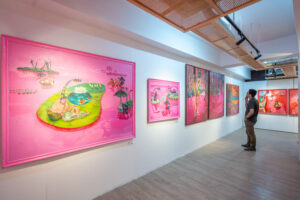
‘Solastalgia’: Fragments of a fading horizon
From October 19 to November 16, Platforms will host Auntora Mehrukh Azad’s solo exhibition “Solastalgia: Fragments of a Fading Horizon,” at its gallery in Pragati Sarani, Baridhara, Dhaka from 11am to 8pm daily. Her work is inspired by the universal and personal feelings of environmental change, with a particular focus on Bangladesh’s rivers and landscapes. Azad’s art explores the impact of environmental loss, displacement and transformation in rural and urban landscapes from the Sundarbans to Dhaka. All the art enthusiasts, collectors, and connoisseurs are invited to explore Azad’s evocative works.
Read More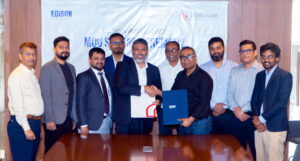
AkijBashir Group and Edison Real Estate Forge Strategic Partnership to Enhance Customer Experience
AkijBashir Group and Edison Real Estate Limited, have formed a strategic partnership to
enhance customer value and offer exclusive benefits. This collaboration will provide exclusive
perks to members of the Edison Royal Club, a loyalty program designed for Edison Real
Estate's esteemed clients.
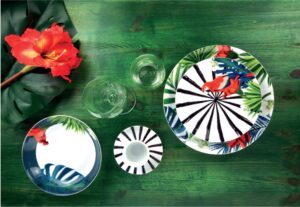
Spotlight Artisan Ceramics at the forefront (04)
Amongst the Royal collection in the Buckingham Palace resides gold-covered renditions of Artisan Ceramics. From a company struggling to export, to winning the national export trophy five times in a row, Artisan Ceramics has seen 3 times expansion over the past few years. The entirety of a company’s growth and success inevitably relies on the decisions made internally. Artisan Ceramics Ltd. suffered significant loss until 2011. With new leadership under Finlays, and a change in the modality of business and redesigning, it now has a factory constructed across six acres of land in Sreepur, Gazipur, and a capacity of producing 10 million pieces of assorted premium quality porcelain tableware annually. The current expansion will raise this capacity to 22 million. Artisan Ceramics is an export-oriented tableware company that supplies to over 20 countries across Europe, America, and Asia, and has evolved into a leading manufacturer with no stop to its growth. The company has a contribution of 12-15 percent in the national export revenue. Surely, success in such a short time is a wonder on its own. To find out more, Ceramic Bangladesh Magazine author recently had the opportunity to discuss the adaptations of Artisan Ceramics that led to its success, with M. Mamunur Rashid, CEO of Artisan Ceramics Ltd. Here’s what we’ve learned: The first adaptation Artisan knew Saggar firing was wasteful Saggar or Saguaro is a covering used over ceramic ware when under intensive firing in the kilns. This protection helps safeguard the ware from coming in direct contact with the Kiln, debris inside the kiln, and other gases and smoke. The problem with saggar firing is that the saggar heats up first and then transfers the heat to the product; this makes the process 15-hour long cycle. With Artisan’s adaptation, open and fast firing, it’s a six-hour firing process. “Time-wise and price-wise, Saggar is inefficient. Again, there is the cost of the man behind the machine,” says Mr. Rashid. Fired three times for a longer life! “I have traveled across more than 10 countries just to see the technology companies have adopted, and learned, that the type of products we tend to manufacture are widely unavailable,” said Mr. Rashid. “We have products that have been fired three times, which make them much more durable. These products are more popular in Europe since they are more durable and can withstand knives and forks,” he added. At Artisan, products are fired at high degrees of temperatures — 1330°C to 1350°C, about 100° higher than the global rivals. Discussing global demand with relevance to this particular firing process, we find: “The hard glaze we are using, makes the product stronger, more scratch-proof, and absorption free,” said Mr. Rashid. The global demand has shifted towards such products because of such features. Raw materials sourced from around the world Artisan Ceramics sources its raw materials from almost every corner of the globe –the UK, Germany, Italy, New Zealand, Vietnam, Japan, China, and India are some of them. The two types of minerals that make up for 50% of the body, feldspar, and quartz, are brought in from Rajasthan, India. The company also imports alumina which is used to make the body stronger and helps meet HoReCa standards. “Using the best quality raw material with a natural colour is important because the glaze is translucent and the body colour is what you see,” he said. These designs are in trend now and a personal favourite of Mr. Rashid. The company even imports from specific mines. Furthermore, Artisan buys the best quality gold from Heraeus Germany and colors from Izawa Pigments, Japan. Innovative Designs that go well with the trend, and the technology behind it. Artisan is constantly working on new designs. “We are innovating and have recently created double-layer body tea cup that keeps tea & coffee warm for a longer period of time,” Mr. Rashid mentioned. The design depends on customer trends and comes in cyclic order, says Mr. Rashid. Something that is currently trending are reactive glazes where you allow the finishing to be exactly how the kilns are making them fascinate many people. “Keeping up with the ever-evolving trends is a constant challenge, but traditional designs have resurfaced and are a popular preference now,” said Mr. Rashid. Artisan will be introducing a certain collection inspired by the Rajasthani culture. A designer from Sri Lanka by the name of Sudath Fernando is also coming in to train employees. Stay tuned with us for future features. Regarding technology, he said: “We want to make our factory fuel efficient. Our dryers are like ovens that collect heat and reuse it. I have visited a few factories in Europe and have seen how they are doing things, we have called SACMI, Italy, to help us upgrade.” The machines at Artisan’s factory are from the USA, the UK, Japan, Taiwan, and China. Artisan has taken green initiatives- they refine and reuse 90% of wastewater, collect rainwater in underground tanks, and reuse heat from the ovens. The company purifies water to the extent that it can be used for irrigation. “Every factory is concerned and the government is putting emphasis on sustainable approaches,” stated Mr. Rashid. Artisan’s plan to sell in bulk Following the recent expansion, Artisan is now concentrating on bulk buyers- examples would be hypermarkets. The marketing team is also trying to bring about a trend change by promoting the use of porcelain over bone china. This is because the water absorption of Bone China is high, it loses colour, and porcelain survives longer. Ultra Bone Porcelain: the newest innovation from Artisan Some customers are price-centric and some look for quality. That is why Artisan needed to innovate a new product retaining the same mechanical strength of pure porcelain and exceptional whiteness that was sure to win people over. Henceforth, came the Ultra Bone Porcelain. Mr. Rashid introduced a special body that can beat the competition and customers are willing to pay premium price for it. Artisan performs CSR Artisan gives education
Read More
